




Poultry Federation set for big stage
The Poultry Federation’s Marvin Childers 2025
INSIDE: Generational Businesses | Nursing | Dynamic Duos
Shyenne Graves, BSN, RN
Cardiac ICU
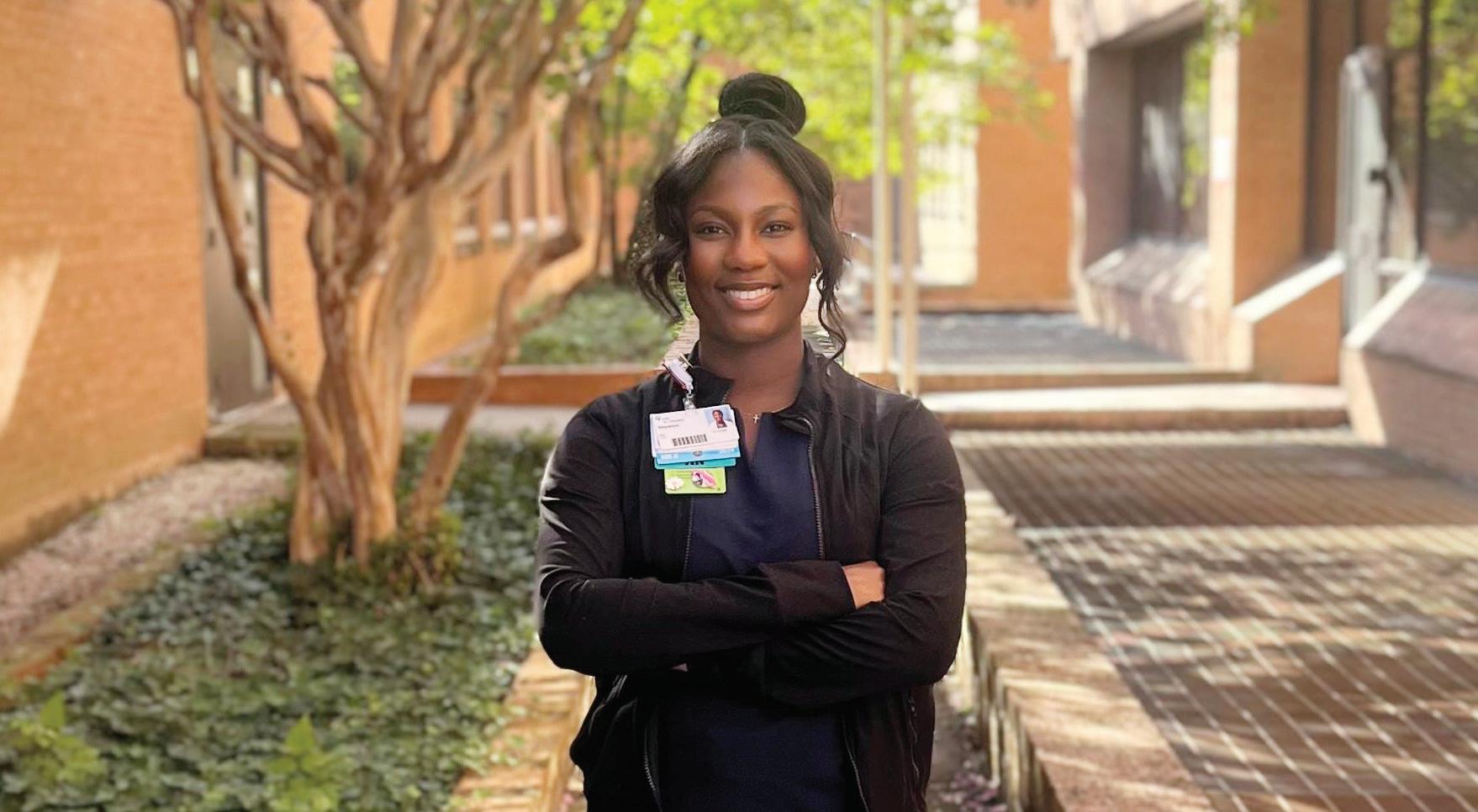
Shyenne provides care for patients in the Cardiac ICU.
“I’ve worked at other hospitals, but when you have good leadership and coworkers, the day goes by better. This is the best group I have worked with. Our leadership supports advancement, and I got my BSN through tuition reimbursement.”
Join Shyenne and become part of our work family. $25k sign on bonus for 1+ year bedside experience and $15k for less than a year!
commonspirit.org/careers
Through steel fabrication, steel erection, industrial maintenance, new construction, energy services, golf course construction and more— we don’t just deliver projects; we put hardworking hands behind every beam, weld, and foundation to insure excellence in every detail from start to finish.
Our values of people, quality, safety, and innovation have guided us through every project since 1968 and will continue to guide us for years to come.
If you’ve got a big project, start with Lexicon. We get it done. Scan the QR code to visit our website.

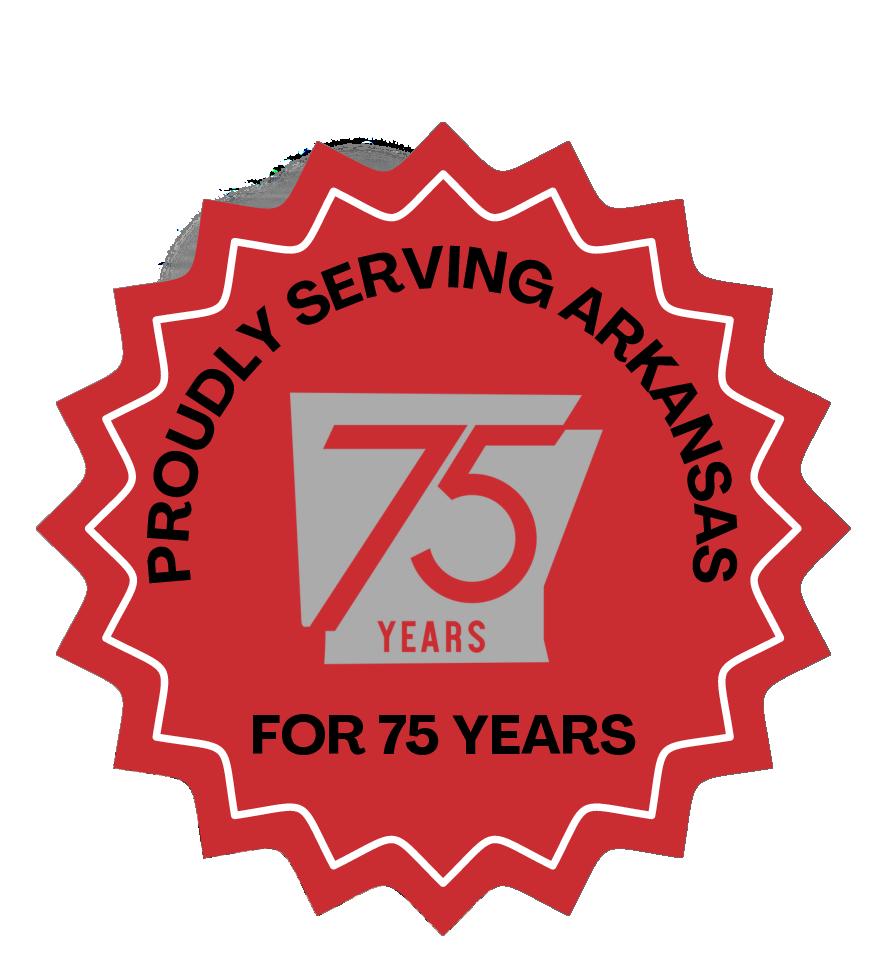





DIGGING FOR DOLLARS


ONE LESS DISTRACTION Cellphones and other personal electronic devices will soon be out of the hands of Arkansas students thanks to the Bell to Bell, No Cell Act.
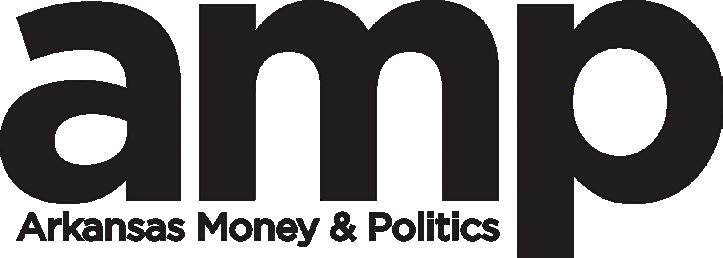
65TH-ANNUAL POULTRY FESTIVAL

Did someone say chickens?
The Poultry Festival’s 65th-annual convention in June will bring together growers, producers, vendors and more to Rogers to celebrate an industry.
Which came first?
The poultry industry would not exist, obviously, without the birds, but the producers are a pretty vital component, as well. They will be honored next month.
Heroes, sung
Of everyone who helps make a trade association successful there is one group, contributors, that is often unseen and unsung. Not so with The Poultry Federation.
The industry’s future
The Poultry Federation has long given out scholarships to Arkansas students who are looking to find a place in one of the state’s largest industries.
Get with the program
Pack your bags for an adventure of wild proportions as we swing into another Poultry Festival, this year with a thrilling new theme: “Welcome to the Jungle”!
State of the industry
Since the days of Florence Nightingale, nurses have played an invaluable role in patient care. However, nursing shortages have been around just as long.
New tech, new roles
As health care rapidly evolves, so too does the role of the nurse. At the forefront are emerging specialties that combine traditional care with new tech.
More than meets the eye
The job of nursing is at once among the most recognizable and the most misunderstood professions there is. Nursing is much more than people realize.
Adaptation
Tending to the infrastructure needs in the U.S. often boils down to the same things. Even today, a lot can be accomplished with wood, concrete and tools.
Bridge of sighs
Coming into the 2020 elections, one of the main talking points for candidates was the state of the nation’s infrastructure and the many issues facing traveling Americans.
Tough job
Being an energy and utilities provider is not for the faint hearted. To start with, many power grids operate on aging infrastructure, a problem that brings heavy costs.
The Arkansas Governor’s Cup was launched in 2000 by Little Rock’s ACC Capital to inspire students to see entrepreneurship as a real path. Mission accomplished.
PRESIDENT & PUBLISHER
Heather Baker | hbaker@armoneyandpolitics.com
EDITOR-IN-CHIEF
Dwain Hebda | dwain@armoneyandpolitics.com
SENIOR EDITOR
Mark Carter | mcarter@armoneyandpolitics.com
ASSOCIATE EDITOR
Mak Millard | mmillard@armoneyandpolitics.com
EDITORIAL COORDINATOR
Darlene Hebda | darlene@armoneyandpolitics.com
COPY EDITOR
Sarah DeClerk | sdeclerk@armoneyandpolitics.com
STAFF WRITERS
Doug Crise | dcrise@armoneyandpolitics.com
Alex Hardgrave | ahardgrave@armoneyandpolitics.com
MANAGING DIGITAL EDITOR
Kellie McAnulty | kmcanulty@armoneyandpolitics.com
ONLINE WRITER
Kilee Hall | khall@armoneyandpolitics.com
PRODUCTION MANAGER
Mike Bedgood | mbedgood@armoneyandpolitics.com
GRAPHIC DESIGNERS
Jamie Davis | jdavis@armoneyandpolitics.com
Lora Puls | lpuls@armoneyandpolitics.com
Lee Smith | lsmith@armoneyandpolitics.com
SENIOR ACCOUNT EXECUTIVE
Greg Churan | gchuran@armoneyandpolitics.com
ACCOUNT EXECUTIVES
Michelle Daugherty | michelle@armoneyandpolitics.com
Mary Funderburg | mary@armoneyandpolitics.com
Karen Holderfield | kholderfield@armoneyandpolitics.com
Becky McGinley | becy@armoneyandpolitics.com
Dana Rodriguez | dana@armoneyandpolitics.com
EXECUTIVE ASSISTANT
Jessica Everson | jeverson@armoneyandpolitics.com
ADVERTISING COORDINATOR
Allison Runyon | ads@armoneyandpolitics.com
CIRCULATION
circulation@armoneyandpolitics.com
ADMINISTRATION billing@armoneyandpolitics.com
CEO | Vicki Vowell
TO ADVERTISE call 501-244-9700 email hbaker@ armoneyandpolitics.com
TO SUBSCRIBE armoneyandpolitics.com/subscribe
CONTRIBUTORS
DeWaine Duncan, Ben Kutylo, Steve Lewis, Ryan Parker, Jacob Slaton, Joey Small, Scott Wood

Are you ready to shape the future of healthcare?
Our online MSN degree program is designed to prepare registered nurses like you to become effective educators across a variety of settings:
• Higher education institutions
• Hospitals & ambulatory clinics
• Public health agencies
• Insurance companies
• Patient-centered organizations
Program graduates are prepared to sit for certification as a Certified Nurse Educator (CNE), giving you the credentials and skills to thrive in this vital role.
Program offers:
• 100% online program flexibility
• Low cost, fixed rate tuition

*All programs CCNE accredited uca.edu/nursing
2025 Poultry Festival


Photographer Steve Lewis photographed Marvin Childers of The Poultry Federation at one of WayneSanderson Farms’ operations in Danville. Childers and the federation will soon host the 65th-annual Poultry Festival in Rogers.
Coverage starts on page 12.
OLYMPIC GOLD MEDALIST SLAY TO COACH AT SPRINGDALE WRESTLING FACILITY
He is a Rockstar!! So exciting for our State and Arkansas Wrestling!!
Kristi Herndon Mann
LITTLE ROCK COWORKING, EVENT SPACE CHANGES HANDS
Wishing you the best, Patsy Kane!
Patrick J Murphy
2025 AMP FACES OF ARKANSAS: FACE OF NWA BANKING
Thank you, Arkansas Money & Politics , for the article! The four of us are excited to celebrate the first 20 years of Signature Bank of Arkansas and look forward to the growth opportunities that the banking industry and the state of Arkansas have in store for us as a bank and as a team for the next 20 years!
Alexandria J. Gladden, Crandall Streett, Traci Maland, Brant Ward
FORMER ARKANSAS STATE FAIR LEADER DAN SAWYER TAKES ON NATIONAL ROLE
Well-deserved Dan!!
Karen Downs Young
MULTIGENERATIONAL FARMERS: DENNIS BROADWATER AND LAURA KELLER
Dennis Broadwater, great feature!
Michelle Bufkin Horton
UAPB RECEIVES HISTORIC $1M GIFT TO ADVANCE ACCOUNTING EDUCATION
Congratulations to my Alma Mater.
Marcus A. Chanay, Ph.D., CFRM
MOSES TUCKER ANNOUNCES COMPLETION OF BOYLE BUILDING REDEVELOPMENT IN LITTLE ROCK
One of the most remarkable buildings and projects completed in Downtown Little Rock. Congrats to our Team and Attorney General Tim Griffin and his Team!
Marcus A. Chanay, Ph.D., CFRM
April 7 — May 4
1 Junior League of Little Rock Plans to Sell Historic Building
2 Conway to Welcome New $1 Billion Data Center for Fortune 100 Company
3 Arkansas Governor’s Signature Makes OTC Ivermectin a Reality
4 Trucking Industry Continues to Pull Weight Despite Economy
5 Sanders Signs Bill Banning PBMs From Owning Pharmacies in Arkansas
6 New Mixed-Use Development Coming to Bentonville Square
7 Whit Davis Lumber Plus to Close Sherwood Location
8 Arkansas Sports Hall of Fame Crowns New Class, First Female Leader
9 CVS Responds to Bill Banning PBMs From Owning Pharmacies in Arkansas
10 Riding the Wave: Sen. Tom Cotton Talks Reelection Bid, Conservative Mandate





By Mark Carter
Forgive me readers, for what I’m about to do, which is to throw some serious shade. Specifically, that of cardinal red.
Recently, I finally found documented proof concerning the original sporting nickname for the University of Arkansas.
As most Hog fans know (or should), the UA’s mascot was not “Razorbacks” until 1910 (Hugo Bezdek and all). Among Razorback Nation, it was generally assumed that the previous mascot, the Cardinals, stood for the bird. I always suspected that was not the case, however, my time usually being devoted to thinking about such important things — you know, as opposed to my studies … or my career … or saving for retirement. But I digress. Alas, the Arkansas Alumni Association has confirmed my suspicions.
The university mascot/nickname at the flagship U. prior to 1910 was the Cardinal, singular. As in recognition of the school color — and not for the bird. Thank goodness UA students voted early on, before the UA even fielded teams officially, to adopt cardinal as the school color over heliotrope, which, essentially, is violet.
“What is worse than LSU purple?” one may ask. The correct answer, of course, is nothing … or heliotrope. Try to imagine a costumed wild boar named Big Purple? Ugh. On second thought, don’t try to imagine that.
College sports fans among you may be aware that the sporting squads at a certain hoity-toity school on the west coast go by the Cardinal and have since the early 1970s, being a very early adopter of woke.
Therefore, “the Cardinal” was there for the taking.
You’re welcome, Stanford, by the way, for unveiling the possibilities. You know how it is, though. Sometimes the trails of innovation we blaze here in the Natural State take a few years to reach the coasts.
***
Sticking to the theme, I’d be remiss not to mention the Diamond Hogs’ dominating sweep of what should have become the former No. 1-ranked
Imad cows of Texass. (Calculus, women’s minds and college baseball polls ... three things I’ll never come close to figuring out.)
After a much-needed midweek break, the Hogs returned to form against UT and reminded many casual fans why so many were so high on the Hog, as it were, in the preseason.

As of this writing, the Hogs were scheduled to finish up with series at LSU then at home for Tennessee before Omaha 1.0 (the SEC tourney) commences in Hoover. A brutal gauntlet, sure, but one Arkansas fans have come to expect as part of life in the SEC. We’ve yet to tear up the check the league hands out each year, so there you go.
For those of us eligible for membership in AARP, beating Texas — in virtually anything, really, but especially in the sports that mattered — was and remains a big, big deal. When the UT-OU move to the SEC was announced a couple of years ago, Texas knew what needed to be done to stay competitive, and to its credit (ugh), it has been plenty competitive. Now, one can only assume (and hope) that bevo finds the room in Birmingham a little less easy to bully. You know, what with the big elephant (and dog, and tiger, and gator, etc.) in the room and all.
By Heather Baker
f April showers bring May flowers, as the saying goes, then this should be one pretty month. This issue of Arkansas Money & Politics is a beaut — that’s for sure.
Inside, readers will find packages devoted to nursing, infrastructure and the poultry industry. Our nursing coverage this month features the state of the industry in Arkansas, a look at the state’s nursing schools, nursing in the mental health industry, emerging specialties in the nursing industry, nursing careers other than patient care and more.
Looking at infrastructure, we visit with cement and asphalt companies, with the designers and engineers responsible for our bridges, and with the dedicated crews who make up the state’s cadre of road builders.

We’re proud again this year to partner with The Poultry Federation, one of the most effective advocacy groups of its kind
— for any industry — in the country. The 65th annual Poultry Festival is set for June 20 and 21 in Rogers. This year, its theme is “Welcome to the Jungle,” and y’all, when I say they put on a show, well, you just have to see it to believe it. Inside, we preview the conference agenda and feature festival entertainment, including Jackson Dean, the Castellows and more. We visit with past industry award winners, industry VIPs, the industry’s top contributors and even scholarship winners.
Inside, we also look at how Arkansas’ energy companies are dealing with increases in demand and check out the state’s annual Arkansas Governor’s Cup business plan competition, and we took a trip to Sheridan to find out how a local company is supplying bunker sand for PGA golf courses.
There’s a lot to unpack inside, and we are proud to once again provide this positive light on Arkansas business and industry.
Thank you for reading. Hit me up with any comments or story ideas at hbaker@armoneyandpolitics.com.
By AMP Staff
Arkansas is known for its natural materials, ranging from an abundance of timber, gas and gypsum to earthly minerals and chemicals such as lithium, bauxite and quartz. Lesser known, at least in broad circles, is Arkansas’ prowess for engineered or advanced materials — substances designed and tailored to exhibit specific properties or functions that exceed those of traditional materials. Unlike natural materials, engineered materials are synthesized or modified through controlled processes to achieve desired characteristics, such as strength, conductivity, flexibility or durability. Arkansas has an enormous opportunity within the lucrative high-tech space.
The Arkansas research enterprise features many concentrations of excellence across various facets of materials engineering supported by significant external funding and world-class research centers. In particular, three areas of emerging industry activity in the state with strong future growth prospects are well aligned with the need for materials engineering applications:
1. Lithium extraction and processing
2. Novel steel manufacturing methods and materials
3. Sustainable materials and bioproducts
“Research enables us to leverage our natural attributes to a far greater economic impact,” said Bryan Barnhouse, president and CEO of the Arkansas Research Alliance. “That’s where Arkansas’ research community plays a vital role.”
Supporting the state’s emerging industries, such as materials engineering is a priority for ARA, which recently initiated the ARA Innovation Scholars Program to recruit rising stars across the state’s seven most promising growth opportunities. The program is a unique endeavor for the state, since it embeds researchers with an Arkansas company to help conceive and design new processes and products. In addition, ARA has modified its ARA Impact Grants program (grants for up to $75,000 designed to push promising research across the finish line) to support science in line with opportunities such as materials engineering. Of 25 grants awarded this year, eight supported projects between university researchers and Arkansas-based companies within the materials engineering growth opportunity.
It is one thing to supply the world with basic resources, but Arkansas has the potential to go further, emerging as a global
leader in high-tech materials that only a few have the expertise to produce. Imagine working in greater partnership with organizations such as Boeing, NASA, SpaceX, Apple and Lockheed Martin. Better yet, imagine building new companies like those from the ground up right here in the Natural State. When you consider the resources we have at hand, it is not a stretch to see Arkansas becoming the next Silicon Valley.
The state’s entry into advanced materials is not happening by accident. Arkansas features many world-class research centers of excellence across various facets of materials engineering — among them the University of Arkansas Center for Advanced Surface Engineering, the UA Institute for Nanoscience and Engineering, the UA Multi-User Silicon Carbide Research and Fabrication Facility, the University of Arkansas at Little Rock Center for Integrative Nanotechnology Sciences, and the newly approved Arkansas State University Center for Advanced Materials and Steel Manufacturing.
“The connection between Arkansas industry and state facilities researching advanced materials is strong,” Barnhouse said. “For example, the steel industry long held a footprint in northeast Arkansas, and it’s only natural that research at Arkansas State University runs parallel to its interests. Furthermore, Little Rock serves as the state’s medical epicenter. It makes sense that UA-Little Rock-supported research is advancing tissue regeneration with nanomaterials. Arkansas’ industrial strengths are made stronger by its research partners.”
Nanotechnology alone is an estimated $22.5 billion U.S. market. By 2030, the lithium battery market is projected to be a $400 billion industry. Increased infrastructure spending, advancements in manufacturing and the rising demand for electric vehicles is expected to grow the U.S. steel industry to $110 billion by 2030. A recent report from the ARA concludes that materials engineering in Arkansas is closely aligned with new market opportunities that could help drive the state’s future economic growth.
How can we fully leverage this opportunity? To start, download ARA’s groundbreaking report Enabling an Innovation-Led Future for Arkansas, and become fully acquainted with the opportunities research affords our economy and way of life. The report is available for free at aralliance.org/resources/#report.
By Ben Kutylo
When we make a deal, even an informal one sealed with a handshake, we commit to fulfilling our obligations. In return, we expect the other party to do the same. It seems straightforward enough. Yet for many reasons — ambiguous goals, unclear duties or shifting priorities — our agreements do not always unfold as planned.
Take, for example, a contract for a full-scale kitchen renovation. We receive an initial estimate and estimated timeline from our preferred contractor for the general scope of work. We sign on the dotted line, sighing with relief that we will return to a refreshed space in just a few short months. Unfortunately, the unexpected happens. The construction company gets sidetracked by other client projects, or we fail to pick out the needed materials on time, delaying subcontractors and installations.
In that case, what started as a straightforward agreement spiraled into a chain reaction of missed deadlines and unmet expectations. Could this issue have been averted? Possibly. Consider if, from the start, we had collaborated with the contractor to explicitly define the outcome — a completed kitchen renovation by a set date for a full paycheck — and assigned clear responsibilities to both parties to achieve it. We could have even thrown in a sizable bonus if the crew achieved the goal on an expedited timeline. That alignment and mutual accountability could have helped both sides stay on track and had us back in our home sooner.
Now imagine applying that same concept of contracting for a specific result to a different sector, one that many would agree has much higher stakes: pre-K-12 education. That is what Forward Arkansas is doing by introducing outcomes-based contracting in our state. Why would an education nonprofit like Forward Arkansas focus on a strategy like that? Because we are committed to elevating and advancing innovative, system-level approaches that lead to better outcomes for kids.
Every year, our nation’s education sector spends billions on goods and services to increase student achievement. Yet the Southern Education Foundation notes there is often a “fundamental disconnect” between districts and their vendors, which can lead to educational spending “without clear mechanisms to ensure those investments translate into measurable learning gains.” How can we determine whether certain services, tools or educational strategies work effectively in advancing student learning? Outcomes-based contracting.
The Hechinger Report, a national nonprofit newsroom, states that “smarter education spending” may start with signing “smarter contracts.” With outcomes-based contracting, districts and providers must determine and commit to specific results and associated responsibilities, including establishing student dosage
expectations (e.g., lessons delivered) and fidelity metrics (percentage of students receiving the academic support). A substantial portion of the payment — at least 40 percent — is contingent on the service provider delivering the agreed-upon outcome. While districts set the contract price, they are also held accountable for ensuring their students use the service or product in alignment with the defined dosage.

The results are incredibly promising. The Center for Outcomes Based Contracting confirms that the model helps ensure “dollars spent deliver academic impact.” It reports that districts that use the agreements “have seen meaningful improvements in student achievement, with funds being directed toward the most effective interventions.” At the same time, the center notes, “Students benefit from research-backed interventions that are rigorously implemented and continuously improved.” It is a win-win.
With the support of the Walton Family Foundation, Forward Arkansas is bringing the transformative model to the Natural State. Soon, we will launch the Outcomes Based Contracting High-Impact Tutoring Cohort. Our goal is to help participating districts turn their innovative tutoring programs into measurable student success. In partnership with the Center for Outcomes Based Contracting at the Southern Education Foundation, we will provide targeted coaching to select school districts to help them design and execute contracts to fuel lasting academic growth. Each participating district will receive a flexible $12,000 grant to support the work, including exclusive access to workshops, peer networking and implementation resources.
Forbes recently noted that districts are “under mounting pressure to deliver measurable academic improvements while making every dollar count.” At Forward Arkansas, we recognize outcomes-based contracting alone will not solve every challenge we face in education. No single solution or strategy can. However, we believe it is a promising tool in our broader efforts to transform pre-K-12 learning. With outcomes-based contracting, we are confident that we can help ensure that our state’s educational investments lead to stronger outcomes for all Arkansas students.
Ben Kutylo is the president and CEO of Forward Arkansas, a nonprofit with a mission to accelerate the innovative and equitable transformation of education in Arkansas. For more information, visit forwardarkansas.org.
By Joey Small
Beyond comfort with your day-to-day finances, what do you truly want? Is it early retirement, philanthropic impact or generational wealth preservation?
Defining your vision will shape how you strategically approach your financial planning. While most successful professionals have spent years building careers, leading businesses and making critical decisions, even high-achieving individuals can overlook the importance of working with a professional to develop a comprehensive written financial plan.
Kiplinger notes that fewer than 40 percent of Americans have taken the time to develop a financial plan. Even among the most accomplished professionals, financial blind spots exist.
Whether you are launching a high-profile career or reassessing an established wealth strategy, a written financial plan may provide the clarity, confidence and control needed to stay ahead. If you do not have a plan in place or your plan has not been updated recently, now is the time to act. Your financial future may depend on it.
A financial plan is more than just a budget or an investment portfolio — it is a strategic roadmap designed to help ensure long-term financial security. Even if you are earning well and investing wisely, a formalized plan may provide essential structure.
If you already have a plan, it is wise to review and refine it regularly. If you do not have a plan, here is how to get started:
1. Clarify your financial vision: Think beyond day-to-day expenses. What is your long-term goal? Are you focused on leaving a legacy of generational wealth, creating a philanthropic impact or achieving early retirement? Identifying your financial vision will serve as the foundation for the strategy you develop.
2. Assess your current position: A thorough review of your current finances is essential. High earners often accumulate diverse portfolios, but
understanding the nuances of those assets, liabilities and income streams is crucial. This clarity helps you pinpoint inefficiencies and areas for improvement.
3. Implement a strategic investment approach: Investing with intent is key. Whether your goal is financial independence, wealth for future generations or supporting charitable causes, a disciplined investment strategy aligned with your vision can help. Focus on diversification, tax efficiency and long-term growth to help ensure you are on the appropriate path.
4. Build safeguards against uncertainty: As your wealth and responsibilities grow, so too does the need for protection. Make sure you have robust insurance, estate plans and contingency funds in place to weather unforeseen challenges and to help keep your financial plan on track.
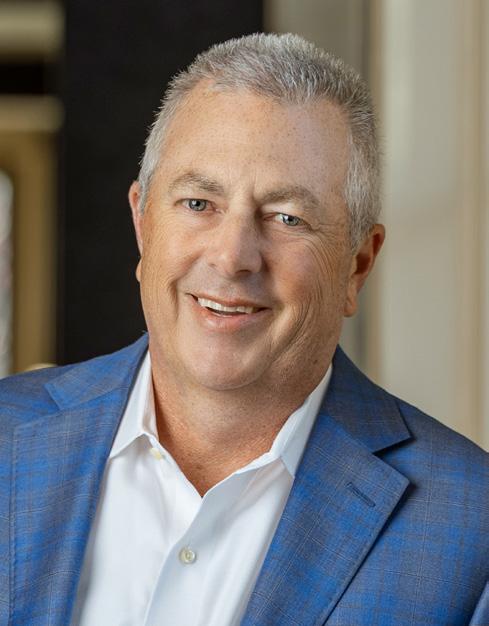
5. Conduct regular reviews and adjustments: The road to your financial goal requires ongoing adjustment. As circumstances change — whether through personal milestones or economic shifts — your plan should evolve. Reassess regularly to adapt to new opportunities or risks.
No matter what your financial goal is — whether it is building a legacy, making a meaningful impact through philanthropy or easing into early retirement — having a written plan is essential. Even if you are successful, it is easy to overlook important details that can hinder your financial success. The sooner you take action, the more control you will have over your financial future.
Joey Small is the president of Small Wealth Management, a private wealth advisory practice of Ameriprise Financial.

The Poultry Festival promises a roaring good time
By Dwain Hebda

The 65th Annual Poultry Festival June 20–21 in Rogers, Arkansas, promises an experience worthy of the king of the jungle.
This year’s milestone event, themed “Welcome to the Jungle,” celebrates the strength, resilience and community of one of the region’s most vital agricultural industries.
Each year, the festival brings together federation members from Arkansas, Missouri and Oklahoma — along with corporate partners and industry supporters — for a weekend of networking, camaraderie and celebration. It is more than a tradition — it is a tribute to the people who help feed the world with quality poultry and eggs.
“We proudly describe the Poultry Festival as a true celebration of our industry,” said Marvin Childers, president of The Poultry Federation, which represents the poultry industry in Arkansas, Missouri and Oklahoma. “It’s an open invitation to everyone involved in poultry — from growers and processors to our allied members and their families. This event is about honoring the people who make this industry thrive.”
Childers acknowledged that the industry has faced its share of challenges over the past year, from the impacts of avian influenza to broader economic pressures such as inflation and rising input costs.
“Even with these headwinds, our industry remains strong. Poultry continues to be a cornerstone of the regional economy — especially here in Arkansas — and we’re proud of the resilience and commitment shown by everyone across the supply chain,” he said.





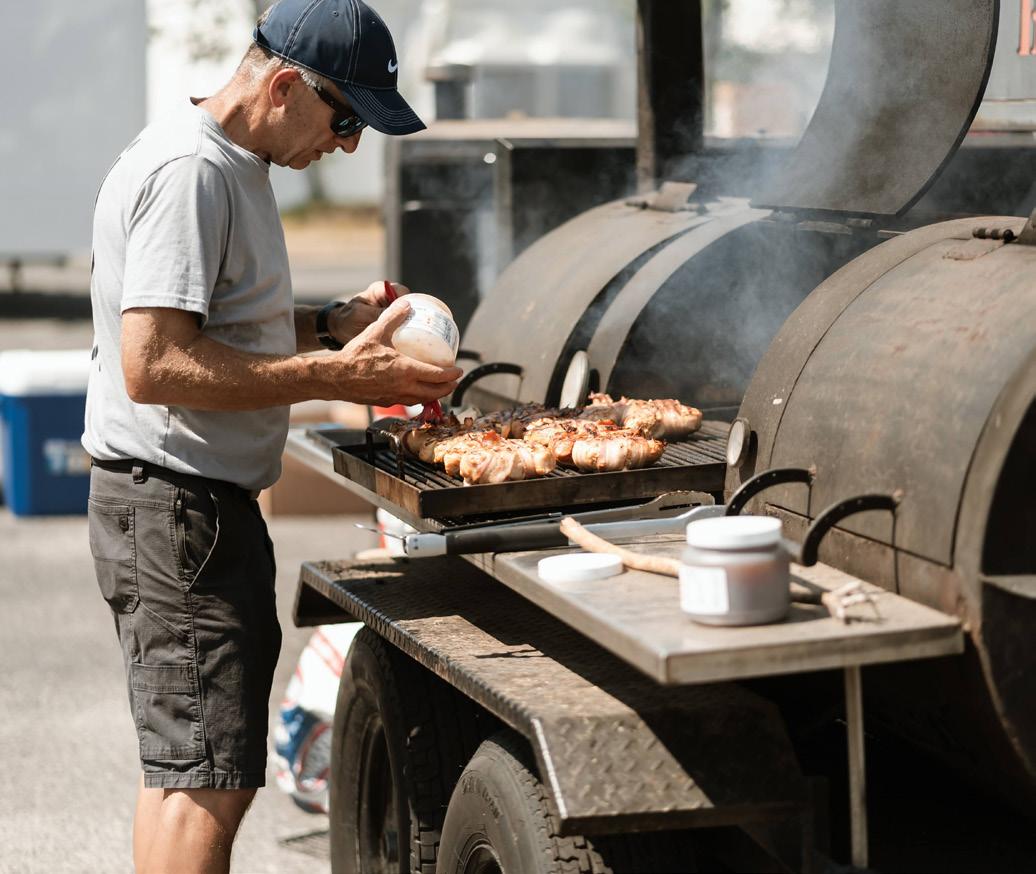
Arkansas continues to rank No. 3 in the nation in broiler production. We produce 1.03 billion broiler chickens a year. That’s about 7.4 billion pounds, and the value of that production is about $5.3 billion.
— Marvin Childers, president,
The Poultry Federation
Poultry is serious business, but there is no shortage of fun at the Poultry Festival, which celebrates growers, producers, allied members and others who help make the industry a vibrant part of the region’s economy.

An awards banquet, a scholarship auction and more provide opportunities for attendees to network.
“Arkansas consistently ranks No. 3 in the nation for broiler production with more than 1.03 billion chickens raised annually. That translates to roughly 7.4 billion pounds of poultry and an economic impact of about $5.3 billion — a powerful testament to the industry’s significance in our state.”
In Arkansas agriculture, it is often reported about ranking tops in rice production, Childers said, “but when you look at the broader picture, poultry — including broiler chickens, turkeys and eggs — accounted for 51 percent of all agricultural cash receipts in the state last year. Out of approximately $13 billion in total farm commodity value, poultry led the way, followed by soybeans at 16 percent, rice at 11 percent, corn at 6 percent and cotton at 5 percent.”
That achievement, despite all other obstacles, is worthy of a celebration, and

Last year, we were able to award about $150,000 to students in Arkansas, Missouri and Oklahoma.
— Blake Rollins, executive vice president at The Poultry Federation

that is exactly what the Poultry Festival is all about, said Blake Rollins, executive vice president of the Poultry Federation.
“This is our 65th annual festival, and if there’s a producer or member who hasn’t attended before, this is the year to come,” Rollins said. “This is an event that’s fun, valuable and gives back to the industry in multiple ways.”
One of the most impactful ways the festival gives back is through The Poultry Federation’s robust scholarship program, which supports the education of future poultry professionals and helps ensure the continued growth and innovation of the industry.
“Last year, we were able to award about $150,000 to students in Arkansas, Missouri and Oklahoma,” Rollins said.
Marvin Childers of the Poultry Federation presented the award for best booth to the Tyson Rogers team at last year’s event.

“To be eligible for these awards, students must be pursuing a degree leading to a career in the poultry industry, so in a very real, tangible way, the people who donate to our scholarship fund are helping us to invest in the future of our industry through our young people. We’re very proud as an organization and as an industry to have a hand in developing the next crop of talented leaders in poultry.”
Childers agreed, saying the 29th annual Scholarship Auction, set for Friday night during the festival, is a highlight for those very reasons. Last year, the federation raised a record $135,000, and this year, the goal is to take in $140,000 to directly benefit deserving students.
“Our scholarship program continues to grow year after year,” Childers said. “What’s remarkable is that we’re able to raise the funds to support more than 40 students on an annual basis with just one night of fundraising. The generosity shown during that event is truly inspiring.
“It’s also a full-circle moment — many of those giving today once received a Poultry Federation scholarship themselves. Now they’re investing in the next generation of leaders who will carry this industry forward.”
Other standout events on the festival schedule include the ever-popular
golf tournament, trap shoot and fishing tournament. By far the most hotly contested competition, however, is the AllMember Cooking Competition, during which teams showcase their best bone-in and boneless chicken and turkey dishes. Participants in the All-Member Cooking Competition not only compete for the top honor of Grande Champion but also showcase their creativity in the booth decor contest, helping bring the festival theme to life.
Last year’s festival sold 4,500 tickets and brought $4.2 in economic impact to the Rogers community, another testament to the event’s enduring popularity. Both Childers and Rollins said it was gratifying to see the event so well received after more than six decades.
“Ninety-seven percent of poultry growers operate family-owned farms, and across all three states, we’re seeing a new generation of young farmers choosing


The festivities include a silent auction, above, and live music as provided last year, left, by Chris Lane and Marybeth Byrd.
poultry as their path forward,” Rollins said. “Poultry production offers a unique opportunity — it requires less land and a lower capital investment compared to some other forms of agriculture while still allowing producers to be highly efficient and successful.
“Excellence in poultry production is a longstanding tradition in our region, especially here in Arkansas. It’s a testament to the strong partnership between the industry and The Poultry Federation, and to the dedicated farm families who continue to produce generation after generation. That gives us great confidence in the future of agriculture and the continued strength of our industry.”










Established in 1956, Hugg & Hall Equipment Company specializes in top-quality equipment rental and equipment sales, comprehensive product support, and unparalleled customer service. They are dedicated to providing cost-effective construction equipment, material handling equipment, and warehouse solutions tailored to their clients’ needs. Hugg & Hall proudly takes ownership of each customer’s needs and is an equipment dealer for industry-leading brands.
The poultry industry’s primary existential question may not be about the chicken and the egg after all. Perhaps one should ask, “Which came first: the chicken or the producer?
The obvious image that comes to mind when one thinks of the poultry industry is that of a broiler, maybe a plate of fried chicken or a glistening baked turkey being brought to the table for Thanksgiving dinner.
Each of those images is appropriate enough, given America’s appetite for the birds, but the poultry industry is nothing without the men and women who operate it. The Poultry Federation, Arkansas-based and officially advocating for producers and industry members in the Natural State, Oklahoma and Missouri, serves as a de facto voice for the industry as a whole.
A select few of its leaders will be recognized at The Poultry Federation’s 65th Annual Poultry Festival set for June 20 and 21 in Rogers.
Through advocacy and education, The Poultry Federation advances the interests of agriculture in Arkansas and beyond, and its membership represents a potent parcel of producers. Shane Acosta, assistant vice president and general manager at Cargill’s protein group/poultry operations plant in Springdale, said federation members work to ensure that the industry continues to thrive in the face of changing challenges and opportunities.
“Our commitment to protecting the interests of farmers, ranchers and producers remains steadfast as we help secure a vibrant and sustainable future for Arkansas agriculture,” he said. “Arkansas proudly stands as a national leader in agriculture, with the industry serving as the state’s largest economic driver. Our farms, ranches and agribusinesses form the backbone of Arkansas’ economy, supporting thousands of families and communities across the state. We are proud of our agricultural heritage and optimistic about the path ahead.”
The Poultry Festival will bring together poultry producers, growers, executives and vendors from across the country. Given the proximity of Tyson Foods’ headquarters to Cargill’s operations in Springdale and Arkansas’ status as the No. 3 poultry-producing state in the land, it seems fitting that northwest Arkansas would host an event celebrating all things poultry. A popular component to the annual event is the recognition of top producers and sales representatives from the previous year. Kendra Waldbusser, global head of food, safety and quality assurance, as well as live operations, at Pilgrim’s, is a former Poultry Festival Industry Leader of the Year Award winner.
“Every day, I am proud to be part of this great industry and appreciate events like the Poultry Festival that allow opportunities for continued growth, development and networking with friends and leaders from around the country,” Waldbusser said.
The event in June, which carries a “Welcome to the Jungle” theme, will recognize a top industry leader and top sales representatives in the industry for 2024. The 2024 Sales Representative of the Year Award was presented last year to Kyle Avey of Phibro and Toby Tapp of WayneSanderson Farms was Industry Leader of the Year.
“The Poultry Federation is a true partner with our industry, representing thousands of hard working people in the poultry business across Arkansas, Missouri and Oklahoma,” Tapp said. “It is on top of the issues that impact us on Capitol Hill, in the governor’s office, the state legislature, with regulatory and government agencies and local government. The federation brings our industry together every year and gives us a forum to visit and discuss the critical issues, opportunities and challenges we face with the farmers, producers, local businesses, suppliers and contractors who make this industry one of this region’s most important economic contributors.”
The industry leader awards have been a part of The Poultry Federation’s annual convention since it started in 1955, the first award going to F.A. “Pat” Teague. The award recognizes an industry executive whose leadership has resulted in outstanding advances and new directions in the poultry and egg industry.
The federation began recognizing sales reps of the year in 1968. The awards recognize industry executives whose leadership resulted in major and outstanding advances and new directions in processing or production as it relates to the poultry and egg industry.
Festival also serves to raise operational funds to help support the work of the federation, which includes promoting the industry and staying on top of the variety of issues that impact growers, integrators and consumers.
Outgoing Chairman of the Board: Duane Weems, Peco Foods
“The Poultry Federation performs a vital role in our industry with in-depth knowledge of factors that influence our businesses,” said Kevin McDaniel, CEO of Wayne-Sanderson Farms. “It helps us with legislative issues in three states, as well as bridging the gap to many governmental agencies for its members. The federation encompasses unique relationships of poultry integrators and allied company leaders. The poultry industry is in a great place, with the consumption of poultry products continuing to increase. We have the most nutritious and affordable protein in the market. This industry provides a vast career platform for young talent to excel.”
Industry Leader: Toby Tapp, Wayne-Sanderson Farms
Sales Representative of the Year — Production: Kyle Avey, Phibro
Megan Batson, senior customer marketing manager at Zoetis, was a 2022 sales award winner. She has also volunteered at past festivals. She considers The Poultry Federation the glue that holds the industry together.
“The Poultry Festival is a time to enjoy team building, visiting with fellow poultry industry professionals and their families, and supporting a great cause,” she said. “It’s amazing to see the generosity of the people in our industry during this highly anticipated event each year. It’s rewarding to be able to volunteer my time towards an event that gives so much back to the next generation of poultry. The Poultry Federation promotes and helps to protect what’s in the best interest of the companies that supply poultry and eggs, who are huge contributors in helping to feed the world.”
The Poultry Federation now also recognizes outgoing chairmen of the board. Last year, that included Duane Weems, live operations manager at Peco Foods’ operation in Pocahontas who served as The Poultry Federation board chair in 2023 and 2024.
The annual event is much more than an industry showcase and pep rally, though it meets those descriptions. The Poultry
Tapp said poultry is in a strong position in 2025. There are several factors pushing chicken prices higher, which makes the work of The Poultry Federation that much more important.
“Beef price increases are moving consumers and food-service operators toward chicken as a more affordable protein,” he said. “We are experiencing high demand in several key product-mix areas, primarily boneless breast, tenders, leg and thigh meat. The type of demand we’re currently experiencing indicates [quickservice restaurant] and food-service operators are purchasing greater volumes of chicken in response to increased promotion of chicken items. Retail growth is strong, and a tightening market means little excess production for the industry. Consumer demand is high, surprisingly surpassing COVID[-19]-era demand and corresponding with diminished availability from the supply side. Rising beef prices have closed the demand gap, and poultry will remain strong, as diminished beef herds will take several years to recover.”
Avey won the 2024 Poultry Sales Representative of the Year for Production Award when he worked for Phibro. He is now at Huvepharma in the same role.
For Avey, the job of the poultrty industry boils down to serving the customer. “We’re just trying to find solutions for customers that keep animals healthy. Knowing your customers and building relationships is important, and we’re making sure we’re staying on the cutting edge to offer them products that are specific to what’s going on with their segment of the business.”
By Dwain Hebda
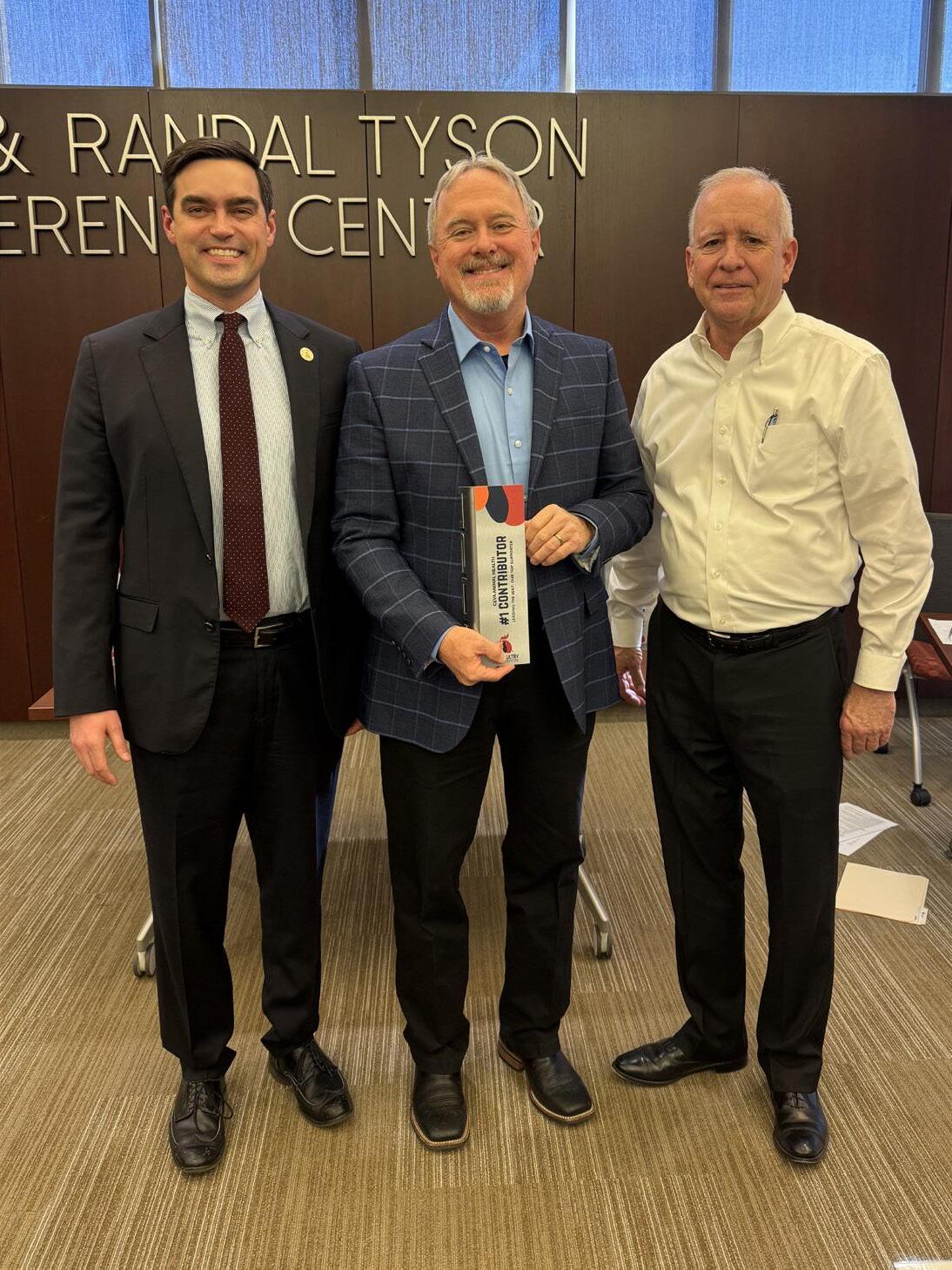
Of everyone who helps make a trade association successful there is one group, contributors, that is often unseen and unsung. Not so with The Poultry Federation, which goes out of its way to recognize and support the companies that support the federation’s efforts, enabling the group to provide meaningful services, impactful programs and wellattended events.
“Like any sector, the poultry industry faces its share of challenges,” said Blake Rollins, executive vice president of The Poultry Federation, “but thanks to the dedication and support of our contributors, we’re able to more effectively serve our members through education, advocacy and events that strengthen the entire industry.”
“Today, poultry supports approximately 157,000 jobs in Arkansas, 66,000 in Missouri and 25,000 in Oklahoma,” Rollins continued. “These numbers reflect a vibrant and essential industry in our region. We look forward to building on that momentum and continuing the strong partnerships that help ensure its long-term success.”
The federation actively seeks meaningful and visible ways to honor its top contributors through special recognition efforts. At its annual board retreat in Little Rock this February, The Poultry Federation proudly recognized companies that demonstrated exceptional support and commitment to the industry.
Ceva received special recognition in the No. 1 spot on the prestigious roster, which also included Applied Industrial Technologies, Best Veterinary Solutions, Boehringer
Ingelheim, Bunzl Processor Division, Clear View Enterprises, dsm-firmenich, Elanco, FPEC, International Paper, Midland Industrial Services, NOVUS, Van der Graaf, Wire Belt and Zoetis.
Marvin Childers, president of The Poultry Federation, emphasized that the value of the federation’s top contributors extends far beyond financial support.
“Our top contributors play an essential role in the success of both the industry and The Poultry Federation,” Childers said. “They show up — not just with sponsorship dollars — but with active participation, leadership and a deep

Headquartered in Cleveland, Applied Industrial Technologies boasts more than 590 operating facilities in North America, Australia, New Zealand, Singapore and Costa Rica and operates 12 distribution centers. With nearly 10 million SKUs from more than 4,000 product manufacturers, Applied Industrial Technologies is one of the most comprehensive suppliers in the world of advanced motion, power, control and automation solutions to critical industrial infrastructure. applied.com

Best Veterinary Solutions brings in products from quality manufacturers around the globe, as well as offering custom products manufactured in the heartland of America. In addition to a broad range of products serving the poultry industry, BVS also offers various services, including hatchery tech, vaccine services and water sanitation. The company’s custom manufacturing operations offer liquid blending, dry blending custom mixes and private labeling services. bestvetsolutions.com
commitment to our mission. Whether it’s attending the Poultry Festival, sponsoring events, or supporting our programs and services, their involvement is meaningful and consistent.”
He noted that the federation benefits uniquely from being headquartered in a state that’s home to several major corporate offices.
“That proximity matters,” he said. “The individuals we work with aren’t just involved — they’re leaders and decision-makers. When we gather for a board meeting and discuss major initiatives — like funding a multimillion-

Boehringer Ingelheim develops therapeutic breakthroughs that transform lives in the areas of human pharma and animal health. In animal health, the company is one of the world’s leading providers of vaccines and therapeutics. A third of the company’s business in that area is in products for livestock, 9 percent of which is dedicated to the poultry industry. Established in 1885, Boehringer Ingelheim employs 54,500 workers worldwide in service to more than 130 markets around the globe.
boehringer-ingelheim.com

A leading source of plant operating supplies for the food processing industry and beyond, Bunzl Processor Division offers an inventory of high-quality products designed specifically to meet the needs of the meat processing, butchery, food service, food processing, janitorial, industrial and health care industries. Bunzl Processor Division streamlines operations by offering a one-stop shop for more than 10,000 ready-to-ship items from 15 dedicated distribution centers.
bunzlprocessor.com
dollar building project — we’re talking directly to the people who have the authority to make decisions in the moment. That level of engagement is a tremendous asset.”
Childers added that this hands-on leadership is a cornerstone of the federation’s strength.
“What truly sets The Poultry Federation apart is the way our contributors step up — not just financially but in the legislative arena, in biosecurity efforts and in our shared fight against poultry diseases like avian influenza. Their commitment makes all the difference.”

Delivering 29 billion annual doses of hatchery vaccines worldwide, Ceva is ranked No. 1 in the world in hatchery vaccination. Over more than 20 years in the industry, the company has established itself as an innovative leader in poultry vaccination. In addition, Ceva has pioneered new ways of inoculating birds through its CHICK Program, a best-in-class vaccination service provided by Ceva specialists around the world.
poultry.ceva.us

A leading animal health distribution company specializing in wholesale distribution, Clear View Enterprises offers more than 50 years of expertise and a diverse range of quality, cost-effective products to optimize health, productivity and profitability. Clear View Enterprises serves its market footprint via locations in Arkansas, Georgia, Maryland, North Carolina and Delaware and also offers nationwide delivery for its comprehensive line of nutritional and supportive products cvear.com

Offering efficient and sustainable poultry solutions, dsm-firmenich’s innovative feed additives are developed to help farmers meet the challenges they face to meet the growing demand for poultry meat and eggs worldwide. The company does so through a comprehensive range of solutions, combining natural and renewable ingredients with renowned science and technology capabilities to create cutting-edge products providing a wide range of benefits. dsm-firmenich.com
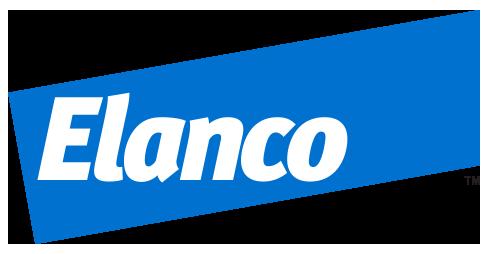
Established in the 1950s, Elanco provides producers and veterinarians with products and services that empower them to address global challenges. Over the seven decades since the company and its precursor revolutionized the world of veterinary medicine, Elanco has grown to market products, some 200 brands in all, in 90 countries where it places in the top four in every market. farmanimal.elanco.com

Established in 1959, FPEC engineers and produces reliable, custom-designed machinery for the meat and food industries. The company’s equipment uses only the finestquality materials such as 100 percent stainless steel that is precision welded to provide a strong, unibody construction in each piece. The company provides a full line of food processing machines, as well as control panels to automate systems, boosting productivity and reducing cost. fpec.com

With 125 years of manufacturing expertise, International Paper is one of the most recognized brands in the world and a leading manufacturer of products that range from wood and wood by-products to paper and packaging. Its presence in the protein packaging category is driven by innovation, such as recyclable boxes and cartons treated with moisture-resistant coatings to stand up to the rigors of the supply chain. internationalpaper.com
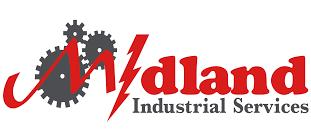
A value-added business partner, Midland Industrial Services is a respected industrial services company that continues to find new and innovative ways to work with customers to maximize productivity and investment returns, just as it has for decades in business. midlandllc.com

International is a leader in the field of intelligent nutrition solutions, helping protein producers grow their businesses. The company’s global reach and inclusive culture allows for an understanding of the complex challenges producers face around the globe, insights which can be leveraged locally. Specific to the poultry sector, the company delivers products and programs that help producers succeed, from enhancing quality and health to boosting production. novusint.com

A leader in the design and manufacturing of drum motors for belt conveyors, Van der Graaf offers in-house engineering and manufacturing capabilities using cutting-edge production technology in the USA and Canada with sales representatives and distributors located around the world. The company’s mission remains the same today as it was on day one: to provide reliable conveyor belt drive solutions through innovation, precision manufacturing and after-sales service.
vandergraaf.com

Wire Belt is the worldwide leader of highquality stainless steel metal conveyor belt and conveyor manufacturing. A company with a proud history in manufacturing conveyors and conveyor belting spanning some 60 years, Wire Belt serves myriad industries, including food and beverage, pharmaceutical, cosmetic, electronics, environmental services and automotive. Based in New Hampshire, the company also ranks high in terms of employee job satisfaction. wirebelt.com

Zoetis, the world’s leading animal health company, is in the business of vaccines, medicines, diagnostics and other technologies for companion animals and livestock. A Fortune 500 company traded on the New York Stock Exchange, the company generated $9.3 billion in revenue in 2024. Aspiring to be the most trusted and valued animal health company on earth, Zoetis focuses on six strategic priorities to advance the field of animal health.
zoetis.com
to our people. We work together to serve our communities with great care and great chicken. From investing back into the areas we serve to providing a great place to work for our dedicated team of 26,000 employees and 1,900 family farmers, Wayne-Sanderson Farms is committed to delivering a great quality of life that Arkansas can count on for the long haul.
waynesandersonfarms.com








































































By Alex Hardgrave
With intentional songwriting and a gravel-toned voice, the fast-rising singer/songwriter Jackson Dean will be bringing his music to the 65th annual Poultry Festival on June 21 at the Walmart AMP in Rogers.
Dean told Arkansas Money & Politics the new show is high-energy live playing that “covers a lot of ground,” just as his career has, offering moments that are both acoustic hits and have a rock feel.
He said he looks forward to performing the new concert opening that his team has worked up, as well as hearing people sing along with his hits “Train” and “Heavens to Betsy.”
His debut album, Greenbroke, which featured the platinum debut song, “Don’t Come Lookin,’” brought him onto the scene. His follow-up single, “Fearless (The Echo)” earned a gold certification.
Dean’s sophomore album, On The Back of My Dreams, was released last fall, and he recently released a new song, “Be Your Man.” He said that song highlights a new sound he is pivoting toward that is more “laid back” than his first two albums.
“We’ve got some other things cooking,” he said about a new project that is in the works.
He has headlined his own shows, as well as supported stars such as Toby Keith, Blake Shelton, Miranda Lambert,

Lainey Wilson, Eric Church and more. Last time Dean was in Rogers, he shared the stage with Luke Bryan.
Dean said he is looking forward to playing for an audience in Arkansas again.
“We’re fixing to have a good time,” he said.
He will be joined by the Castellows,
who will open the concert.
The Castellows first attracted attention in 2022 by posting performances on their Instagram and TikTok accounts. They have played alongside large acts such as Little Big Town and Sugarland, blending masterful three-part harmony with banjo and guitar to create a traditional yet modern sound.
By Doug Crise
Growing up on a family farm, Seth Hufford did a little bit of everything.
“It was just a small little cattle farm,” Hufford said. “Nothing big. We had a really small herd of cows, and I just worked out there, and then I also raised show pigs for Future Farmers of America.”
A Siloam Springs native, Hufford enjoyed his agrarian upbringing and knew he wanted a path toward the farming industry in some form or fashion, but like a lot of young people, he was not specifically sure what his future would look like. Also, like a lot of young people, the price tag for college loomed large.
“Tuition can definitely kick some people’s behinds,” Hufford said.
A lot has happened since Hufford began thinking about what opportunities lay beyond his family farm. Now a confident 25-year-old, Hufford attends the University of Arkansas in Fayetteville and works as a program technician for UA Poultry Science

Seth Hufford
professor Benjamin Parsons. He has a bachelor’s degree in poultry science and, despite his cow-centric childhood, is embarking on a master’s degree in poultry nutrition.
Hufford said none of that would be possible without the help of The Poultry Federation. A Little Rock-based nonprofit organization dedicated to advancing the interests of the poultry industry in Arkansas, Missouri and Oklahoma, The Poultry Federation has long given out scholarships to Arkansas youth looking to find a place in one of the state’s largest industries.
Without The Poultry Federation, I wouldn’t be where I am today. Without their support, I don’t know if I could have gotten through college financially. I’m just incredibly grateful for them.
— Seth Hufford
“The support of The Poultry Federation has been undeniably amazing,” Hufford said. “They have definitely been that support system. It’s amazing to know there’s a federation out there that supports our cause in the poultry industry and helps our journey and our dreams to build this amazing industry up.”
“I think it’s important to give back to the kids,” said Dr. Bill Hewat, director of veterinary services at Tyson Foods and a member of The Poultry Federation’s scholarship committee.
Hewat has spent his entire adult life in the poultry industry, and if there is one thing he is sure of, it is that the poultry business in Arkansas encompasses more than what most people are aware of. While The Poultry Federation’s scholarships are a natural fit for students with a farming background like Hufford, he encouraged students from all interests and backgrounds to look at the poultry industry as a whole. They just might be surprised.
“It expands the gamut from what people would traditionally think or believe as business related, such as marketing, sales or finance — just the regular functions that any company would have,” Hewat said. “Then it goes to research and development for the development of products. There’s the combination of science and marketing. Then there’s engineering, like plant operations. Then there’s my area of live operations. That goes from vaccine sales to being a service technician or a veterinarian. It’s very, very broad, the areas where you can become employed in this industry.”
Dr. Abigail Graham, a technical services veterinarian based in Pea Ridge and another member of The Poultry Federation’s scholarship committee, said there are plenty of science-related jobs in the
poultry industry that extend beyond the birds themselves. There are water quality analysis, medication and vaccine research to go along with the more traditional work that takes place in hatcheries and processing plants.
“There are a million routes to go,” Graham said. “We’ve had some nursing students whose desire might be to get a job as a nurse at one of these companies’ processing plants. You wouldn’t think a nursing program would end up with a poultry scholarship, but there’s definitely been a few of those. There’s also the food sciences department. There’s a lot of technology with the food space.”
Those with an eye toward the industry are spoiled for choice, and The Poultry Federation is happy to help fund each student’s educational journey.
“I’ve been kind of dabbling with whatever I want to do,” Hufford said with a laugh. “I did some plant work. I worked with some amazing people in the plant. Then I went to hatcheries, the feed mills. Then I went on to service chickens, so I’ve done everything from plant to live production.”
For now, Hufford is enjoying his work with Parsons and is feeling a tug toward the nutrition aspect of the industry. He likes the subject matter and has developed a knack for working with people, and he is excited to make a full jump into what he predicts will be a lifetime profession.
“Without The Poultry Federation, I wouldn’t be where I am today,” Hufford said. “Without their support, I don’t know if I could have gotten through college financially. I’m just incredibly grateful for them, and their love and support of our students is truly amazing.
65THANNIVERSARY
Each June, the poultry industry takes center stage in Northwest Arkansas as Rogers plays host to one of the region’s most impactful and longstanding events — the Poultry Festival, now celebrating its 65th year.
Organized by The Poultry Federation, this two-day event honors the dedication, innovation, and community that drive the poultry and egg industry across Arkansas, Missouri, and Oklahoma. With a new theme each year — this time, “Welcome to the Jungle” — the festival blends celebration with purpose, recognizing the vital role the industry plays in both agriculture and the broader economy.
In 2024, the festival drew over 4,500 attendees and generated an estimated $4.19 million in economic activity for the Rogers area. That impact reaches beyond hotel rooms and restaurants — it reflects the strength of an industry that supports thousands of jobs

and delivers safe, sustainable food to families across the globe.
The festival schedule is packed with industryfocused competitions and community-building events, including a golf tournament, trap shoot, bass tournament, scholarship auction, industry awards, cooking competitions, and the Arkansas 4-H State Cooking Contest. The weekend culminates with the Poultry Festival Concert at the Walmart AMP, featuring this year’s headliner Jackson Dean with special guests The Castellows.
The Poultry Festival is more than just a celebration — it’s a reflection of the industry’s commitment to excellence, resilience, and progress. For six and a half decades, it has served as a powerful reminder of how agriculture continues to shape the cultural and economic landscape of Arkansas and beyond.
ORGANIZED BY THE POULTRY FEDERATION
JUNE 20-21 2025
THURSDAY, JUNE 19
8:00 am - 5:00 pm
Information Desk Open
Rogers Convention Center Main Entrance
FRIDAY, JUNE 20
8:00 am - 6:00 pm
Information Desk Open
Rogers Convention Center Main Entrance
6:00 am - 2:00 pm
Fishing Tournament
Prairie Creek Marina, Beaver Lake
8:00 am - 2:00 pm
Trap Shoot Outlaw Ridge, Pineville, MO
7:00 am - 10:00 am
Golf Tournament Kingswood & Scotsdale
12:00 p.m.
Sporting Events Lunch & Awards
Location based on location of sporting event
1:00 pm - 5:00 pm
Allied Industries Scholarship Auction
View Silent & Live Items
Ambassador
4:00 pm - 9:00 pm 5:30 pm 6:30 pm 7:00 pm
8:00 pm9:30 pm
Yarnell’s Ice Cream & Photobooth Available Grand Ballroom
Hors d’oeuvre & Cocktail Reception Grand Ballroom
Presentation of Industry Awards Grand Ballroom
Live Auction Grand Ballroom
Special Live Music Event Hosted By Ambrose
Featuring Special Guests: Repo'd Trailers Grand Ballroom
SATURDAY, JUNE 21
8:00 am - 6:00 pm
Information Desk Open
Rogers Convention Center Main Entrance
8:00 am - 8:30 am
Chief Cooks Meeting
Ambassador Ballrooom A
8:00 am - 12:00 pm 8:00 am - 12:00 pm 10:30 am - 2:00 pm 12:00 pm - 2:00 pm 12:00 pm - 6:30 pm 5:00 pm - 6:30 pm 6:30 pm 7:30 pm 8:30 pm
Auction Items Available For Pickup
Information Desk
State 4-H Barbecue Contest
Rogers Convention Center Parking Lot
Festival All Member Cooking Competition
Rogers Convention Center Parking Lot
Festival Booth Judging
Rogers Convention Center Parking Lot
Yarnell’s Ice Cream & Photobooth Available North Rotunda, Rogers Convention Center
Buffet Dinner & Presentation of Cooking Competition Awards
Grand Ballroom, Rogers Convention Center
Festival Concert Gates Open
Walmart AMP
The Castellows Walmart AMP
HEADLINER: Jackson Dean Walmart AMP


ORGANIZED BY THE POULTRY FEDERATION

JUNE 20-21 2025
THANK YOU FOR MAKING THIS YEAR ONE TO REMEMBER
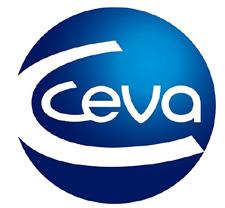







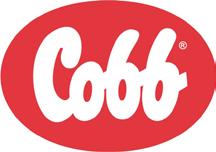


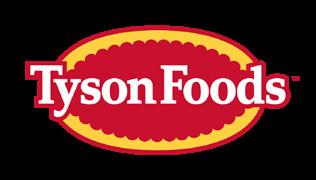


ADISSEO · AMBROSE · AVIAGEN · BOEHRINGER INGLEHEIM · BUNZL
CAL-MAINE · D&F EQUIPMENT SALES, INC. · IMPERIAL · JB HUNT
KERRY TASTE AND NUTRITION · LINDE · MALONE MECHANICAL
PILGRIM’S · WASTE MANAGEMENT · WAYNE SANDERSON FARMS · ZOETIS
AMCOR FLEXIBLES NORTH AMERICA · AZOMITE · CARGILL · CLEAR CREEK
GOLF CARTS + UTILITY VEHICLES · CONVEYOR TECHNOLOGY · DENALI
GEORGIA POULTRY COMPANY · KEMIN · OMNI SYSTEMS · SAFEHAVEN
SECURITY GROUP, LLC · SIMMONS BANK · SOUTH ARK ELECTRIC, LLC
TECNO POULTRY SOLUTIONS · TOLM GROUP
ORGANIZED BY THE POULTRY FEDERATION

JUNE 20-21 2025
THANK YOU FOR MAKING THIS YEAR ONE TO REMEMBER
AMLAN · BUFFALO BUILDERS · CR CRAWFORD CONSTRUCTION · DELONG’S GIZZARD EQUIPMENT · DONAHUE-CORRY · LUBING SYSTEMS
MCA · MULTIVAC, INC. · ONCE BY SIGNIFY · STARTKLEEN LEGACY · WATER TECH · WESCO DISTRIBUTION, INC.
ARVEST BANK · AVIAGEN · BOEHRINGER INGLEHEIM · BUNZL · BUTTERBALL · CARGILL · CHARTER NEXT GENERATION · CR CRAWFORD CONSTRUCTION · ELANCO · FORTREX SOLUTIONS · HAPPY EGG · INTERNATIONAL PAPER · INTRALOX · JBT MAREL · KEITH SMITH COMPANY · KEMIN
KERRY TASTE AND NUTRITION · LUBING USA · NOVUS INTERNATIONAL OKLAHOMA AG CREDIT · ONCE BY SIGNIFY · RELIABLE POULTRY SUPPLY
SAFARI BELTING · SIMMONS BANK · SOUTH ARK ELECTRIC, LLC · TOLM GROUP · VETERINARY SERVICES INC · WESCO DISTRIBUTION, INC. · ZOETIS
AMLAN INTERNATIONAL · ARVEST BANK · AZOMITE MINERAL PRODUCTION · JONES HAMILTON · KALMBACH NUTRITIONAL SERVICES · LEGACY
NATIONAL BANK · NOVUS INTERNATIONAL · OKLAHOMA AG CREDIT ONCE BY SIGNIFY · POULTRY GUARD · RELIABLE POULTRY SUPPLY
TYSON FOODS · ZOETIS
RELIABLE POULTRY · SIMMONS BANK · SYSTEM SCALE
Each festival ticket or package provides access to several key events throughout the weekend. This includes admission to the Industry Awards Banquet and Scholarship Auction on Friday, June 20, as well as the AllMember Cooking Competition on Saturday, June 21 — both held at the Rogers Convention Center. Attendees will also enjoy entry to the Cooking Competition Dinner and Awards Presentation that evening.
The ticket also grants access to the highly anticipated Festival Concert on Saturday night at the Walmart AMP in Rogers. Seating is determined by ticket tier — platinum, gold, silver, or lawn — allowing guests to enjoy the show in the style that suits them best.




All-Member Cooking Competition Saturday, June 21
Rogers Convention Center
Now in its 29th year, the All-Member Cooking Competition remains one of the most anticipated events of the Poultry Festival. Open exclusively to poultry and allied members, this spirited showcase takes place Saturday, June 21, at the Rogers Convention Center.
In keeping with the 2025 festival theme, “Welcome to the Jungle,” teams are encouraged to tap into their wild side — transforming their booths into immersive jungle scenes filled with creativity, energy, and flavor. From adventurous décor to daring dishes, participants bring the spirit of exploration to life.
Teams may choose to cook bone-in or boneless chicken or turkey, or provide a themed snack, drink, or interactive activity. All are encouraged to decorate their booths to help capture the imagination of festival attendees and judges alike.
Awards will be presented for:
Grande Champion
Bone-In Chicken (1st–3rd)
Boneless Chicken (1st–3rd)
Bone-In Turkey (1st–3rd)
Boneless Turkey (1st–3rd)
Best Booth (1st place)
This high-energy event is a true celebration of creativity, competition, and camaraderie in the poultry industry.
29th Annual Scholarship Auction
Friday, June 20
The Scholarship Auction is more than a festival tradition — it’s a powerful investment in the future of the poultry and egg industry. For more than two decades, The Poultry Federation has awarded scholarships to outstanding students pursuing careers in poultry science, food safety, veterinary medicine, engineering, and other critical fields that sustain and grow our industry.
Held during the Industry Awards Banquet, the 29th Annual Scholarship Auction brings together members, donors, and industry partners in support of education and workforce development. Every bid placed and item donated plays a role in shaping the next generation of leaders — providing meaningful financial support and a clear path forward for students across Arkansas, Missouri, and Oklahoma.
In 2024, the auction raised a record-breaking $135,000, helping fund $147,250 in scholarships for 30 deserving students. These contributions also benefit local 4-H and FFA programs, further strengthening the connection between agriculture education and our industry’s future.
This year, our goal is to raise $140,000 through a dynamic lineup of more than 15 live auction items and over 100 silent auction packages — all made possible through the generosity of our members, allied partners, and supporters.
Together, we are not just funding scholarships — we are building a legacy of leadership, innovation, and opportunity.
The Poultry Federation is highly effective in advocating for the poultry industry. They are a trusted representative that lawmakers rely on for information and guidance. This credibility helps advance the industry's agenda. Additionally, the federation excels at advocacy at the state and national levels, working closely with organizations like the National Chicken Council and U.S. Poultry & Egg. In recent years, they have significantly improved their efforts at the local level, addressing challenges stemming from urbanization into rural areas. Their adaptability in tackling these local issues has been essential for protecting the industry.
Mark Weathers, Vice President of Operations, Simmons Foods



As a proud sponsor and global leader in the poultry industry, Pilgrim’s extends a heartfelt thank you to everyone who made this year’s Poultry Festival a resounding success!
From our dedicated team members to our amazing community and partners — your energy, support, and passion make all the difference.
Together, we celebrated more than just poultry — we celebrated people, progress, and the power of coming together.
For being recognized as the 2023 Industry Leader of the Year by The Poultry Federation
Thank you for being part of the Pilgrim’s family.







Nursing profession navigates staffing shortages, industry trends
By Sarah DeClerk

Since the days of Florence Nightingale, nurses have played an invaluable role in patient care. However, nursing shortages have been around for just as long. The Center for American Progress notes that from the very beginning, there have not been enough nurses to meet demand for reasons such as a pool of workers or nurses limited by gender or race or nurses serving abroad during wartime.
Today’s shortage is driven by a multitude of factors, and it is one of the key issues affecting the industry. The Health Resources and Services Administration reported in 2022 a projected shortage of about 78,600 full-time registered nurses in 2025 and about 63,720 in 2030.
Those numbers have a direct impact on patients. The American Association of Colleges of Nursing notes that multiple studies have shown a greater proportion of professional nurses at the bedside is associated with better outcomes for patients, while large patient loads are associated with higher readmission rates, increased rates of infection and more burnout among nurses.
“When you don’t have enough staff at the bedside, it slows down the entire throughput,” said Michelle Powell, vice president and chief
nursing officer at Jefferson Regional Medical Center in Pine Bluff. “It overloads the emergency department.”
She noted a major shortage of medical-surgical bedside nurses as recently graduated nurses, who traditionally filled the role, seek work in speciality areas instead.
“Thirty-plus years ago, people would know when you got out of nursing school, you were going to kind of work at the bedside, at least for a couple years, and then you may look for something different, but I think that is the part that’s changed,” she said. “When people get out of nursing school now, a lot of them are looking for that Monday-through-Friday job, and I think that’s a little bit of a mind-shift difference from 30 years ago.”
Kelley Hamby, system chief nursing executive at Baptist Health, said the nursing industry is not immune to trends that have caused labor shortages in other sectors, namely a large population nearing retirement age. Coupled with that is the rise of specialty areas relatively new to nursing, such as nurse practitioners and nurse anesthetists.
A physician shortage, particularly in rural areas, has increased the demand for nurse practitioners, she said. She agreed that med-surg nurses are in high demand and added that other areas in need of workers include emergency rooms, critical care, neonatal intensive care units, and mental and behavioral health.
Powell noted the high turnover rate among newly graduated nurses, who are leaving the industry just as quickly as they are entering it.
“The turnover rate for nurses in their first one or two years is your highest turnover rate. It’s not your nurses that have 10 years of experience. It’s your new nurses with one or two years experience that turn over faster,” she said. “They’re experiencing burnout, compassion fatigue, and I
When people get out of nursing school now, a lot of them are looking for that Mondaythrough-Friday job, and I think that’s a little bit of a mind-shift difference from 30 years ago.

do think it’s a real thing.”
Amanda Irby, chief nursing officer at Conway Regional Health System, agreed that burnout is a leading factor behind the nursing shortage.
“People go into health care because they want to help others, so there’s a large degree of empathy and compassion with these humans, and I think it’s hard for people to leave that at work sometimes,” she said. “Over time, that begins to wear on folks, and they sometimes will get to the point where they’re like, ‘I’ve got to go work as an accountant and just deal with spreadsheets and not deal with people or feelings.’”
Hamby said Baptist encourages employees to prioritize their mental health.
“We provide care, and so sometimes you forget to take care of yourself and you forget the well-being of yourself,” she said. “We’re really trying to encourage those things, like, you know, take a break. Make sure you take your break today. Go outside. Enjoy some time away from the unit and from the patients and from the families.”

With rising costs and stagnant reimbursement rates, hospitals are having to be creative about ways to make staff feel appreciated, Powell said. While Jefferson Regional, like many hospital systems, offers wellness memberships and employee assistance programs, she said the most important part of cultivating mental

Kelley Hamby, Baptist Health
well-being among employees is company culture.
Sometimes you forget to take care of yourself and you forget the well-being of yourself.
“We work really hard on transparency so staff feel like they’re part of a team. I think the teamwork and feeling like you belong, people are going to work harder when they feel like they’re truly part of a team, like they’re making a difference, and I think it comes from having great staff, great leadership.” she said. “It’s a culture. I think culture plays a huge piece in burnout, staff feeling appreciated.”
Culture is also key at Conway Regional, which ensures nurses have a voice in the organization through inclusion in a multidisciplinary sharedgovernance structure.
“It’s called our clinical congress,” Irby said. “All the groups come together. This gives nurses a voice in their practice and a voice in the care that they’re delivering. Leaders listen very, very heavily to ideas and suggestions that the front-line staff are bringing about.”
Jefferson Regional is working to add more nurses to the workforce by beefing up its school of nursing, which it recently moved from a 10,000-square-foot facility into a 16,000-square-foot facility to allow for increased enrollment. Jefferson Regional can employ most every graduate at the hospital or at one of its physician practices, making the school an important tool for recruitment and retention.
“Having our own local school has been a great thing for us because students get to have clinical rotations in the facility and kind of make those connections, so that’s one way it’s been a great thing for us to be able to retain that staff,” Powell said. “I think being in south Arkansas, it’s a little harder to recruit people to this area. There’s not as many things to offer people.”
She added that nursing salaries have increased in recent years, and it is difficult for hospitals to stay competitive while maintaining balanced budgets. She said her hospital works to keep overtime to a minimum while focusing on retention efforts such as flexible scheduling and employee satisfaction.


Meanwhile, Baptist is working to bring more students into the nursing programs at Baptist Health College Little Rock by recruiting at the high school level, including through a program that allows students to graduate from high school ready to become licensed practical nurses and by offering more scholarships for students.
While Conway Regional does not operate a nursing school, it offers a nurse residency program that provides additional support to new-graduate hires.
“That is a nice recruitment tool,” Irby said. “It gives our new grads a whole lot of support, a whole lot more support than they would have if they just hired onto a unit and did that as a traditional orientation program.”
The hospital system also provides a tuition reimbursement program that allows nurses to grow their careers, which not only boosts staff morale but also helps recruit and retain employees, she said.
New technologies play a complex role in the industry. Hamby said Baptist Health uses virtual nursing programs to free up time for bedside nurses by having a remote nurse handle admissions.
“The medical history can be a little consuming, especially depending on how well you are or how sick you are, to ask those questions and to go through that in-depth review with the patient and enter all that into the medical
record of the patient,” she said. “We now can do that virtually and give time back to the nurse at the bedside to do other things that require the nurse at the bedside to do.”
However, introducing new technology has a downside. Irby said the large number of boxes to check and fields to enter when it comes to electronic charting can sometimes leave nurses feeling like they are nursing a computer, rather than a patient.
“Some of the very tenured nurses who are used to sitting at a patient’s bedside with no chart, no nothing and just interacting with the patient and doing patient care feel like it is impersonal,” she said. “They don’t like having a laptop or computer in the room or at the bedside because they feel like it is taking their focus away from the patient and almost giving the patient a bad perception that the computer’s more important than they are, and that’s obviously not the case at all.”
Despite having a shortage, we will still have people that want to go into nursing to take great care of patients, to give back to their community and to help leave the world a little bit better than they found it.

Powell agreed that electronic medical records have both benefits and drawbacks. While EMRs can increase efficiency, they also add to the cost burden faced by hospitals, she said.
“Multiple people can access the chart. Physical therapy’s in the same chart that you’re in, dietary, the physician, and so that has been a huge win in health care,” she said, “but I think on the other side of it, the cost for the electronic health records, for all this new technology, is very expensive.”
Medical charting is likely to be one of the aspects of nursing most impacted by artificial intelligence and machine learning, Hamby said, adding that electronic medical records can use various kinds of patient data to provide risk scores and other assessments.
Smart pumps that connect to charts to ensure IV drips are appropriate for each patient and smart beds that monitor for bed sores and alert staff when patients get up are also becoming a frequent sight at hospitals, along with robot-assisted surgery, she said.
She added that she expects the technological advancements to lead to a greater demand for informaticists who can analyze the data being collected by the machines and help hospitals use that data to better care for patients.
Irby said she expects the nursing shortage to continue, but she believes there will always be people drawn to the industry because they want to make a difference.
“They either were a patient themselves or they have a loved one who may have experienced an unexpected admission, a traumatic surgery, a cancer diagnosis, etc., and they got to see the impact that these bedside nurses make on a patient and, like, ‘I want to be that person for some-
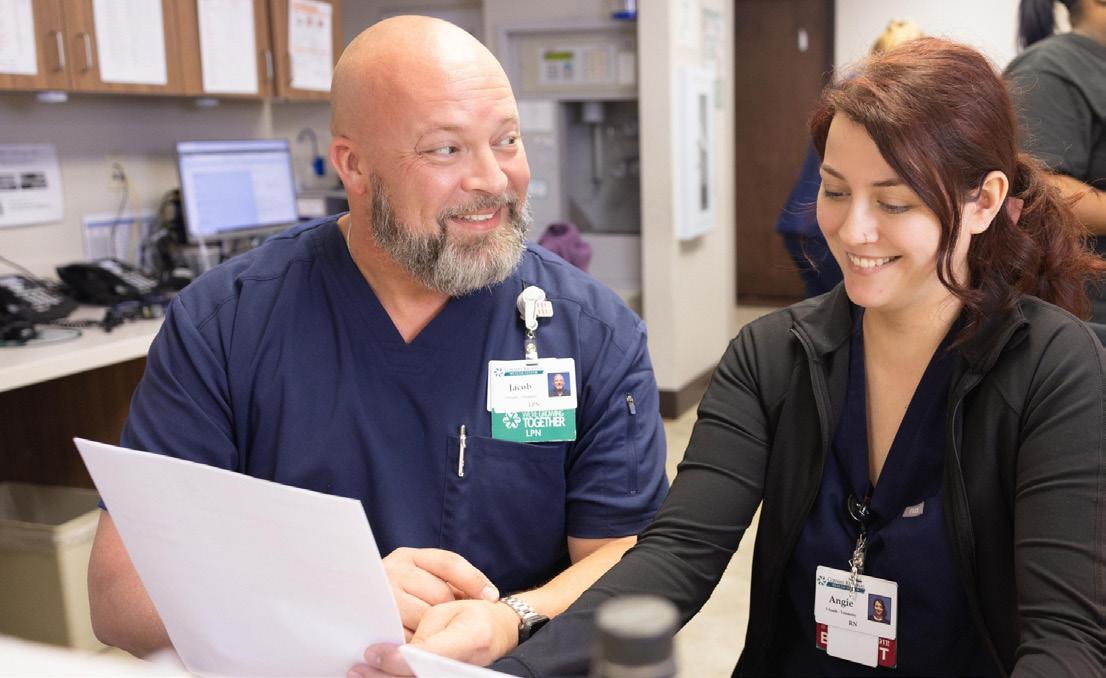

one,’” she said. “Despite having a shortage, we will still have people that want to go into nursing to take great care of patients, to give back to their community and to help leave the world a little bit better than they found it.”
From a mission that matters, competitive pay, development opportunities, and meaningful benefits, a career at Arkansas Children’s is filled with purpose and fulfillment. Our Total Rewards program includes benefits that go above and beyond to take care of team members at work and at home!
See What’s Waiting for You. Search for openings and apply at archildrens.org/careers EOE, Drug-Free, Nicotine-Free Workplace.








Conway Regional Medical Center has earned our Magnet® redesignation—a reflection of our nursing professionalism, teamwork, and superiority in patient care. Less than 10% of hospitals nationwide have Magnet Recognition status, and Conway Regional was the first hospital outside of Little Rock to receive the honor.
At Conway Regional, our culture thrives on connection, compassion, and community. We're not just seeking exceptional skills—we're looking for compassionate hearts committed to creating refreshingly personal patient experiences. Here, healthcare is never mass-produced. It's intentionally curated.
Visit ConwayRegional.org/Jobs for information on opportunities to join the Conway Regional family. We’re not just growing—we’re growing together.
Nurses in mental health care face unique circumstances, familiar challenges
By Mak Millard
According to the American Psychiatric Nurses Association, psychiatric mental health registered nurses and advanced practice registered nurses make up the second-largest group of behavioral health professionals in the U.S.
What is more, nearly 122 million Americans live in a designated health professional shortage area for mental health, according to Kaiser Family Foundation figures. NurseJournal.org notes that psychiatric mental health nurse practitioners help bridge those gaps, delivering “evidence-based, patient-centered care, including in under-resourced communities where mental health care is in short supply.”
“The psych nurse practitioners, you’ll find us everywhere,” said Kelly Carlson, a psychiatric mental health nurse practitioner and assistant professor at Arkansas State University in Jonesboro. “You’ll find us in school systems. You’ll find us in rural areas. You’ll find us working hand in hand with integrative medical clinics with, say, a family practice doc. You’ll find us in those kind of creases in between, where you need somebody, but it’s not the role of the M.D. or the psychologist.”
While registered and even licensed practical nurses play a variety of roles in mental health care spaces, there is a distinction between them and the psychiatric mental health nurse practitioner, or PMH-

NP. Both roles are vital at every level of care, but the PMHNP is an expert in treating mental health disorders ranging from depression and anxiety in outpatient settings to more acute conditions such as mania and psychosis at the inpatient level, Carlson said.
“To practice at the advanced practice provider or PMHNP level, an RN must complete an accredited graduate nursing education program that prepares them for the PMHNP scope of practice, which includes assessment, diagnosis and treatment planning,” Carlson said. “Nurses take different paths to the specialty area, but usually, they are nurses who enjoy the challenges of working with populations who experience marginalization and need advocates to help improve their quality of life.”
PMHNPs are equal partners in a multidisciplinary mental health care team, Carlson said, which includes psychiatrists, psychologists, social workers and other professionals. Regardless of level or setting, keen assessment skills are crucial for all nurses in mental health care as they face situations and circumstances unique to every individual they see.
“The mental health nurse’s recommendation to the team is so impor-
“[Psych nurse practitioners], you’ll find us in those kind of creases in between, where you need somebody, but it’s not the role of the M.D. or the psychologist.”
— Kelly Carlson psychiatric mental health nurse practitioner
tant because they’re with the patient all the time,” said Erin Melton, a psychiatric mental health nurse practitioner and member of the provider team at Springwoods Behavioral Health in Fayetteville. “They’re always on the unit. They’re always engaging with them and interacting with them, while some of the other team members are just seeing them for little snippets of the day.”
Anecdotal information and other observations from nurses can give the rest of the team a clearer picture of the patient’s situation and inform treatment decisions.
The recommendations are particularly critical in the context of mental health care, for which the best course of action is often more personalized than other areas of medicine. Penny Ward, senior nursing director of the psychiatric research institute at the University of Arkansas for Medical Sciences in Little Rock, described psychiatric nurses as “the backbone of that inpatient stay.”
“Without the psychiatric nurse, you cannot provide inpatient psychiatric care,” she said. “What nurses are observing, perhaps with a new medication regime, will make the difference as to whether that patient stays on that medication, whether a dose is altered or whether they are seeing potential side effects and that medication needs to be changed. That is absolutely the nurse’s job.”
Psychiatric care also leans especially heavily on relationships, since building rapport with patients is essential for being able to accurately assess their needs and responses. The demands of mental health care vary in significant ways from more traditional medical settings, where standardized treatments and straightforward diagnoses are easier to come by.
“We sometimes refer to psychiatry as an art rather than a science,” Melton said. “When there’s a certain type of [medical] emergency happening, there are very specific interventions that work for everyone every time, like CPR or dealing with a diabetic crisis or dealing with some type of injury. There’s just very obvious things to do, but it is so individualized and tailored to our certain patients in a mental health care crisis.”
Those in mental health care often do more emotional heavy lifting than physical. That is not to say, however, that there are no physical concerns to contend with in psychiatric care. Patients dealing with mental health disorders get sick just as anyone else would, and those struggling with substance use disorder have an additional host of physical symptoms to deal with during the detox process, for example.
“[When] people think about mental health, they think, ‘Oh, it’s all in your head,’” Carlson said. “Well, it’s not in your head. There are things that are very physical manifestations, like acute mania, delirious mania, catatonia. There are things other than substance use that involve the body. The head does have a body, and sometimes we forget that.”
The overlap between physical and mental health suggests the need to increase nursing students’ exposure to psychiatric settings, which, depending on the program and the time available to focus on the subject, might only receive passing consideration. Even those with no intentions of pursuing it as a specialty can benefit.
“A mental illness does not prevent you from needing a hip replacement,” Ward said. “A mental illness does not stop you having a heart attack. Gaining some real-life experience and skills with being sensitive and skilled in helping patients with mental illness navigate the medical environment is important for every single nurse.”
Differences aside, mental health nurses come up against obstacles familiar to any corner of medicine, such as care accessibility, provider burnout and staffing concerns, among others. A 2022 paper in the

Journal of the American Psychiatric Nurses Association concluded the nursing field must prepare for “significant retirements” among the psychiatric mental health workforce in the coming years.
“There’s not enough people coming into the nursing profession, full stop,” Ward said. “It’s not just Arkansas; it’s a national shortage in the thousands upon thousands of nursing positions.”
Shifting attitudes toward the psychiatric nursing specialty offer some encouragement, at least in terms of bringing more prospective nurses into mental health care. Traditionally, nursing graduates have been expected to do their time in medical-surgical nursing before considering any specialization. Psychiatry, as a result, has rarely been a first career stop.
“I loved my psychiatric clinicals, [and] I loved my mental health class, but the kind of talk around what to do after graduation was, ‘Well, don’t specialize in mental health because you’ll lose all of your clinical skills,’ like doing IVs and doing all these complex procedures,” Melton said. “There was kind of a push away from it as a new nurse.”
Strides in lessening stigma around mental health issues in general have also given more people an appreciation for the importance of psychiatric care, leading more new nurses to consider the specialty. Over her two years as director, Ward said, a number of new graduate nurses from every class have chosen to come to the psychiatric research institute, including four new additions this summer.
“I think med-surg is fabulous,” Ward said. “I spent a lot of my nursing career in med-surg, but I think if you know categorically that mental health is where your passion is and what you want to spe-



cialize in, I don’t think it’s seen now that you have to do a foundational med-surg time before specializing.”
Any caregiver, nurse or otherwise, understands the risk of burnout. Nursing is also a predominantly female-led profession, Melton said, meaning many nurses of all stripes serve as caregivers in the home and other nonwork settings. Psychiatric care brings additional emotional complications due to the subjective nature of mental health disorders and treatments. Results are not always immediate or clearly visible as they might be in a hospital or other setting.
“Sometimes it’s just hard to see those wins as often in mental health care, especially in our setting — in an acute care setting, inpatient at Springwoods — because we’re treating patients for about seven days,” Melton said. “Then, hopefully, we’re not seen, so there’s not as much satisfaction that you might see with a physical condition of, ‘Now their flu is resolved,’
or ‘Their cancer is in remission,’ or ‘Their bone is healed.’ It’s not as black and white.”
Similar to M.D.s, rural areas have a harder time retaining qualified PMHNPs, Carlson said. In that regard, telemedicine has been beneficial for reaching underserved areas. Employers have also been supporting nurse practitioners in other specialties as they pursue certificates in psychiatric mental health, helping retain and educate more of the workforce. Certain obstacles remain, such as a mosaic of state laws restricting independent practice for PMHNPs.
“In some states, the PMHNP’s scope of practice is restricted by requiring M.D. supervision to practice at the full level of their educational preparation,” Carlson said. “Nurse practitioners that own their own practices [have] to pay a lot of money to a physician to supervise them. … There’s a lot of complications, and because each state is so different, it just adds a whole other layer.”
Rural areas are often underresourced regarding traditional medical care, let alone psychiatric options. Those with a mental health issue such as depression are already at a disadvantage when it comes to seeking out the support they need. The problem is only compounded by being in a mental health care desert or lacking the finances to obtain treatment. Without early intervention, there is a greater chance individuals will need more acute inpatient care for their conditions.
As with other medical crises or in cases where an individual lacks insurance, the emergency room has become a kind of default resource. That poses problems both because it strains emergency room resources and because ERs are not the best equipped to provide mental health treatment. Patients dealing with psychotic disorders such as schizophrenia or bipolar disorder face the additional difficulty of being surrounded by the stimulus of an ER triage area, Melton said. Springwoods works with several emergency rooms in the area to stream-
line the referral process, as well as offering no-cost assessments and working with local police departments.
“We don’t want patients going to jail if they need to come to the hospital,” she said. “You wouldn’t want someone with a broken leg to go to jail because they needed help and they didn’t know what to do. You would want them to go to the medical hospital. … There are different ways that we’re able to reach out in the community and eliminate those barriers. It’s not perfect yet, but that’s OK. We’re working on it.”
Crucial as it is, the psychiatric nursing field is not for everyone. By no means are other areas of nursing easier, but nurses can find their resilience and emotional maturity tested in unique ways and dealing with the specific mental health needs of different groups requires flexibility. That more graduates and even established nurses are finding their way to the field is an encouraging sign and one that could not come at a better time as mental health support becomes more important than ever.
“There’s not enough people coming into the nursing profession, full stop.”
— Penny Ward senior nursing director of the UAMS Psychiatric Research Institute
“It often does not get the press of the other subspecialties that are more dramatic and more ER-like,” Ward said. “I just want people to consider psychiatric nursing because the relationships and the fulfillment that you can get from assisting patients in acute mental health crises is like nothing I have found in my 37 years as a nurse.”


Briarwood Nursing and Rehab is a 120-bed skilled facility located in an urban setting within the heart of Little Rock, in the neighborhood of Briarwood. We are located just minutes from downtown Little Rock and are only one block off interstate 630.
We provide long-term care and short-term rehab care. All residents are monitored throughout the day with assistance in providing daily care as is needed: bathing, dressing, feeding and providing medications. Briarwood staff also work at ensuring the best care for residents through individual care plans of residents' needs, as well as daily activities, which allow for a variety of interests and abilities.
Nearly all - 98 percent - of our rehab residents return to the community as a result of positive, caring therapists. Briarwood's approach has provided healing to many people in the community.
At Briarwood Nursing and Rehabilitation Center, we are committed to ensuring that the best possible care is given to you or your loved one in an atmosphere that is calm, quiet and focused on healing. We endeavor to ensure that all aspects of your well-being — mental, physical and spiritual — are cared for in a peaceful and safe environment. Our staff strive to promote dignity, respect, and independence as much as possible, in a beautiful, soothing enviornment that was designed with our residents' comfort in mind. Briarwood's service-rich environment is made possible by its dedicated staff, from our nursing staff and therapists, to our operations and administrative employees. At Briarwood, our residents enjoy three generations of staff and families. That is over 30 years of service to the community!

As health care rapidly evolves, so does the role of the nurse. At the forefront of the transformation are emerging specialties that combine traditional care with new technology, addressing some of the nation’s most pressing health concerns.
Stephanie Whitaker, chief nursing officer at Mercy Hospital Fort Smith, said emerging specialties have gained traction in recent years. The specialties include not only fields such as oncology but newer roles such as telehealth nurses.
One of the roles nurses can specialize in is the role of nurse navigator, a position that is becoming an increasingly vital link between patients and resources. A nurse navigator is defined as “a middleman between patient and clinical care staff,” according to Incredible Health. “They help navigate the patient through the treatment process by connecting them to resources and information to make informed decisions,” the site states.
A nurse navigator is especially helpful in rural areas where specialists are scarce, Whitaker said.
“Nurses in rural communities really step in to fill the gap,” she added. There has been a special focus in Arkansas on nurse navigators for OB-GYN and prenatal care. The professionals help expectant mothers understand their care plans, coordinate appointments and access social-support services. The goal is to lessen the maternal mortality rates in the state, which has one of the highest rates in the nation.
Another pressing health issue is the rise of psychiatric conditions, particularly among children. Jamie Wiggins, chief operating officer at Arkansas Children’s Hospital in Little Rock, said there is a growing demand for nurses who specialize in mental health.
The escalating mental health crisis in the United States has been amplified in recent years. Anxiety, depression and other psychiatric conditions have surged among all age groups, but children and adolescents have been especially affected.
Among people ages 6 to 24, the share of emergency room visits for mental health problems nearly doubled between 2011 and 2020, the Annie E. Casey Foundation states.
As a result, the need for nurses who specialize in mental health care has become more urgent than ever. Child psychiatric nurses are specially trained to handle acute mental health crises and work in tandem with school counselors, social workers and pediatricians.
Alongside those emerging specialties, technology is dramatically reshaping nursing roles. Telehealth, artificial intelligence and nursing informatics are not just tools but are becoming specialties in their own right.
“There is not a nursing specialty that isn’t impacted by technology and AI because it’s all interconnected,” Wiggins said. “The way that we are all going to be able to manage a population and improve overall health is to make sure that we’re actually adjusting our practice to accept those technologies.”
Telehealth in particular has become a central component of modern patient care. The COVID-19 pandemic accelerated its adoption, but the field continues to evolve even now. Nurses are being trained specifically for remote care, a field that demands a different skill set than traditional face-to-face nursing.
Susan Gatto, a professor and director of the school of nursing at the University of Central Arkansas in Conway, said for remote nurses, “You can’t lay your hands on people. You can’t put your stethoscope on them. You have to really pay attention to the symptoms.”
Nursing informatics is also on the rise. Informatics professionals blend clinical expertise with data analysis and information technology to improve patient outcomes and optimize health care systems.
“They bridge technology and nursing knowledge and electronic health records and managing data,” Gatto said.
However, keeping up with the constantly evolving landscape of health care technology has proven difficult.
“It’s almost like by the time you’ve learned one technology or one product, there comes a newer version that you have to evaluate,” Wiggins said, “so I think that the challenge really becomes trying to make sure you select the right technology for the right patient population and not get distracted by all the newness that’s always on the market.”
Telehealth, artificial intelligence and nursing informatics are not just tools but are becoming specialties in their own right.
Mercy and Arkansas Children’s emphasize the importance of involving nurses in the development of health care technologies.
“I’m proud to work for an organization that supports that nursing voice and really makes sure that we have nursing voices at the table when we’re making decisions,” Wiggins said. “Health care is innovating so rapidly, and nursing is right at the forefront of that.”
Nurses are not only leading the charge in embracing enhanced tech but also in educating new nurses about emerging specialties. Mercy has a dedicated education unit that pairs nursing students with nurses in the field who act as clinical instructors. That helps students build real-world experience while enhancing patient care. Arkansas Children’s provides several residency and fellowship programs.
At UCA, Gatto and her colleagues are also making early exposure to the numerous specialty options a top priority.
“Anywhere that you can think of that there are people, there is probably a nurse,” Gatto said.
Whether it is in space medicine, forensic nursing or environmental health, nursing reaches into every aspect of life. Yet with that diversity comes complexity.
“The rapid pace of change can be challenging,” Whitaker said.
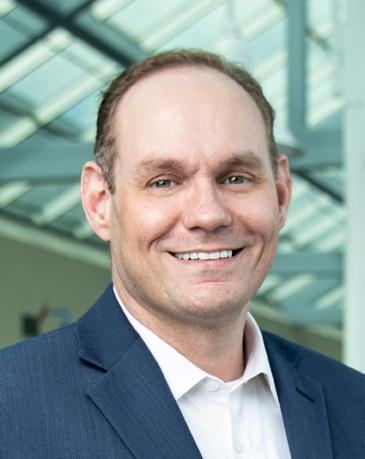
At Mercy, Whitaker said AI integration is helping nurses save time on documentation and focus more on providing care. Both Jamie

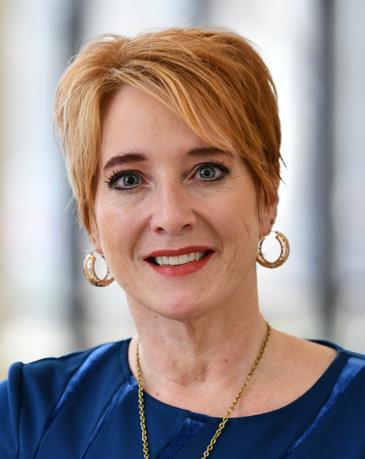
New technologies, combined with skilled, hands-on nursing care, are at work at Arkansas Children’s, below.
(Photo courtesy of ACH)

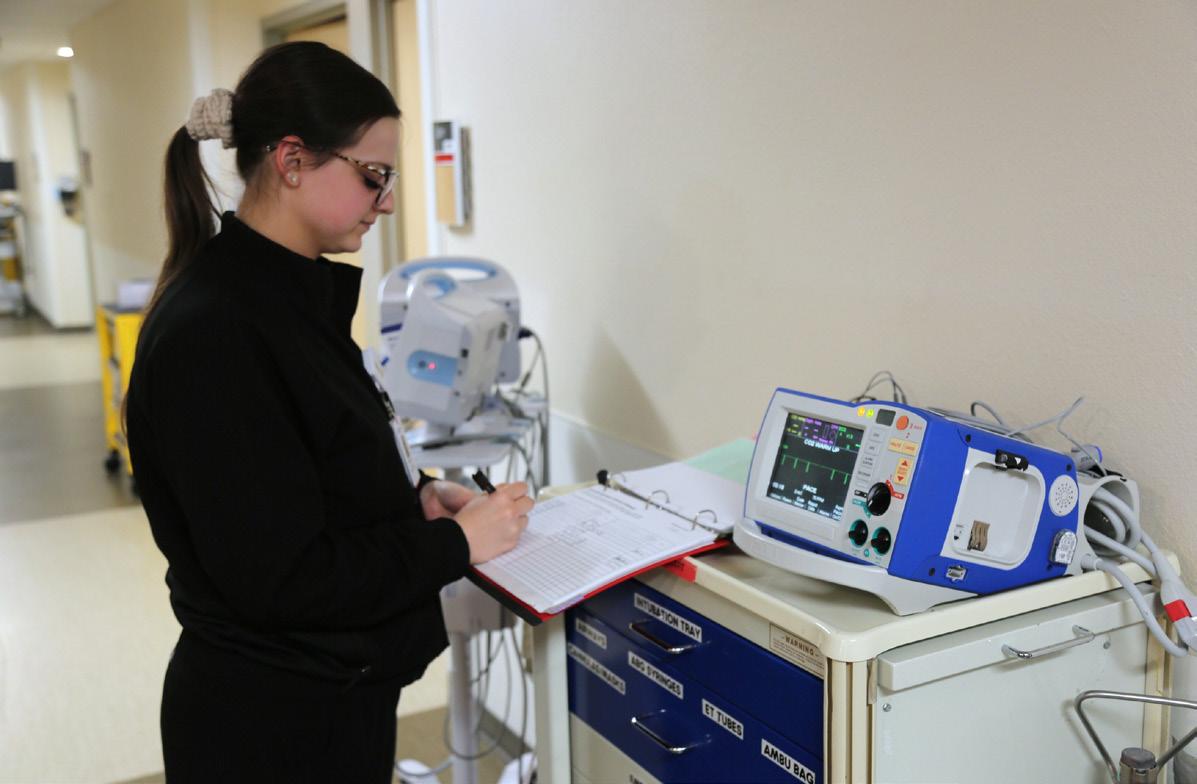

A nurse navigator is especially helpful in rural areas where specialists are scarce.
Whitaker said having the knowledge and skills one needs and a mentor to turn to when help is needed helps increase job satisfaction and keeps nurses in the field.
“There’s satisfaction in the variety and in making a change while still giving back to the community,” Whitaker said.
The programs not only build a more skilled workforce but also address challenges such as burnout. Authorities predict a shortage of 63,720 full-time RNs in 2030, according to a health workforce analysis published by the Health Resources and Services Administration. That makes recruitment and retention of nurses imperative to the industry.
Telehealth helps elevate some of the strain nursing can have on the body, Wiggins said. AI and other technologies can also facilitate decision-making, allowing nurses to avoid mental burnout.
“How each nurse achieves balance and optimal health is highly individualized,” Wiggins said.
Even amid the rise of AI and telehealth, the essence of nursing remains the same.
“The role of the nurse as patient advocate and provider of nursing care, it doesn’t change those core tenets,” Wiggins said.
Whether managing chronic conditions with high-tech tools, guiding individuals through the health care system or training the next generation of caregivers, nurses are adapting and building the future.
Nursing shortage aside, Gatto said nursing remains the largest workforce in the nation.
“Nurses are everywhere,” she said.
In late 2024 the University of Arkansas for Medical Sciences (UAMS) Medical Center was awarded the highest international recognition for excellence in nursing from the American Nurses Credentialing Center (ANCC), achieving designation as a Magnet® hospital.
Achieving Magnet status is part of the institution’s long-term strategic goals and reflects the university’s commitment to delivering world-class care to all patients. Research demonstrates that Magnet recognition provides higher job satisfaction among nurses, higher patient satisfaction and lower mortality rates.
“We are thrilled to be recognized by the ANCC for a culture that empowers nurses and the entire care team to focus on patient safety and the best possible patient experience,” said Chief Nursing Officer and Associate Vice Chancellor for Patient Care Services & Clinical Operations Tammy King-Jones, PhD, RN, NE-BC. “This designation sets high expectations, and we are committed to ensuring those are met.”
“Earning Magnet designation means that UAMS commits itself to a higher standard for nurses. We are not merely encouraged but demanded to practice at the top of our license,” said Steven Ross Ragsdale, RN, from the Psychiatric Research Institute at UAMS.
“Our nurses are actively engaged in creating the best possible outcomes for our patients and their families,” said Lisa Odena, an RN IV in the medsurg float pool. “We can do that because we are valued members of the health care team and we have a voice in the care we provide.”
One of the hallmarks of Magnet institutions is how nurses are integrated into decision-making related to patient care and clinical operations.
“We work closely with residents, attendings, and multidisciplinary teams to provide the highest quality care in the only adult Level 1 Trauma Center
in Arkansas,” said Neko Gilbert, RN, team lead in the Emergency Department. “There’s a strong focus on professional development with many of our nurses joining the Emergency Nurses Association and ongoing opportunities for nurses to enhance their skills.”
“Being a part of the journey to obtain Magnet status really highlighted for me why nurses love working at UAMS,” said Mary Catherine Smith, RN Care Manager. “There really is no place like UAMS. From the workplace culture to the excellent care we provide to our patients, UAMS truly is the best!”
We invite you to learn more about nursing at UAMS. Whether you’re a patient or a health care professional, you’ll quickly see that our nurses are in a league of their own.
Not just during Nurses Week—at UAMS, we continuously acknowledge and celebrate our nurses for their exceptional care and commitment to our patients. Thank YOU for making a difference every day! #NursingExcellence


By Dwain Hebda
The job of nursing is at once among the most recognizable and the most misunderstood professions there is. Virtually everyone who has had an interaction with the health care system on any level encounters a nurse and the images from 2020 of nurses standing their post to the brink of collapse during the COVID-19 pandemic are still fresh in many Americans’ memories.
Most people also know that nurses are a human resource in short supply. The 2024 State of Nursing Report released last month by nurse.org found 84 percent of nurses queried in 2023 felt the nursing shortage was getting worse, the three main reasons for which being burnout, poor working conditions and low pay, respectively. In fact, the survey found nearly 1 in 3 nurses had a secondary form of income to make ends meet.
On the other hand, there is a lot about nursing that the general public does not

understand or appreciate. Nursing is hard physical work in the moving, shifting, transporting, lifting and occasional restraint of patients in various states of distress. The job is also emotionally draining, and the toll it takes can stealthily multiply for even the most seasoned nurse.
Last year, the Michigan Journal reported a record number of nurses, 729, died by their own hands between 2017 and 2018, and the rate had not slowed much by 2023, when 16 registered nurse suicides per 100,000 was the second-highest mark on record.
Another often-unknown fact about nursing is how versatile a nursing degree can be and how widely nurses are dispersed throughout society. Yes, there are still millions who work in hospitals and clinics, directly serving patients, but a surprising number of people with nursing degrees put that education to work
Kelley Hamby never planned to be an administrator, let alone the first system chief nursing executive with responsibility for all nurses in the Baptist Health system. In fact, she did not start with the health care system in a nursing role at all, although that would soon change.
“I joined Baptist in 1990 as what today we call a unit customer service specialist, or the secretary of the nursing unit. I came to work here on our nephrology unit,” she said. “Health care was a goal; I was blessed to be a volunteer at Arkansas Children’s Hospital [in Little Rock] where I spent summers volunteering.
away from the bedside. Nurses can be found working in research labs, schools, the classroom, pharmaceutical companies, insurance companies, law firms, and even ministry and as entrepreneurs.
The State of Nursing Report found that while bedside nurses felt less like changing jobs in 2023 than in past years, about 1 in 4 reported their view of their current career path was to stay in nursing but not in a patient-facing role. About 23 percent of those looking to make any change in their career listed leaving the bedside as their primary motivation.
Arkansas Money & Politics interviewed four local nurses at various stages of life whose careers are playing out in nontraditional settings. We sought to discover why they chose the path they did, what unique experiences they encountered and how their choice of venue affected the day-to-day responsibilities of being a nurse.
“I knew from that I wanted to be in health care, and I thought I wanted to be a nurse, I wasn’t 100 percent at that point. I just knew I wanted to be in health care for sure.”
After a year of employment, Hamby enrolled in the nursing curriculum at Baptist Health College through the hospital’s scholarship program. After earning a bachelor’s degree in nursing from the University of Arkansas Little Rock, working and taking some time off to raise her children, she completed two master’s degrees, one in nursing and one in business.
About five years into her nursing career, she began to find herself gravitating to management roles. As her education advanced, so did her opportunities, but she also said moving into leadership positions took some adjustment.
“One of the biggest things about that is just understanding that you’re responsible for the care that’s delivered to the patients, whether you’re independently delivering the care or someone else underneath you is delivering the care,” she said. “Then, obviously, the 24/7 responsibility is a big piece of it. As a leader, you’re on call 24/7 for whatever may go on in your department. That was a big adjustment.”
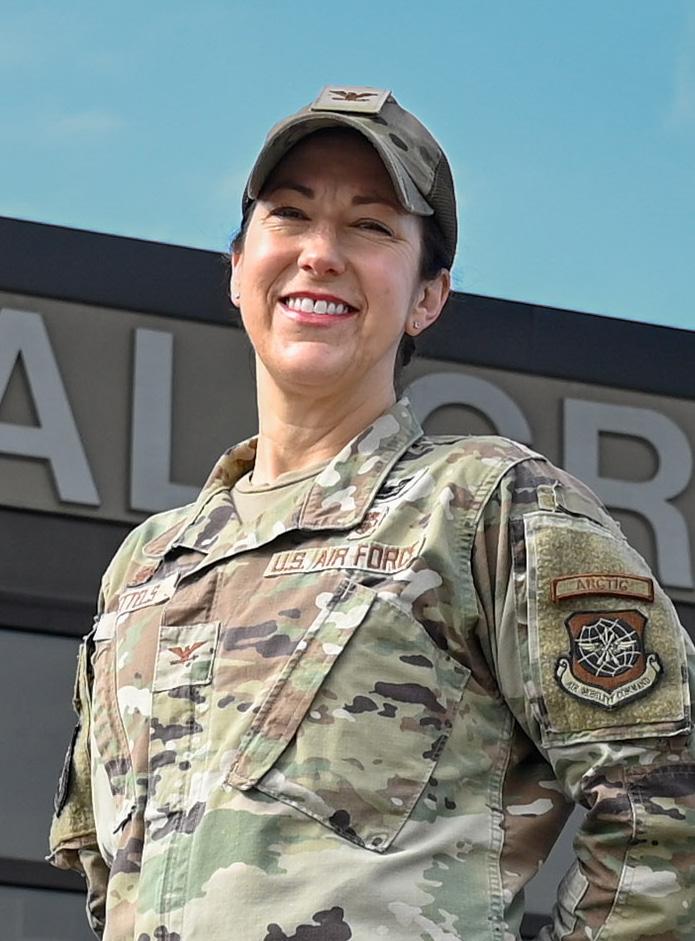
Col. Elizabeth Hoettels, U.S. Air Force
The path that led Col. Elizabeth Hoettels into a career in military nursing — a career which, in turn, found her assigned to multiple domestic and international duty stations, the latest being Little Rock Air Force Base in Jacksonville — was a winding one indeed. The child of Army personnel, she graduated high school and headed for the service herself.
“I joined the military because, one, I needed money for college,” she said, “and two, I wanted to see the world, and I needed somebody to help me pay for it.”
She enlisted in the U.S. Army as a Medical Service Corps officer, a role she described as more administrative in nature, while she earned a degree in international relations. While deployed in Afghanistan, she decided to add nursing to her knowledge skill set.
“Even though I was a medical administrator, we were expected to have a certain level of care capabilities, combat lifesaver and a few other things,” she said. “I spent a lot of time on my last Army deployment in Afghanistan, working with the minister of public health. I was great at managing
projects, but I really loved working with people, so I went back to nursing school.”
Hoettels knows her dossier looks unconventional — for starters, leaving the Army only to enter the Air Force and completing her nursing degree at age 31 — but such was the depth of love she had for the nursing profession, especially used to benefit America’s fighting men and women.
“I love my military family, and being able to take care of my military family, our nation’s sons and daughters, is incredibly important to me,” she said. “If somebody needs care, I want to be the one who’s there to take care of them. I want to be the person who’s flying somebody home to their family. I believe everybody has the right to be able to get home to American soil and be with their family.”
Adding a doctorate in executive leadership to her resume led her to roles that have taken an even broader view of military health care and the development of medical teams. That work helps set the framework for best practices from training to triage to help ensure a uniform standard of care.
“In the Air Force, one of the great things is that you can do clinical types of things,” she said. “That’s where I was out supporting Naval Special Operations and all sorts of other folks. We can also be leaders in areas such as nurse scientists. I have found a love of leadership and taking care of people, and I translate being a nurse leader as you’re still taking care of people; they just might not be actively bleeding but still need support.
“One of the things I’m doing is making sure that the young nurses coming in are getting trauma training, they’re getting exposure to all sorts of things. I’m investing in them as a leader, but I’m also investing in them, especially my nurses, as a clinician.”
In 2022, she reached the summit of the company in her current role, for which she has direct and indirect responsibility over some 2,200 employees.
“The first thing I would say about it is I’m humbled,” she said. “I really believe and know that I owe my career to Baptist Health for helping me to go to nursing school and to obtain my nursing degree and then obviously to God, who has put me here and has opened doors for me to go through to continue to prosper and to be able to grow in my role.”
Her advice for the next generation of nurses is to study hard and think big.
“The beauty of health care and the beauty of nursing is that there is such a vast variety of what you can do with a nursing degree,” she said. “Whether it be in a hospital setting or outside of a hospital setting, it sets you up for life because there will always be health care, there will always be a need for health care, and you can do pretty much anything you want to do, from touching a patient to doing informatics. You can work for pretty much any different aspect of the business world.”
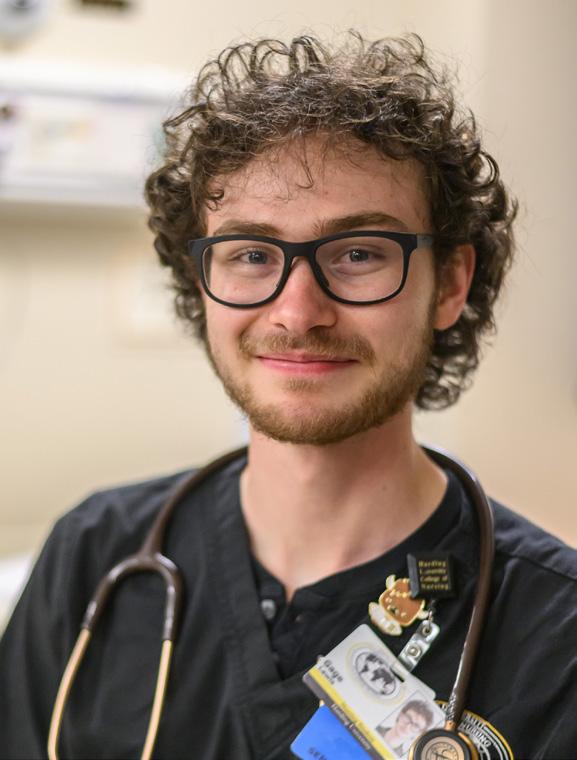
A life-threatening episode on a Boy Scouts canoe trip as a youth opened Gage Lewis’ eyes to the power of nursing. When a member of the group became seriously incapacitated, requiring the troop leader to get him to medical help, Lewis was left in charge of getting the rest of the group back to base camp.
“We managed to get everyone back, and the kid was OK. He was just really sick for a while,” he said. “I got everyone back, and that very next semester, I took a wilderness course, and I fell in love with it.
“My original plan was to be a backpacking guide, and then I realized that my favorite part of backpacking is when something goes wrong, so I did a dual enrollment EMT class in Colorado,
and I fell in love with medicine. I wasn’t always a great student, but I was top of my class on that one.”
After high school, at his parents’ insistence that he get a college degree of any kind, he enrolled in the nursing program at Harding University in Searcy.
“Ever since then, it’s been 110 percent medicine. I have found a huge passion for it,” he said. “It’s really, truly been my calling ever since that pretty disastrous day.”
Something that enhanced his love of caring for others is the school’s medical missions program, of which he has completed two.
“Being a Christian school, Harding has a huge focus on mission work,” he said. “Long before my time, a couple of nursing students went down to Haiti to help with disaster relief over spring break. Today, that’s become a 10-day-long excursion where you’re setting up mobile clinics in Nicaragua.
“It’s very unique from American health care. The Nicaraguan system is a socialistic system that has technically ‘free’ health care. The only issue with it is they don’t have enough
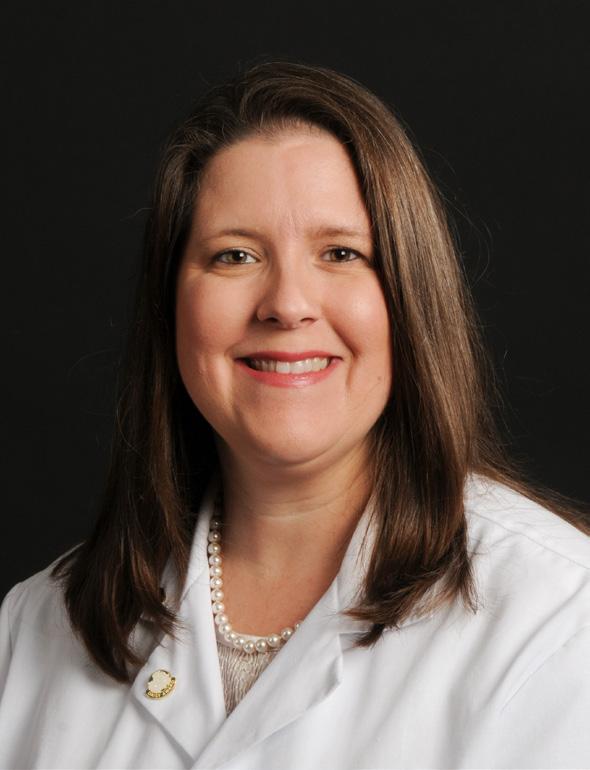
Nursing has always been in Amy Hester’s blood. The Benton native earned her nursing education from the University of Arkansas Little Rock and University of Arkansas for Medical Sciences in Little Rock. She graduated with a bachelor’s degree in 1994 and later earned both a master’s and Ph.D.
She spent two decades-plus in the classic nursing career track, serving patients in UAMS’ trauma, burns and surgical units and moving up the leadership ladder, ultimately reaching the level of director of nursing research and innovation.
As with any nurse at bedside, every day was an opportunity to impact a life, but what happened along the way opened the door for Hester and her coworker and fellow nurse, Dees Davis, to serve thousands of patients nationwide.
“We’d had a young man fall on our ortho unit, and he died from it. That was a very public case for UAMS and just a really tragic situation,” she said. “That was the genesis for us. We asked to see the hospital’s data, and UAMS was next to the bottom in the nation in falls with injury. It was not something we were proud of, and we knew we needed to be better.”
The system the two nurses created provided a data-driven
providers, so while there might be a free clinic, it’s a six-day walk to get there, and since staffing is irregular, there’s not super-consistent hours.”
The Harding group worked hand in hand with local doctors to bridge the gaps in health care as best they could within the scope of their training and expertise. Participants learned how to minister to people the old-fashioned way, with compassion and skill, even in the most rudimentary surroundings.
“We’ve done clinics out of churches underneath a mango tree,” he said. “We would drive anywhere from 15 minutes to the local school to help set up a little building to the side, all the way to four hours on a 4X4 trail into these super rural communities.
“The whole experience is geared towards having students find their ‘why’ in medicine. A lot of med students will come and join us, and if there’s anything true about medical school, you don’t get to do something. Like, you don’t get to perform your passion or do anything medical for four years. This trip gives students that opportunity while providing a service to the wonderful people of Nicaragua.”
way to assess and evaluate each individual patient’s risk for falls and then, based on that, provided a care plan for personnel to follow that proactively served each patient accordingly. The impact of the system on hospital performance was dramatic.
“We took the program that we developed for the neuro unit, and we pushed it out to the rest of the house the following year,” Hester said. “We pushed ourselves from the 98th percentile to the 11th percentile in our national ranking of falls with harm.”
Hester said she did not initially think of turning the system into a business, but the potential for the system eventually led her to retire from nursing and, with Davis, she launched HD Nursing, where Hester is now chairwoman and CEO, in 2012. Today, the company’s full program covers about 50,000 inpatient beds and about 15,000 emergency department bays. She has seen her nursing education at work throughout her time in business.
“It really helps you understand risk, time management, helps you prioritize needs in very complex situations and helps you understand when you need to pivot,” she said. “Direct patient care is hard. It’s about being able to manage and juggle and reprioritize in a constantly changing environment. You know, I’ve made my plan for how my shift is going to go. I can see the writing on the wall that I need to do something different, and then I provide crisis management for that situation.
“My advice for anyone in nursing is to stick with your education. Get it done, get good clinical experience behind you, and know that there are a lot of different ways that you can serve patients. There’s just so much opportunity and flexibility that the sky’s the limit for what you want to do.”








At CARTI, our nurses are more than caregivers — they are the steady hands, the calming voices and the unwavering hearts that guide patients through some of life’s hardest moments. With unmatched dedication and skill, they ensure each patient feels seen, supported and safe. We are deeply grateful for their commitment to our mission, their pursuit of excellence and the dignity they bring to every step of the cancer journey.
• Interventional Radiology
• Observation Unit
• OR Circulator
• Radiation Oncology
• Infusion
• Medical Oncology
• Research
• Urology

At UA Little Rock, you won’t just study nursing— you’ll practice it from day one. Gain real-world skills in our state-of-the-art simulation lab, where hands-on learning prepares you for patient care. With nursing scholarships, half-off tuition, and the Trojan Guarantee, we’re making top-tier nursing education more accessible than ever. Expect More. Expect UA Little Rock.
Learn more about your nursing career at ualr.edu/nursing or scan the QR code:






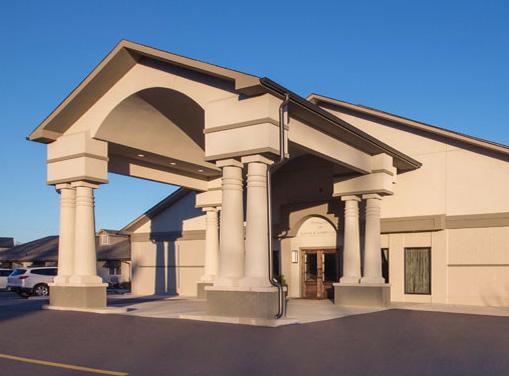
We are devoted to providing high quality care which celebrates the dignity and grace of every person who enters our facility.
At Sherwood Nursing and Rehab we are committed to providing the highest quality of patient care. Our qualified staff is here giving support for the tasks of day-to-day living, allowing for the enjoyment of more pleasant and carefree activities.
We specialize in Short-Term Rehabilitation and Long-Term Care services.




For nurses in elder care homes, the job is taxing, but the rewards are worth it
By Doug Crise


After 25 years as a nursing home administrator, Joan Robbins said it only gets harder.
Robbins oversees a team of nurses at Briarwood Nursing & Rehabilitation in Little Rock, a long-term care home for the elderly. Robbins said she loves each and every nurse on her roster, and she is proud of how they arrive early and stay late if a situation calls for it.
Finding people to fill her ranks is never easy, though, and she understands why better than anyone. Put simply, nurses at elder care homes are special people. They have to be.
“It is a strenuous job if you’re good at it,” Robbins said.
What do nurses in elder care homes do? The better question would be, “What don’t they do?” On any given day, a nurse may plan a care agenda for residents, monitor cognitive functions, analyze urine and fecal samples, oversee ambulatory function, and plan and assist with physical therapy — and that just scratches the surface.
What separates care home nurses from the rest of the crowd, what makes them special, is a necessary combination of compassion, communication and good old-fashioned mental toughness.
“It definitely takes a special person to be able to work in long-term care,” said Jennifer Siems, an administrator at Nursing & Rehabilitation Center at Good Shepherd in Little Rock. “You do have to have that compassion for the elderly and the understanding of these families.”
That is where the demands of an elder care home diverge sharply from other areas of nursing. A nurse must be able to clearly communicate with the families of residents, and that can often mean breaking bad news. Unlike a hospital stay, during which most patients are treated and eventually leave, the vast majority of nursing home residents will be there for the rest of their lives.
A nurse cannot simply monitor and record residents who have declining health. Nurses must also be able to distill patient information into understandable terms and then communicate those
terms to the residents’ families.
Often, the news is not good.
“Going into long-term care, that’s the last thing anybody wants to do,” said Mike Nichols, an administrator at Sherwood Nursing & Rehabilitation Center. “That’s the last place [patients] want to be. The majority of the time, that’s the last chapter of their lives. You’ve got to be able to deal with all the emotions from all different varieties of backgrounds. You’ve got to be able to listen, then respond and treat them with empathy.”
Even if residents are still in reasonably good health, for many families, the act of sending a loved one to a long-term care home is the beginning of the grieving process, and it is the nurses who are on the front lines.
“Every family is going to respond differently when losing a loved one who is going into long-term care,” Nichols said. “We’ve had couples who have been together for 60 years, and they’ve made a promise to each other to not put themselves in a long-term care facility. It just gets to the point where it’s too much for them or their family, and they have to make that choice.”
Lance Stack is director of operations at Nursing Consultants, a consulting firm that assists nursing homes, and he said the demands on nurses go much further than clinical knowledge. At hospitals, for example, it is usually the doctor who visits with families and imparts bad news regarding a loved one. At long-term care facilities, that responsibility often falls to the nurses.
No matter how good a nurse’s education and training have been, there is really no way to prepare for it.
“We want to hone in on and try to capture those people that are going into nursing because they have a genuine heart to help people,” Stack said.
Elder care nurses are often thrown into situations where emotions run high, whether they involve residents, their families or both. Even with a full heart and a true sense of compassion, every nurse is human. To succeed in the field, nurses need a support structure.
“Mental toughness is very important,”
It definitely takes a special person to be able to work in long-term care. You do have to have that compassion for the elderly and the understanding of these families.
— Jennifer Siems Nursing & Rehabilitation Center at Good Shepherd
said Emily Loy, director of nursing at Belvedere Nursing & Rehab in Hot Springs. “You can go to work, and there’s the likelihood that someone you may have known is going to die. It’s somebody you look to as family almost. Sometimes you are their only family. For the families, you have to help them get through it.”
Nurses in long-term care homes are often there for what can be the worst day of a family’s life. There is no instruction manual.
“Half the job is being able to talk to people and being able to communicate,” Loy said. “Honestly, it’s hard to find a nurse who can speak to people. Talking to the families, you have to be strong for them. You have to show that tougher side. That helps the families get through it.”
The importance of compassion extends to nursing home administrators. It is common to hear about workplaces trying to create a family atmosphere, but at long-term care facilities, that goes beyond a mere cliche. On any given day, nurses may be dealing with exhaustion, loss, compassion fatigue and anxiety. Administrators must make sure a staff can band together and support each other through situations that an outsider may not understand.
“It never gets easy,” Siems said. “It never becomes something that is routine. We just help each other within the facility for things like that. We build each other up to be able to break bad news to families. We become strong for the families. Then we work within our group of employees to help each other get through it. I know with my team, we all work together. I think it’s that relationship that the whole team has for the residents that makes it more comforting for the families and residents.”
The question remains: Why? Why would someone begin their nursing ca-
‘Something
reer in elder care when there are so many other avenues that can be less demanding and less emotionally taxing? The quick answer is relationships. Even if a resident’s family is committed to staying in contact and making regular visits, there are still stretches of days and even weeks when a resident’s sole point of contact will be the nursing staff.
It becomes so much more than filling out charts and taking temperatures. Nurses build relationships and friendships with residents that can go on for years. It is not for everyone, but oftentimes, elder care nurses find themselves driving home totally exhausted but also
UA-Little Rock simulation center prepares nurses for
By Alex Hardgrave
Asstudents walk into the Center for Simulation Innovation at the University of Arkansas at Little Rock, they are met with chatter, beeping machines and the clattering of a gurney. However, none of the sounds are real but are instead being played through speakers in the hallway to make the nursing students feel truly immersed in a hospital scenario from the second they enter the center.
“We need to get the students to buy in,” said Joanna Hall, the center’s director of simulation and assistant professor of nursing.
The more real it feels for a student, the better practice they will get, she said.
Just as the sounds in the hallway are fake, so too are the sick patients in the beds. However, instructors can control the mannequins from a different room while students attempt to figure out what is ailing the “patient” and how to administer care.
The center has a pediatric unit, an obstetrics unit and even an emergency unit, all to help the students get a feel for patient care before ever stepping into a real health care situation.
Local actors and acting students from the University of Arkansas at Little Rock are often hired to act as patients for the psychiatric unit, allowing students to practice. They also partner with American Sign Language students at the university and individuals who are deaf to practice if a patient is using an interpreter in a medical situation.
Hall said students are encouraged to “make mistakes” because that is the best way to learn.
The generic dummies are even decked out with lifelike masks, which also aid in the feeling that the scenario is real and helps a nurse differentiate between patients when they are in a multipatient care scenario.
completely fulfilled. The job is demanding, but the feeling at the end of the day can be priceless.
“A nursing home provides you with an opportunity for you to step in and have a patient you build a long-term care relationship with,” Stack said. “You’re caring for them day in and day out. You get to know them. You get to know their family. You get to know their needs. For people who have an actual desire to help people and to invest in their lives and then go to bed at night knowing that you’ve helped people, there’s no doubt. These nurses grow to love the people that they care for.”
“We don’t simulate simulation here,” Hall said.
Students never say things such as, “If this were real, I’d put on gloves,” during the simulation. They are instead expected to do every part of it as if it were real.
After they go through a scenario, which an instructor runs from a control room, the students all proceed to a debriefing room. There, the professor shows footage of the nurses at work and explains what went well and what did not.
The instructors are all full-time professors who have gone through training and certifications to run scenarios.
One of the most essential scenarios is the birthing scenario, done with a mannequin named Lucy, who “gives birth 100 times a year,” Hall joked.
The dummy has a stomach that allows professors to set a fake baby into it in any position, thus allowing nursing students to practice a variety of birthing issues. Hall said that training nurses on obstetrics will aid in reducing the maternal mortality rates in the state.
On the second floor is an empty room that used to be a computer lab. In a few months, it will hold virtual reality headsets and booths where students will use them to go through medical situations and have even more opportunities to prepare for real-life work.
Hall said the new VR area and the center help with recruiting nursing students to the university, which, in turn, helps with the national nursing shortage.
A recent study projects that 1.2 million registered nurses will be needed by 2030. Hall said that at UA-Little Rock, school officials approach this issue in a two-fold way. First is ensuring that they can retain nursing instructors at the university. She said initiatives such as the VR lab will help students receive more training without putting a strain on the teaching staff.
Additionally, the university has implemented a retention program in which student nurses can meet with instructors if they are struggling in a certain area and receive assistance. Hall said the remedial program helps more nurses stay in the program and graduate so they can join the workforce.
“We have something special here,” she said.



SCHOOL / LOCATION
University of Arkansas, Fayetteville
University of Arkansas at Fort Smith

NURSING PROGRAMS OFFERED
BSN, MSN, DNP, LPN-to-BSN, RN-to-BSN, Certificate in NE
BSN, Accelerated BSN, ASN, LPN-to-ADN
University of Arkansas Hope-Texarkana CNA, LPN
University of Arkansas at Little Rock
University of Arkansas for Medical Sciences, Little Rock
University of Arkansas at Monticello
RN, BSN, RN-to-BSN, LPN/ Paramedic-to-RN
BSN, Accelerated BSN, RNto-MNSc, MSN, Post-BSNto-DNP, Post-BSN-to-Ph.D., Postgraduate Certificate, Post-MSN-to-DNP, Ph.D.-toDNP, DNP-to-Ph.D., Ph.D.
BSN, RN-to-BSN, Accelerated BSN, RN-toMSN, LPN-to-RN, PostMaster Certificate
SCHOOL / LOCATION
University of Arkansas Community College at Morrilton
University of Arkansas at Pine Bluff
RN, RN-to-BSN, PN Certificate, NA Certificate
BSN, RN-to-BSN
University of Arkansas-Pulaski Technical College, North Little Rock CNA, MA-C, PN Certificate
University of Arkansas Rich Mountain, Mena RN
Arkansas Northeastern College, Blytheville CNA, LPN, ASN, LPN-to-RN
Arkansas State University, Jonesboro ASN, LPN-to-ASN, BSN, LPN-to-BSN, RN-to-BSN, Accelerated BSN, MSN, DNP
Arkansas State University-Beebe CNA, LPN, RN, ASN, LPN-to-RN
Arkansas State University-Mountain Home CNA, PN/PAR-to-RN, PN, Prenursing, RN
Arkansas State University-Newport LPN-to-RN, RN, LPN
Arkansas State University Three Rivers, Malvern LPN, LPN/Paramedic-to-RN
NURSING PROGRAMS OFFERED
Arkansas Tech University, Russellville LPN, BSN, LPN-to-RN, RN-to-BSN
Baptist Health College Little Rock LPN, ASN, LPN-to-RN
Black River Technical College, Pocahontas CNA, LPN, ASN
University of Central Arkansas, Conway BSN, RN-to-BSN, MSN, DNP
Cossatot Community College of the University of Arkansas, De Queen LPN, RN, LPN-to-RN
Crowley’s Ridge College, Paragould BSN
East Arkansas Community College, Forrest City CNA, AASN, LPN, RN
Harding University, Searcy BSN, MSN, FNP
Henderson State University, Arkadelphia RN-to-BSN, BSN, MSN, FNP
Jefferson Regional School of Nursing, Pine Bluff AASN
John Brown University, Siloam Springs BSN
National Park College, Hot Springs LPN, ASN, RN, LPN-to-RN
North Arkansas College, Harrison LPN, ASN, LPN-to-RN
NorthWest Arkansas Community College, Bentonville CNA, ASN, LPN-to-RN
Northwest Technical Institute, Springdale LPN
Ozarka College, Melbourne CNA, LPN, LPN-to-RN, ASN
Phillips Community College of the University of Arkansas, Helena LPN
South Arkansas College, El Dorado CNA, LPN, LPN-to-RN, ASN
Southeast Arkansas College, Pine Bluff ASN, LPN-to-RN
Southern Arkansas University, Magnolia ASN, RN-to-BSN
Southern Arkansas University Tech, Camden CNA, LPN
Source: NursingSchools.com, April 2025






By Doug Crise

ending to the infrastructure in Arkansas — public, commercial and residential — often boils down to the same things.
Even today, a lot can be accomplished with wood, concrete and tools, but everything surrounding that, be it raw materials, trained employees or even carbon footprints, has undergone a sea change. There is much to manage, and even if things look the same on the surface level, there is far more that goes into it than meets the eye.
Take, for example, the customers themselves. In 2025, everything comes with a faster-than-before deadline, and the construction industry is no exception.
“I would have to say it’s the speed and efficiency in which we operate to deliver for our customers,” said Mitch Parrish, chief operating officer at Razorback Concrete and its parent company, FHC Ready Mix — East. “Technology has been a big driver of this, which has increased our customer expectations. To address the changes, we have heavily invested in technology, from truck cameras, tablets in the cabs and real-time data analytics.”
Making it all work is vital. According to the Arkansas Economic Development Commission, Arkansas roadways service a market of more than 100 million people within a 550-mile radius around the state. Meanwhile, the American Society of Civil Engineers estimates 31 percent of roads in the state are classified as being in poor condition, and motorists pay an estimated $671 a year due to damage caused by roads.
Yet for the Arkansas companies that deal in cement, asphalt or ready-mix, those demands merely scratch the surface. Be it local roads, highways, private driveways or commercial parking lots, getting there is only half the battle. Succeeding in the industry means having both the people and the equipment to do the job, and as equipment changes to meet the needs of an ever-changing technological landscape, those people doing the job had better be trained.
Arkansas-based Hugg & Hall began in 1956, merely offering industrial forklifts. It has since exploded, having locations in Louisiana, Oklahoma and Mississippi
to go with numerous in-state outlets. Rick Vollmer, Hugg & Hall’s vice president of rental operations, said simply providing the equipment for construction is only half the battle.
“I think one of the biggest things that we’ve been noticing here recently is labor shortage and skilled tradespeople,” Vollmer said. “It’s a pretty big impact that we’ve noticed. We try to address that internally by investing in technician training. We’ve worked with some vocational programs in the past, as well, to help with those labor gaps. That’s been a big issue.”
Conway-based Nabholz Construction is another stalwart in the industry, having been in construction, infrastructure, concrete and more for over 75 years. Chris Kauffman, president of Nabholz’s excavation wing, agreed that investing in manpower is more important than ever before.
“We have an employee dedicated to excavation outreach who goes to high schools and colleges in Arkansas, Missouri and Oklahoma to recruit students interested in the trade,” Kauffman said.
“In the past few years, we have had several high schoolers commit to employment with Nabholz after graduation. During employment, they receive extensive training and education opportunities through Nabholz’s career development programs in order to have a successful and fulfilling excavation career within our company.”
Even something as seemingly simple as concrete, sand and gravel can become complicated when factoring in multiple demands, multiple locations and the need to be everywhere at once.
“From a construction materials standpoint, our biggest challenge is workforce availability,” Parrish said. “Especially CDL drivers.”
“I mean, that’s a huge term today, workforce development,” Vollmer said. “We’ve actually had a group of people in northwest Arkansas over at a workforce

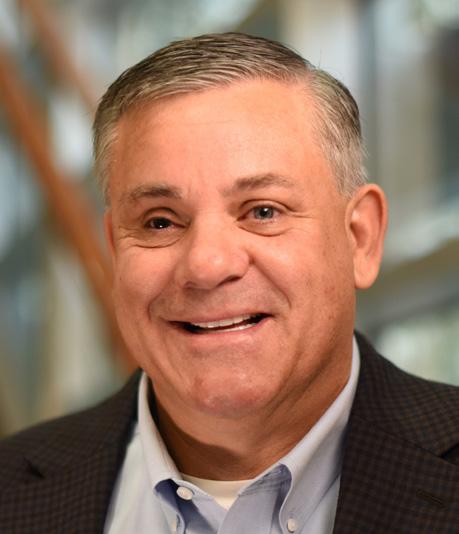



development fair in Springdale. That’s been a big thing.”
If finding the right people has proven to be more of a challenge, it is because the demands of the job bear little resemblance to what the norm was even a decade ago.
“Recent technological advancements have significantly enhanced our efficiency and precision,” said Rob Brosius, president of Bass Commercial Concrete. “In the field, laser screeds ensure accurate flatness and levelness for large concrete pours, while GPS and robotic total stations empower our field engineers to achieve superior accuracy in layout and surveying.”
These days, simply “eyeballing it” and breaking out the shovels is not an option.
“Diagnosing a repair on a piece of equipment today begins with a laptop,” Vollmer said. “There is an emerging group of younger potential employees looking for jobs. They grew up in an era where it’s a perfect marriage of where this industry is headed. Those characteristics are a perfect match for the people we’re looking for.”
Vollmer called Hugg & Hall’s employee retention “amazing,” and pointed to a number of employees who have stayed with the company for 30 years or more. There may be a bit of a youth movement due to the emergency of digital technology and artificial intelligence in the industry, but each of Arkansas’ leading companies invest heavily in development and training of current employees, as well.
The best news for prospective employees looking for a career in infrastructure is the industry remains stable and strong. Like with most sectors, businesses had to withstand a dip during the COVID-19 pandemic, but numbers today are returning to their original levels.
“Supply chain issues continue to be challenging,” Parrish said, “but it has gotten better since the pandemic.”
Business has been good enough for Nabholz to absorb Bass Concrete, creating a partnership that will enhance both companies’ customer service efforts, and even with technology growing at a frenetic pace, good oldfashioned customer service is still the name of the game.
“We serve our clients by being a partner who communicates often, anticipates challenges and delivers timely solutions,” Kaufman said. “From preconstruction to closeout, our many client-focused systems ensure we understand and fulfill a client’s project goals, whether it’s with our extensive value analysis efforts or our projectspecific closeout web sites.”
With so many satisfied customers, growth is almost sure to continue. The core values remain the same, and so does the core mission. What has changed is how the job is done, and it is why so many construction companies are welcoming new employees with varied skill sets with open arms. The infrastructure business is not just a great place to work but a great place to grow.
— Chris Kauffman
Kaufman said Nabholz is not about to back away from its core value of “grow our people.”
“Longevity in the construction industry comes from building lasting partnerships and trust,” Kauffman said. “We grow our people by investing in training, promoting from within and providing stable, meaningful work. We have more than 25 different training and development opportunities for employees of all positions, as well as high school students who are interested in a career in trades.”
“We have numerous success stories of hiring because we saw the drive and character of a candidate during the interview process,” Brosius said. “We have watched them go on to be tremendous leaders for our organization. One of the most fulfilling aspects of leading a construction company is creating highpaying career opportunities that don’t require a college degree. Through hard work and dedication, these team members can advance into roles that offer six-figure salaries, building not only concrete construction projects but also rewarding, lifelong careers.”



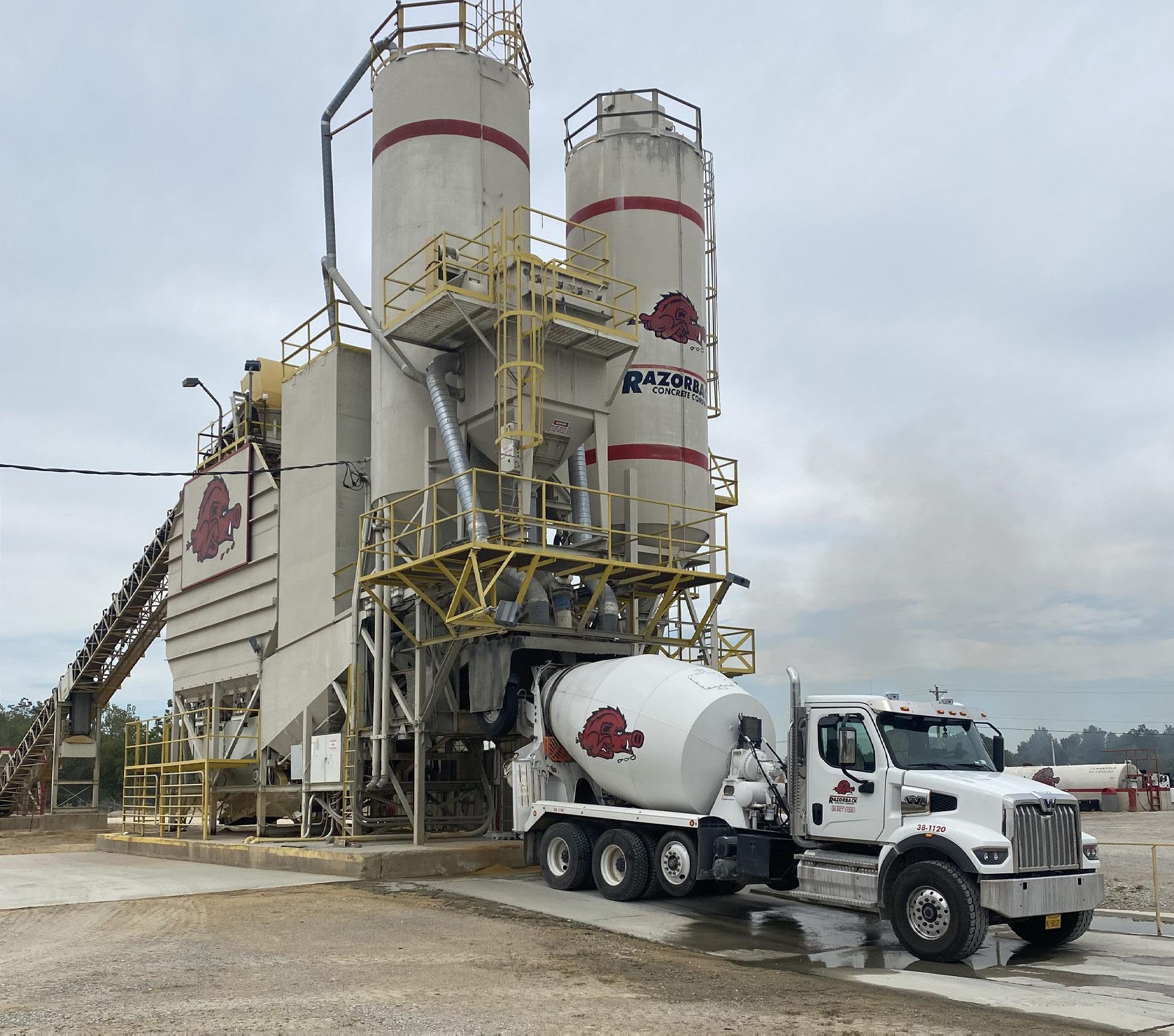


Coming into the 2020 U.S. elections, one of the main talking points for candidates was the state of the nation’s infrastructure and the many issues facing Americans as they traveled or shipped by land, sea or air.
Headlining the debate was the condition of the country’s bridges, something the Biden administration sought to rectify through its 2021 Infrastructure Investment and Jobs Act, which provided $550 billion in new infrastructure investments.
Five years after the COVID-19 pandemic and four years after the money was appropriated, little has changed overall, despite the billions in spending to shore up infrastructure. The Associated Press reported in March that a onceevery-four-years report card on the nation’s transportation infrastructure rated a “C”, only
Billions have been spent, yet the problem remains
By Dwain Hebda

slightly better than before the half-trillion investment, which is set to expire next year.
The report, issued by the American Society of Civil Engineers, examined everything from roads and dams to drinking water and railroads and came away with a familiar warning: Federal funding must be sustained or increased to avoid further deterioration and escalating costs.
As uninspiring as a “C” grade sounds, it is actually middle of the pack among the 14 infrastructure categories measured on the report card. Ports rated highest with a “B” grade, followed by rail with a “B-.” Broadband received a “C+,” a half-step above both bridges and hazardous waste infrastructure. Stormwater and mass transit each scored a “D” grade, the lowest of all the categories assessed.
Among the projects that have been funded are some that hit close to home. The Interstate 55 bridge between Memphis and West Memphis is just one bridge among many that received a government grant under the program, $394 million to be exact, awarded in July of last year. However, for every one that got the funds and fixing it needed, there are many more still in line spanning waterways and chasms from coast to coast.
In fact, as recently as this March, National Transportation
Safety Board officials warned that as many as 68 bridges in the U.S. were not only in dire need of repair but were at risk of catastrophic collapse due to never having had a risk assessment assessed by inspectors.
The list includes 13 bridges in New York; eight in Louisiana; seven each in California and Texas; six in Ohio; four each in Massachusetts and Pennsylvania; three each in Delaware and Maryland; two each in Florida, New Jersey and Oregon; and one each in Georgia, Illinois, Michigan, New Hampshire, Rhode Island, Washington and Wisconsin.
The roster includes some of the most iconic and heavily traveled bridges in the nation, including major New York City bridges Verrazzano-Narrows, Brooklyn, George Washington, Manhattan and Williamsburg; the Chicago Skyway; the Mackinac Bridge in Michigan; and the Huey P. Long Bridge near New Orleans.
“We have seen the investments start to pay off, but we still have a lot of work to do out there,” Darren Olson, chair of this year’s ASCE report, told AP. “By investing in our infrastructure, we’re making our economy more efficient, we’re making it stronger, [and] we’re making ourselves globally more competitive.”
Meanwhile, the American Road & Transportation Builders
Association’s new analysis of U.S. Department of Transportation data carried a warning that was even more dire. The association found that greater than 1 in 3 bridges, 222,000 in all, were in need of major repair and worse, more than 76,000 should be completely replaced.
“There are about 12,800 public bridges in the state. About 44 percent of those are in good condition, 50 percent are in fair condition, and about 5 percent are in poor condition.”
As reported by Construction Dive last September, nearly half of the nation’s spans only rated “fair” condition. Among those bridges needing work, 34 percent needed replacing, 23 percent needed rehabilitation or other structural work, 18 percent required widening and rehabilitation, and 2 percent required deck rehabilitation or replacement.
The report went on to estimate it would cost a minimum of $400 billion to fix all the problems. The Infrastructure Investment and Jobs Act appropriations only accounted for $50 million, leaving a yawning gap in funding for addressing the issue.
According to the ARTBA report, some states have made great strides in addressing bridge health. Pennsylvania led the nation in states that have had the most bridges removed from a condition rating of “poor” with 90, followed by Louisiana with 87, Florida with 85, West Virginia with 74 and California with 64 bridges improved from “poor”.
Conversely, New York had the highest number of bridges added to the “poor” roster with 86. Kentucky saw 60 additional spans rated “poor”, South Carolina had 59, Illinois had 45, and Puerto Rico added 38. ARTBA inspects bridges for its rankings report every two years.
Arkansas is not unlike other states when it comes to the need for rehabbing bridges, but the Natural State is, overall, faring better than in other parts of the country, said Mike Burns, executive vice president of transportation, and Chuck Wipf, vice president of bridge at Crafton Tull.
“There are about 12,800 public bridges in the state,” Wipf said. “About 44 percent of those are in good condition, 50 percent are in fair condition, and about 5 percent are in poor condition.”
Despite the recent dollars spent and the pressing need for rehabbing bridges, work has remained at steady levels for the firm, which works on an average of about 12 to 15 bridge projects at any given time. The projects represent a mix of rehabilitating old bridges for modern use and designing new spans as part of larger highway projects. Wipf said once the structures are worked on, new techniques and new materials are making
— Chuck Wipf Crafton Tull

bridges safer than ever.
“There’s always new technologies out there, lots of research programs, lots of things coming,” he said. “Bridge engineers, are generally conservative. We like the tried and true. We don’t want to experiment with bridges. I mean, we’re not going to put something out there just to see if it works or not. There’s got to be a lot of testing and research to back it up before we say, ‘Yeah, let’s try this.’
“That said, we’re not drawing bridges by hand anymore, obviously, and as far as construction technologies are concerned, there are a lot of accelerated bridge construction techniques that reduce the time that a bridge is under construction and impacting the public.”
Wipf and Burns agreed that the present window of operations is the calmest the market has been since COVID-19 and before tariffs. After that, all bets are off.
“Well, with COVID, everything was more expensive. Everybody knows that,” Burns said. “As far as tariffs go, we’re watching it closely.”
Labor continues to be an issue in the engineering field, and competition for top talent is intense. Burns said one way the company attracts younger professionals to the field is through a robust internship program.
“There is big competition for engineers now because there’s a small pool of new engineers coming in, and there’s a lot of engineers retiring. It is challenging to keep them staffed, and there’s generational differences, too, in how things are done now and how they want to work in the future,” he said.
“We really do like our summer internship program because it gives us the ability to work with them while they’re in school. They get to know us, we get to know them, and it has turned into full-time employment status for some of them.”
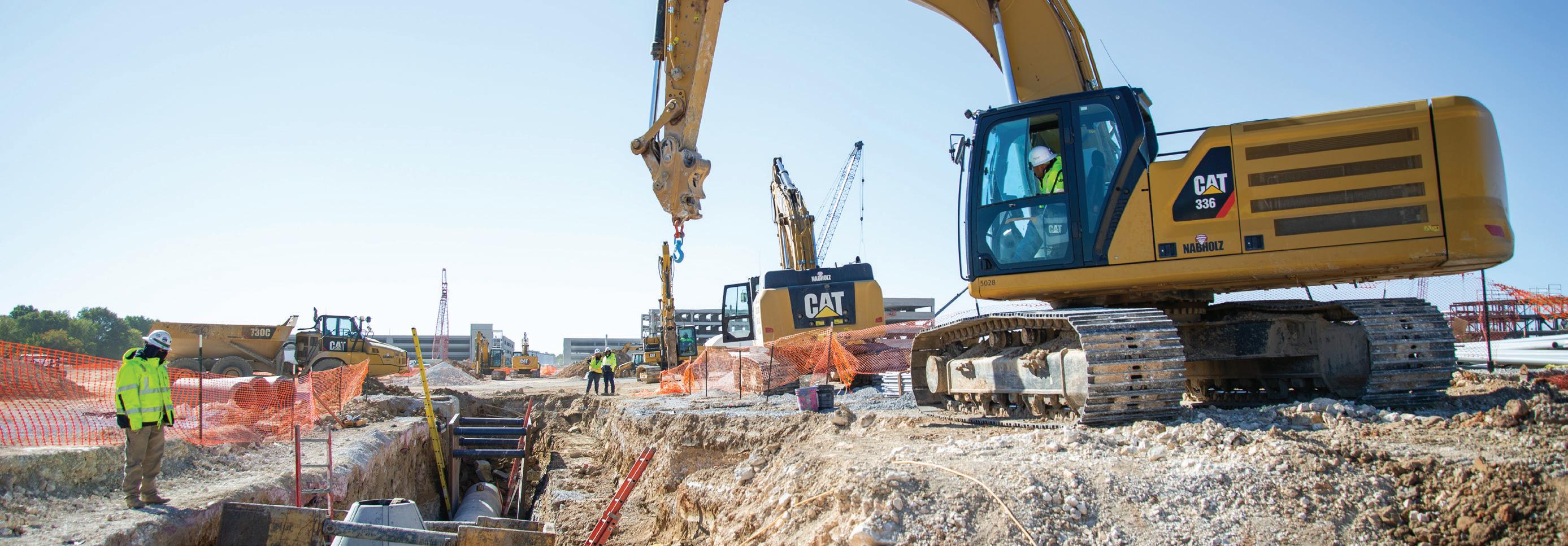
Founded as a small construction company 75 years ago, Nabholz has grown into a strong team of professionals With experience navigating the complexities of public-private partnerships, roadwork improvements, restructuring projects, utility installation and more, we help clients maximize every project’s potential.
From complex structural concrete to industrial grade slabs to sidewalk pours, Bass Concrete performs an array of turnkey concrete solutions on projects across Arkansas.
We have worked on cornerstone community projects such as the Arkansas Arts Center, UAMS Department of Radiology, and Conway High School, laying down high quality foundations to support generations to come.

By Alex Hardgrave
Those dreaded orange barrels have come to be the bane of a commuter’s morning drive, but they are also a sign of progress. As infrastructure ages and the population grows, the demand for efficient and safe road systems has never been greater.
In Arkansas, construction firms are leveraging technology and strategic planning to deliver major projects.
Weaver-Bailey Contractors, an Arkansas-based construction company founded in 1967, has seen a lot of changes in the field throughout that time.
Today, the company is leading several major projects, including Interstate 57 through Jacksonville. It is a $150 million project and one of the last projects being funded from a bond issued 10 years ago, company president Don Weaver said.

The project was about 60 percent complete as of April, which Weaver said is about a year ahead of schedule.
“That’s good news for everybody,” he said.
The company is also handling a $120 million expansion along 4 miles of U.S. 67 and a new taxiway at Bill and Hillary Clinton National Airport in Little Rock.
Weaver-Bailey is working on more projects than ever before.
“We had a record-volume year last year, and we’ll probably exceed that this year,” Weaver said. “There are more projects coming.”
Another Arkansas-based company, Garrett Excavating, is also working on multiple projects across the state. One of its largest current efforts is the $130 million Northwest Arkansas National Airport connector via the Arkansas 612 bypass. Garrett’s part of the project is valued at $28 million, and the whole project is about $130 million. Its crews are contracted to do all the asphalt work, the base rock and two-thirds of the earthwork, said Dalton Nokes, Garrett’s vice president for northwest field operations.
For that project, the team has moved about 800,000 yards of dirt and 120,000 tons of gravel and will use 60,000 tons





of asphalt. Nokes said the company estimates a 2027 summer completion.
In a shift from past projects, the Arkansas Department of Transportation completed its first “design-build” project late last year with the completion of the Interstate 30 crossing.
“We knew it was going to be a pretty daunting task,” said Keli Wylie, assistant chief engineer for program delivery.
Using the design-build model meant ARDOT could get started while only having the plans around 30 percent completed as opposed to design-bid-build, in which the plans have to be fully completed before companies bid for the project.
It also meant the contractors ARDOT was working with became a part of the project early and were able to advise the process.
I-30 carries about 120,000 vehicles in and out of the city every day, so ARDOT knew minimizing disruptions to traffic during the project would be vital, Wylie said.

The public input and planning for the project began back in 2014, and Wylie said ARDOT had seven public meetings
throughout this project to make sure the public was being listened to and involved.
“We truly listened to local stakeholders,” Wylie said. “We listened to the public and revised the project to be minimum impact and also maximum access to downtown.”
She said there was some innovative new technology used on the project, which included an autonomous robot programmed to tie steel rebar on the bridge.
The use of new technology to aid the road-building process is also being embraced at Weaver-Baily and Garrett Excavating.
Weaver-Bailey has been utilizing 3D modeling on equipment, which can be programmed to do most of the work while the operator drives the machine.
Weaver also said the planning and administration work has all gone paperless as paper blueprints are replaced with iPad-based plans and real-time data tracking.
Nokes said his company now also implements technology such as drones to aid with surveying.
“For a long time, construction people were kind of adverse to technology,” Nokes said. “When it first started to come out, it wasn’t very reliable. Now technology has gotten so good that I would say 95 percent of the time, we can rely on the technology.”
Nowadays, many new machines come

“We’ve been able to take on a lot more work, and our company has grown substantially over the past six or seven years.”
— Dalton Nokes vice president for northwest field operations at Garrett Excavating
equipped with ways to correct user errors built in. That means people with less experience can still successfully use these machines.
Technology has been allowing roadbuilders to get projects done more efficiently, meaning they have been able to take on more.
“We’ve been able to take on a lot more work, and our company has grown substantially over the past six or seven years,” Nokes said.
However, it can be a bumpy ride for companies that build roads in the state.
There are fewer people going into trades work, meaning the companies are looking at an impending employee shortage. The number of people retiring from trades way exceeds the number of people coming into those jobs.
He said that is because there was such a focus on having students go to college rather than into a trade, and he hopes that that stigma will dissipate.
“[Trade jobs| are a great way to make a living and a great way to provide for your family and a great way to live a fulfilling
life,” he said.
Weaver said civil engineers are in short supply, as well, but at Weaver-Bailey, there are internships programs to try to recruit talent to the company before the student even graduates from college.
Additionally, economic uncertainty, funding cuts and tariffs have caused some companies to have to wait to see how that will affect them and their projects.
Nokes said that some clients have decided to expedite projects before material costs rise, while other clients are shelving projects for now to see what the future brings.
Weaver noted that 3,200 projects had been put on hold due to grant cuts, but they are in the review process now.
Currently, about 10 projects are held up in Arkansas, he said.
“Hopefully, all of those will pass the new administration’s new guidelines,” he added.
Overall, Arkansas brings with it a lot of opportunities for roadbuilders throughout the state.
Wylie said it is important for ARDOT
to take a holistic approach when it comes to what projects to do. She said the department accounts for high-traffic areas but also has to make sure no corners of the state have roads that get neglected.
There are more than 16,000 miles of state highway and 7,300 bridges for which ARDOT is responsible.
“We do the best we can do to maintain what we have,” she said.
Nokes noted that companies have success if they can do a lot of things, since Arkansas has so many different industries housed within it.
There are more than
16,000
miles of state highway and 7,300 bridges for which ARDOT is responsible.
“Arkansas is such a dynamic state. Between agriculture, the industrial and then with northwest Arkansas, all the commercial growth, we’ve had to adapt to all that,” he said.
Still, the company is happy to be building roads in the Natural State.
“We take a lot of pride in being an Arkansas-based company,” he said.




Arkansas’ energy companies explore all avenues for consumers, future employees
By Doug Crise
Being an energy and utilities provider is not for the faint hearted.
To start with, many power grids operate on aging infrastructure, a problem that brings with it heavy costs in funds, materials and time. That aging, in turn, makes power grids more susceptible to power outages, especially when severe weather strikes. Then there is America’s unquenchable appetite for technology, which creates a higher demand for electricity and often results in unwelcome price hikes.
It is no surprise that Laura Landreaux, president and CEO at Entergy Arkansas, works with a full plate on a daily basis. When she is not figuring out how to meet ever-growing demand, she is working with policymakers at the state and local levels to ensure customers have access to affordable utilities.
It is a never-ending list, and it rarely comes with a “thank you.”
“One of the biggest challenges utility companies are facing is power demand increasing at a rate substantially higher than it has in decades,” Landreaux said. “Arkansas, like many other states, is experiencing major growth among multiple existing industries and is currently attracting the interest of several largescale economic development projects that would bring new jobs and substantial investment in all areas of the state.”
Everyone likes to hear about economic growth and development, but not everybody understands what comes with it. For every new company that arrives in Arkansas come commercial facilities that need dependable electrical power. For every part of the state with a growing population come new homes and new developments that expect energy at the flick of a switch.
Not everything grows at the same time, however. Todd Jacobs, executive vice president and chief operating officer at Summit Utilities, is one of those people tasked with making it all fit. Rarely is it easy.
“Utility companies like Summit are facing the pressing challenge of modernizing aging infrastructure to ensure continuing safety and reliability,” Jacobs
“Today’s need for continuous connectivity and highly reliable electricity has made electric service essential to how we live and work.”
— Laura Landreaux president and CEO, Entergy Arkansas
said. “Much of the existing pipeline network was constructed years ago and is now reaching the end of its intended service life.”
Juggling all those factors and readily answering to consumer demand is difficult even under the most predictable of conditions, but ask any Arkansan, and they will probably say conditions are hardly predictable.
“Another challenge the industry is facing is the increased risk of severe weather,” Landreaux said. “Today’s need for continuous connectivity and highly reliable electricity has made electric service essential to how we live and work.”
While most people understand there is little that can be done about the weather, that does not mean everyone can afford to sit patiently when storms knock out their power. That is why a good portion of Entergy Arkansas’ efforts involve making an aging infrastructure more weather tolerant.
“Our existing customers need this investment to manage their lives and businesses every day, even in the face of storms,” Landreaux said. “Meanwhile, new customers need assurances that the grid can meet their expectations before they invest in the region.”
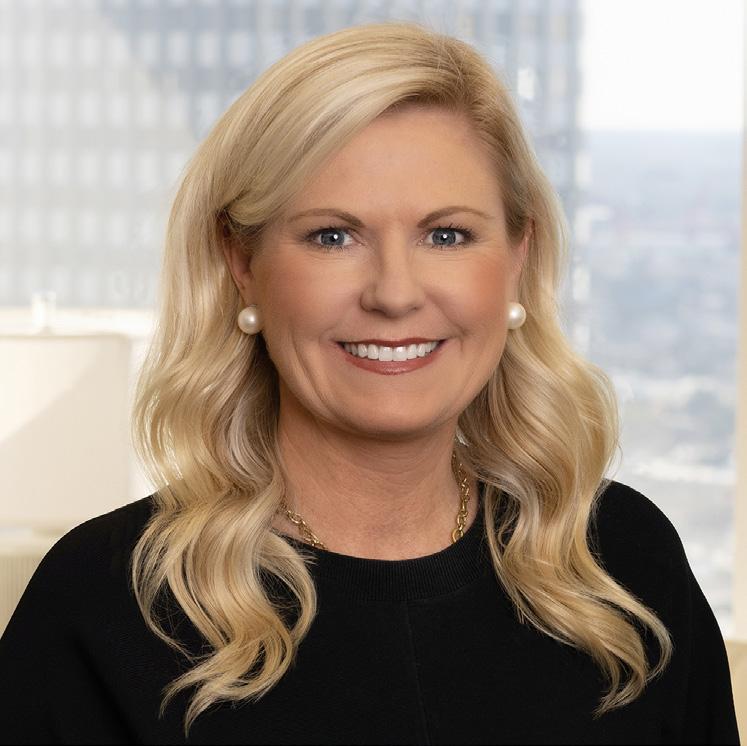
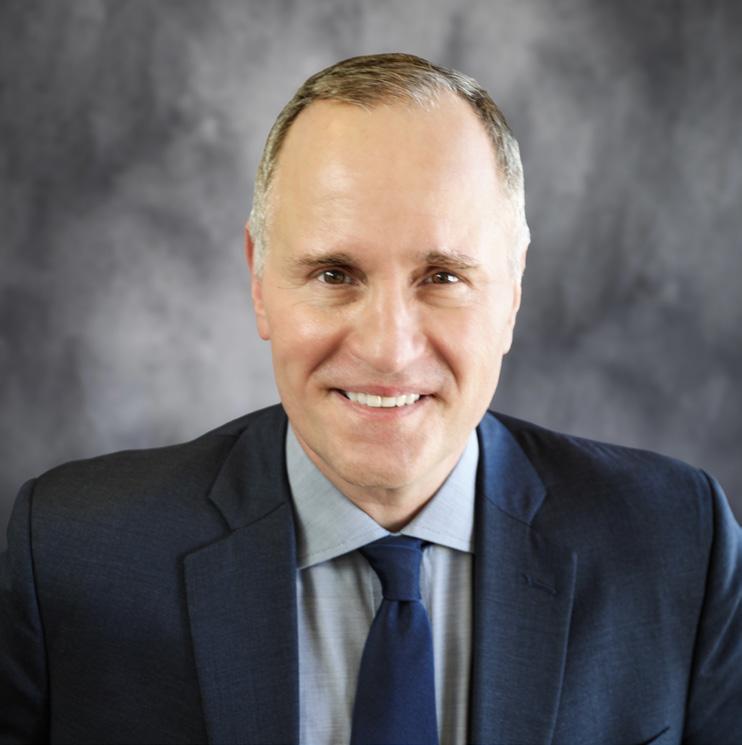
executive vice president and chief operating officer,


Along with lineman training, Entergy Arkansas offers tracks in cybersecurity, engineering and even radiation safety.
Arkansas’ utility companies are opening their wallets to meet the challenge.
“Summit has invested more than $300 million into our system since acquiring operations in 2022,” Jacobs said, “These investments are focused on replacing aging pipelines, enhancing system safety and strengthening reliability for more than 400,000 customers across Arkansas. This work is critical to meeting today’s needs while preparing our infrastructure for the future.”
It will take more than money to create refurbished, sturdier infrastructure. Though it may not seem that way, providing energy utilities is a people business. When most consumers think about who staffs utilities, they think about linemen who work during power outages or customer service representatives who handle billing questions.
Those positions are vital, but a whole lot more goes into creating and maintaining a reliable energy system for customers. That is why utility companies have started making a public push to attract employees at all levels and all areas of expertise.
Entergy Arkansas, for example, has made its presence known in the state’s high schools and two-year colleges. Part of the pitch, Landreaux said, is educating students on the wide variety of jobs available with utility companies. Along with lineman training, Entergy Arkansas offers tracks in cybersecurity, engineering and even radiation safety at Russellville’s Nuclear One facility.
“We are actively engaged in recruitment, training and planning across numerous areas of workforce development for our company, for our customers and for the communities we serve,” Landreaux said, noting Entergy’s support of the Academies of Central Arkansas and partnerships with area chambers and local high schools such as Joe T. Robinson High School in Little Rock and Little Rock West High School of Innovation. “Our engagements with the schools give students from grades nine through 12 early exposure to a wide range of careers in the energy industry.”
Some of those jobs involve making appearances at the state capitol. Part of the challenge facing energy providers
these days is working to promote legislation that will create growth in the utility sector. The state legislature recently passed Act 373, better known as the Generating Arkansas Jobs Act, to help spark utility infrastructure upgrades such as new generation facilities, as well as updates to both electric and natural gas resources.
“As energy demand continues to increase, Arkansas is actively enhancing its utility infrastructure,” Jacobs said. “Act 373 enables strategic investments in both natural gas and electric systems, ensuring the state can reliably meet the future energy needs and support economic development.”
What does that mean for the regular consumer? Simply put, utility companies will be able to beef up their offerings without kicking the cost down to their customers.
What that boils down to is that not only will existing customers benefit from more reliable power, but companies looking to move to Arkansas will have the promise of a refurbished, updated power grid.
Part of those updates will include the type of power businesses and residents use. Just as it is with so many industries, sustainability has become a mandate, offering a peek into a future with cleaner, more reliable energy sources.
“As energy demand continues to increase, Arkansas is actively enhancing its utility infrastructure.”
“The legislation supports the effort of the state’s utilities, including Entergy Arkansas, to meet their customers’ future power needs and do it without unnecessary costs added to customer bills,” Landreaux said. “Act 373 puts Arkansas at a competitive advantage for attracting economic development in this state by ensuring both speed to market and low-cost generation for companies seeking to locate in our state over the next several years.”
— Todd Jacobs executive vice president and chief operating officer, Summit Utilities
“Over the past decade, natural gas has become a cornerstone of America’s energy strategy by delivering safe and reliable energy while supporting energy independence and industrial growth,” Jacobs said. “Renewable natural gas is expanding the role of natural gas in an innovative energy future, capturing methane from farms and landfills to create homegrown natural gas. As the U.S. continues on its path to energy dominance, natural gas will remain a strategic asset, supporting reliability, affordability and innovation throughout the energy system.”
Jacobs calls Act 373 a catalyst “for long-term, forward-looking upgrades that enhance system capacity, reliability and resilience.”

For Arkansans, the energy of the future is here today. New facilities are sprouting up and multiple energy sources are being developed. What was once a onetrick industry has evolved into myriad options for all consumers looking to meet their ever-growing energy needs.
“Entergy Arkansas not only seeks higher overall power capacity but also an ‘all-of-the-above’ generation strategy that maintains our focus on using a variety of fuel sources to ensure customers are not overly dependent on the potential cost fluctuations of just one resource,” Landreaux said. “In addition, the plan calls for additional transmission lines to be built in the state to help ensure power can be routed to high-growth areas to improve reliability.”



We make a positive difference in the lives of our people, customers and community by

Lower rates
Reliable service
Enabling progress across Arkansas
Entergy is committed to the future of Arkansas, and that means investing in cleaner, stronger, smarter infrastructure today. We are accelerating investments in new power generation and routing energy to meet demand throughout Arkansas. We’re maintaining a diverse energy mix and keeping rates below the national average, all while making power more accessible, resilient and sustainable for everyone. To prepare for new industries and economic growth, we’re investing in communities across the state. We’re building something bigger, better and brighter for all Arkansans for generations to come.
Learn more at www.entergyarkansas.com
Family is big in Arkansas, and it stands to reason that family businesses are, as well.
Generational businesses are the backbone of business in the Natural State. In Arkansas, family business can mean many things — from global corporations to small-town institutions. The world’s largest retailer and protein producer are each Arkansas family operations, after all, as are the largest off-Wall Street investment firm and one of the country’s great longstanding department stores.
Indeed, Walmart, Tyson Foods, Stephens and Dillard’s have succeeded over generations of family leadership, as have iconic hometown stalwarts such as Cogswell Mo-
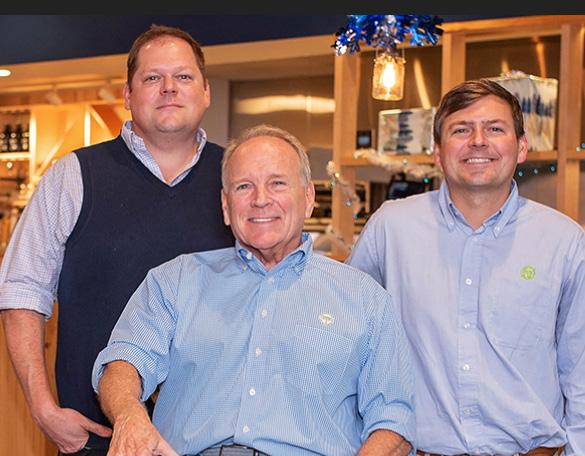
To hear a ring of pride in Jim Keet’s voice, just get him started talking about his family. The longtime restauranteur and businessman, whose career in hospitality goes back decades, has produced or partnered with some of Arkansas’s bestknown and most-loved establishments, including Taziki’s Mediterranean Cafe, Petit & Keet, Cypress Social, and, more recently, Waldo’s Chicken & Beer, and Count Porkula BBQ, to name a few.
As patron of JTJ Restaurants, Keet regards each of those ventures with pride all the more for the participation of his two sons, Jake and Tommy, who have helped their father take the family company from
tors, Bruno’s Little Italy and Underwoods Fine Jewelers. Other family businesses have grown national reputations for their products, as well, including Xpress Boats, Lexicon and Stallion Transportation.
Generations of Arkansas families have shown the world that the Natural State is a hotbed of entrepreneurship and innovation. While Arkansas Money & Politics does not claim to have a comprehensive list of every family operation in Arkansas, we can nevertheless shine a spotlight on some of the state’s prominent family-run stores, companies and firms.
Arkansas Money & Politics is proud to once again recognize generational businesses in Arkansas.
ONE OF THE LEADING FAMILIES IN HOSPITALITY IS THE UNBEATABLE TEAM AT JTJ RESTAURANTS
a profitable venture to nothing short of a restaurant empire, making the Keets the first family of Arkansas dining.
“I didn’t have any misgivings about their abilities and their desire to be very good at whatever they did, and that’s the first building block of success,” Jim said of his sons, who joined the family business without any restaurant experience. “If you don’t have that desire to be the best, then it’s not just the restaurant business you shouldn’t be in — there’s no business you should be in.
“In that respect, we have been very fortunate. I’ve always had a great relationship with all of my kids, and as brothers, they have always had a very close relationship, just as they have with the rest of the family, so I knew from day one that we would be successful just because of who they are.”
The first project the trio took on was to bring Taziki’s to Arkansas, and it was there that the boys validated their father’s faith in them, jumping in to learn the business from the ground up and the cash register out.
“Both of them dove in headfirst and learned by trial and error, learned from both successes and failures,” Jim said. “When we first started Taziki’s, the volume was pretty low because it was a new concept and people didn’t really understand the benefits of Mediterranean food as much as they do now. They were working 60, 70, 80, however many hours a week it took to be successful and to build the culture that we wanted to have not only in our first restaurant but every restaurant that we would ever do after that. I guess you could say to a certain extent they learned because they had to.”
“It’s truly a combination of all of our talents and skills that have made it successful.”
— Jim Keet
The success of Taziki’s led to other exciting ventures, from fast service, such as Waldo’s, to fine dining, such as the incomparable Petit & Keet in Little Rock, to build-out and redevelopment projects such as Cypress Social in North Little Rock and the reimagining of Little Rock’s Breckenridge Village. Jim said even as projects got more ambitious, the family dynamic of supporting one another and playing to each other’s strengths has not changed.
“It’s truly a combination of all of our talents and skills that have made it successful,” he said.
In time, Tommy and Jake were joined
by other family members, including sibling Cassie and Tommy’s wife, Susannah, who pitch in at the office, as well as Jake’s wife, Stephanie, who heads Keet Advertising. The third generation is not very far off either.
“Each of my kids were required to start working when they were 13, and that has been the case with my grandkids, as well,” Jim said. “Hawkins, my oldest grandson, who is now 15, has been working at the Taziki’s on Cantrell [Road in Little Rock], while Holden, who is 13, is going to be starting pretty soon at one of the restaurants. We’re not sure which yet.
“There is zero pressure from any of
It is often said that at a family-owned business, all the employees become like family. For Matt St. Clair, president of Precision Print Solutions in Little Rock, that means instilling in his staff the values that have kept the business growing for more than 30 years.
“Our customer service is top notch,” he said. “I think that’s something that kind of separates us from other companies is we invest time and interest, and we really care what our customers’ needs are. I think we try to go above and beyond what someone would expect from us or expect from customer service.”
His father, Charles St. Clair, CEO, founded Precision Print Solutions in 1990 after working in the printing business for a different company starting in 1974. Originally called Information Documents, the company rebranded in 2006, when it moved into a larger facility.
Since then, the business has had to renovate four times to expand its production space, a testament to the success of the 23-person team, which routinely handles jobs for Fortune 500 companies.
Matt knows the operation inside and
us that they end up in the food business, but it will give them a taste of what it’s like to take care of guests, to care about quality and to do a lot of things that are good life lessons regardless of what business they go into.”
At that, Jim grew silent, thinking about the family legacy that continues to be built every day.
“We’re just a pretty darn good business team, and more importantly — most importantly — an indispensable part of this is that we really love each other and we love being around each other,” he said. “It’s the biggest privilege of my life to be able to work with these guys.”

out, having grown up in the company.
“I would work here every summer when I wasn’t in school,” he said. “I’ve worked on the warehouse floor, picking orders and driving forklifts. I’ve worked on the production floor, burning printing plates and learning how to run equipment and helping out, so I know how to do a little bit of everything.”
There was never any question of him joining the family business, he said; he always loved the work. After earning a degree in small business management at the University of Arkansas in Fayetteville, he returned to the company to work in sales before taking on a managerial role as president.
“He has a flair for pretty much everything that goes on here, so I’m hoping
“I know that the business is in good hands with Matt taking care of things.”
— Charles St. Clair
and knowing that he’s going to carry on after I leave,” Charles said. “I’m kind of like part time now, I guess. I come in in the morning, and I’m usually gone by 1 o’clock in the afternoon on a late day, and I know that the business is in good hands with Matt taking care of things.”
He added that working with family is an advantage because he has “ultimate trust” in his son, and he is proud of how Matt runs the business. Matt said he is
grateful his father never gave him any special treatment as an employee, preferring to let Matt dive into the work and learn from his mistakes. The hands-on experience he has accumulated over the years is something no one could learn in school, he said.
“Working from the ground up, you know, learning every aspect about a business is probably something not everyone would be able to experience,” he added.
Matt’s 9-year-old twin daughters, Charlotte and Harper, are frequent visitors at the business, where they love getting to color on the “big paper,” Matt said. He added that he hopes one or both of them will take the reins at the company when they get older. It is a sentiment shared by Charles.
“That would be great,” he said. “I try to spoil them as much as I can. They’re only 9 years old, so I don’t know where I’ll be when they graduate from college.”
Running a family business is a lot of work, he said, and he advised others interested in starting their own companies to find their niche and be oriented toward customers.
“Small businesses are the lifeblood of the economy,” he said. “There are a lot of rewards to owning a small business.”
He added that he hopes Matt and his children continue the business for years to come, saying, “Matt’s got a long time ahead of him here.” Matt said he hopes to continue growing in a responsible way while maintaining the company culture and potentially branching into other parts of the state.
“I think Arkansas is a big example of people buy from people,” he said. “It doesn’t matter if you’re a huge company or a small company — how you treat your customers goes a long way in Arkansas.”
Ensuring continuity can be a challenge for small businesses, where parents often sell or close shop as children leave for greener pastures. That is particularly true for office supply companies, many of which shutter before seeing the second generation, said Josh Pettus, president of Pettus Workplace Solutions in Little Rock.
When his parents, Lynn and Amanda Pettus, founded the business in 1989, there were 26 independent office product dealers in Little Rock, he said. Now he is hard-pressed to think of another shop like Pettus that is still around.
“We are selling commodity products, so it’s not always appealing, necessarily, to the younger generation,” he said, “but it always was to me, so I was happy to come back and carry on the Pettus name.”
His father worked on the manufacturing side of the industry in Baton Rouge, Louisiana, and came home to Little Rock to be closer to family after Josh was born. The couple opened Pettus when Josh was about 6 months old.
Josh remembers his parents writing invoices by hand at the dining table during the evenings in the early 1990s. They worked hard, he said, but they always made time to attend his baseball games and other activities.
He started working at the business during the summer when he was 14 years old.
“I started working in the warehouse and installing furniture and doing whatever, and I remember when I turned 16, I was super-excited because I could drive a delivery van and go make deliveries,” he said. “That was a fun summer.”
When he went off to college at the University of Arkansas in Fayetteville, however, he did not plan to return to the family business. A finance major, he originally planned to pursue investment banking. Then, after talking to his parents while he was home for the holidays his senior year, he changed his mind.
“Ultimately, my parents, they obviously had to work very hard, and we still do today, but they provided a great

“If a client needs an answer to a question, they can literally call me or shoot me an email, and I can make a decision in one minute and get that problem solved.”
— Josh Pettus
life for our family, and I’m married and have kids, and I wanted to do the same, you know, rather than just selling to a national corporation,” he said. “I wanted to keep the business local and help out our employees and the community.”
He graduated on a Saturday, packed up his apartment in Fayetteville and came home that Sunday, and came to work at Pettus that Monday. He started
in business development as a sales representative and transitioned into his current leadership role in about 2020. Meanwhile, his father moved to part time and now spends several days a week golfing.
“Honestly, we work well together,” Josh said. “I don’t know that every family can say that, but it was a very easy transition. I had really started to take on some of the responsibilities, I guess, before that anyway, so it was an easy transition for us.”
Josh also has two cousins who work at Pettus — general manager Eric Pettus and accountant Justin Cupit — and his wife, Audra Pettus, is director of design. Josh said family ownership helps set Pettus apart from big-box competitors such as Staples, Office Depot and Amazon.
“If a client needs an answer to a question, they can literally call me or shoot me
Ryan Flynn may be CEO of Network Services Group in North Little Rock today, but the son of co-founder Gary Flynn started in a decidedly unglamorous role — the janitor.
Gary incorporated the company with business partner Richard Beard in 1989. The company began by helping clients save money on long-distance phone service at a time when consumers had fewer options for carriers and then branched into selling, installing and servicing business phone systems.
Ryan officially joined the company straight out of high school, moving from cleaning offices to installing systems. He became a salesperson soon after. Gary said he wanted his son to go to college instead of joining the family business, but Ryan was ready to work. Gary called him “the best salesperson I ever met.”
“I begged him to go to college, and he
an email, and I can make a decision in one minute and get that problem solved,” he said, “versus our competitors, you may not get an answer at all, so it’s a big advantage out there in the marketplace for sure.”
Josh and Audra have three daughters: Paisley, 14, Lennon, 7, and Rowen, 3. While he hopes at least one of them will take an interest in the family business, he said he understands if they choose to go a different direction.
“My parents never pressured me into it, and I won’t do that to them either, but it would be great if one of them or all of them wanted to join the business when they get a little older,” he said. “They’re having fun being teenagers and elementary kids right now, so they haven’t thought much about the office furniture and office products industry yet, but maybe one day.”

wanted to go to work. He was a very good student, and I thought he’d do real well in college,” Gary said. “His first year of work, he did very well, but I tried to discourage him from going into sales. He went into sales about eight months after he started working with us, and he immediately won the Southwestern Bell sales contest with about 200 people he competed with.”
That contest won Ryan, then 19, a sports car and the company a trip to Hawaii. Since then, he has gradually assumed more responsibility at the business. He credited working his way up as a major reason for his success.
“One of the neat things that I got to do is I got to see how the phone systems and, even more so later on, the computer networks and things worked before I was trying to go to people and offer them the same solutions and stuff, so I got to see how it’s done and kind of the pitfalls and challenges that our installers have and how it integrated to how the customers
used it,” he said. “Being able to see it, literally, from the bottom all the way to the top has been very beneficial to me. It’s been able to allow me, even at a young age, to have conversations with a better understanding with our employees and with clients.”
With all the technological advancements made over the past 30 years, Network Services Group has had to evolve rapidly. Most recently, the company has focused on cybersecurity, and it is beginning to explore the potential for artificial intelligence to enhance work at the company and for its clients.
“Us being able to evolve has allowed us to continue to be relevant and even grow as things changed over the years, and that’s probably been our biggest strength,” Ryan said. “It’s a vision that my father had is he’s always been really good at being able to say, ‘Hey, there’s a new
“Being a family business is not all about making money; it’s about pride.”
— Gary Flynn
opportunity on the horizon,’ and take advantage of that.”
Ryan’s aunt, cousin and sister all work at the company, as well, and he is looking forward to bringing the next generation into the fold with his oldest son, Cole Flynn, who is currently studying at the University of Arkansas in Fayetteville. Ryan said that of his four children, Cole has expressed the most interest in working at the family business, and Ryan is trying to instill in Cole the same work ethic he learned growing up in the company.
“There’s a lot of knowledge within the dinner tables and things like that





when you work with family and you’ve been in business for a long time, so you’re able to pick up on things in a different way,” Ryan added. “You don’t have to have a specific training moment or take a training class or something like that. It’s sort of a common conversation at times, so I think that helps with your ability to understand what the company’s doing and really understand at a young and early age.”
Now retired, Gary said Ryan has grown the company by leaps and bounds since he left it and has proven himself to be an outstanding manager, as well as an amazing salesperson.
“Being a family business is not all about making money; it’s about pride,” Gary added. “It’s about the idea that you’re doing the job properly and doing a good job. That’s one of the things I like about it being a family business.”




ACE Glass
Windows/Glass, Little Rock
Akel’s Carpet One Floor & Home Carpet/Flooring, Little Rock
Albright Ideas
Advertising, Little Rock
Alford’s Carpet One Floor & Home Carpet/Flooring, Fort Smith
Anthony Timberlands Timber, Bearden
Arkansas Graphics Printing, Little Rock

Arkansas Land Co.
Land Brokerage, North Little Rock
Arkansas Land Co. is a trusted real estate firm specializing in the acquisition, marketing and sale of rural, recreational, agricultural and timberland properties throughout the state of Arkansas. With a deep understanding of the local market and decades of combined experience, the Arkansas Land Co. team is dedicated to helping landowners, investors, hunters and outdoor enthusiasts find the right tract of land to meet their goals. Whether one is looking to buy their first hunting property, sell farmland or invest in timberland, Arkansas Land Co. offers expert guidance, market insights and personalized service every step of the way. The company prides itself on integrity, transparency and a passion for the Arkansas outdoors. Discover the value of working with professionals who know the land — because land is more than just property, it is a legacy.
Arkansas Mailing Services
Mailing Services, North Little Rock
and Fayetteville, the firm’s practice areas include bankruptcy, estate planning, family law, probate, personal injury, Department of Human Services, business formation and real estate. As an attorney, Cash Adams followed in the footsteps of her father, Clarence W. Cash, who is now retired after practicing law in Little Rock for 50 years.
Arrow Plumbing
Plumbing, North Little Rock
Bank of England Banking, England
Bell & Co.
Accounting Firm, North Little Rock
Blackmon Auctions
Auctioneer, Little Rock
Blakeman’s Fine Jewelry
Jewelry, Rogers

Bray Sheet Metal
Sheet Metal, Little Rock
William Bray started his namesake business in 1924 behind his Little Rock home. As the business grew, he purchased the property at 1508 Scott St., where the business remains today. His sons, Carson and Warren Bray, continued to expand the company, turning the backyard sheet metal shop into a largescale operation. Now run by third-generation owner Mary Bray Kelley and her son Woody Simmons, Bray Sheet Metal continues to serve the paper mill and roofing industries, in addition to manufacturing chairs, tables, chimney caps, flags, countertops and more.
Brown Boys Roofing Roofing, Bentonville
Bruno’s Little Italy Restaurant, Little Rock
C.C. Jones Produce Trucking Trucking, North Little Rock
CBM Construction Construction, Little Rock
ARLaw Partners
Lawyers, Little Rock
ARlaw Partners was founded in 2020 by attorneys Vanessa Cash Adams, Charlie Cunningham, Dustin Duke and Katie Freeman. With offices in Little Rock
Capitol Glass Co.
Auto Glass, Little Rock
Established in 1950, Capitol Glass Co. is the oldest locally owned and operated glass company in the Little Rock area, celebrating 75 years in 2025. For more than seven decades, the company has maintained the reputation of quality and safety earned by longtime owner and co-founder Jack Grimes. The company now is owned by Grimes’ son, Glenn, who grew up in the business and started working full time at Capitol Glass in 1972. Jack’s grandson, Aaron, runs the day-today operations.
Chi’s Chinese Cuisine
Restaurant, Little Rock
Clark Machinery Co.
Construction Services, Fort Smith
Cogswell Motors
Auto Dealership, Russellville
Cooper Family Dentistry
Dental, Jacksonville
Coulson Oil Co.
Petroleum Distribution, North Little Rock
Coy’s Southern Eats
Restaurant, Bryant
Cozy Caverns Storm Shelters
Storm Shelters, Austin
Crews & Associates
Banking, Little Rock
Crow Burlingame Co.
Auto Parts, Little Rock
Curry’s Termite, Pest & Animal Control
Pest Control, Little Rock
CustomXM
Printing/Promotional, North Little Rock
DASH Heating & Cooling
HVAC, Little Rock
DataPath
Employee Benefits/Tech, Little Rock
David’s Burgers Restaurant, Conway
Diamond Center
Jewelry, Fayetteville
Dillard’s Clothing, Little Rock
DJ’s Auto Repair
Auto Repair, North Little Rock
Doe’s Eat Place Restaurant, Little Rock
Don’s Supply
Restaurant Supply, Little Rock
Dryden Potteries
Pottery, Hot Springs
Duffield Gravel Co.
Mineral Mining, Russellville
EC Barton & Co.
Home Improvement, Jonesboro
Edwards Food Giant Grocery, Marianna
Feltner’s Whatta-Burger Restaurant, Russellville
Ferstl Valuation Services
Real Estate Appraisal, Little Rock
First Arkansas Bank & Trust Banking, Jacksonville
First Security Bank Banking, Searcy
Five Oaks Duck Lodge Hunting Lodge, Humphrey
Fort Thompson Sporting Goods Sporting Goods, Sherwood
Freyaldenhoven Heating and Cooling
HVAC, Conway
Fuller and Son Hardware & Lumber Hardware, Little Rock
est in excavation. In 1950, Irvin established Garrett Excavating, setting in motion a company founded on traditional values with a commitment to hard work, innovation and delivering quality results on every project.
Now, in 2025, Grant Garrett, Sean O’Keane, and Ricky Lattin have partnered together to ensure Garrett Excavating upholds the very same values that Irvin embedded so long ago. With facilities in Benton and Bentonville, GarrettX stands out from competitors through a steadfast commitment to excellence.
Hard work and the fundamental belief in doing the right thing for clients and coworkers have allowed Garrett to continue to serve as a valuable construction team member. With more than 75 years of site construction experience and thousands of projects under its tool belt, Garrett has the experience and equipment needed to get each project done right.
Gaston’s White River Resort Resort, Lakeview
Generations Bank Banking, Fayetteville
George’s Food Manufacturing, Springdale
Grandeur Fasteners
Manufacturing, Danville
Gwatney Chevrolet Co. Car Dealership, Jacksonville
Harps
Grocery, Springdale
Harrell Bancshares Banking, Camden
Hathaway Group
Real Estate, Little Rock
Hopkins Braces Orthodontics, Beebe
Garrett Excavating
Construction Services, Benton
Garrett Excavating is a third-generation site-development company and one of the largest, most experienced and most technologically advanced site-development companies in the central United States. Garrett provides turn-key solutions ranging from design engineering to clearing, grubbing and earthwork to paving, site lighting and striping.
In 1930, the Garrett brothers used mules and trucks for logging in central Arkansas, sparking Irvin Garrett’s inter-

Hugg & Hall
Equipment Rental, Little Rock
Hugg & Hall Equipment Co. is a leading equipment dealer in Arkansas, Louisiana, Oklahoma, Texas and Missouri. Hugg & Hall specializes in top-quality equipment, comprehensive product support and unparalleled customer service. Since its founding in 1956, the company
has been dedicated to providing costeffective construction, material handling and warehouse solutions tailored to clients’ unique needs. Family owned since 1970, Hugg & Hall has been led by current owners John Hugg and Robert Hall since 1990. Over the last 35 years, Hugg & Hall has been focused on expanding its dealer lines and acquiring great companies in order to better serve customers in its territory.
Hum’s Hardware and Rental
Equipment Rental, North Little Rock
Humphrey Funeral Service
Funeral Home, Russellville
Innerplan
Office Interiors, North Little Rock
Iriana’s Pizza
Restaurant, Little Rock

Restaurants, Little Rock
With more than 50 years of industry experience, Jim Keet has become well known as a respected restaurateur in Arkansas. In 2008, Jim, Tommy and Jake Keet — collectively known as “the Keet boys” — founded JTJ Restaurants and opened their first Taziki’s location in Little Rock. What started as a family venture has since grown into a diverse group of restaurants and partners that now spans several states. Through JTJ Restaurants, the Keet family has introduced a variety of local favorites, including Petit & Keet, Cypress Social, Waldo’s Chicken & Beer, Count Porkula, Big Bad Breakfast, and more. Their commitment to quality and community has earned them a loyal following. Most recently, they have begun working on remodeling the beloved Breckenridge Village in Little Rock, furthering their dedication to revitalizing local spaces.
K Hall & Sons Produce Grocery, Little Rock


After 50 years of practicing law in Little Rock, Clarence is now retired and spends his days teaching painting classes. Many of his works are featured at the Art Group Gallery.
Walking in her dad’s footsteps, Vanessa has been practicing law for 18 years. She co-founded ARlaw. A growing and successful law firm now in its fifth year.
We are an Arkansas law firm with convenient locations in Little Rock and Fayetteville. Our experienced attorneys have been helping Arkansans with their legal needs for 20+ years.
Founded in 1944, Keith Smith Co. is the nation’s largest independent producer of broiler hatching eggs and day-old chicks. With more than 80 years of continuous operation, the company combines deep industry expertise with a strong commitment to innovation and customer service.
Guided by third-generation family leadership, Keith Smith Co. takes pride in delivering dependable service, expert support and consistent quality across every aspect of its business.
Kitchens Pediatric Dentistry Pediatric Dentists, Little Rock
Kittle’s Garage Automobile, North Little Rock
Lamb & Associates Packaging Manufacturing, Maumelle
Leonard’s Hardware Hardware, Russellville
Lewis Ford Sales Car Dealership, Fayetteville
The late Tom Schueck founded what became Lexicon in his Little Rock garage in 1968 with $200 in the bank and a pregnant wife at home. Thanks to his family’s dedication to building America, Lexicon has grown into one of the nation’s leading fabrication and construction companies and has more than 2,000 employees. On March 3, 2020, Schueck passed away at age 78. He was chairman of Lexicon.
Today, under the guidance of CEO Patrick Schueck, the Lexicon family of companies combines a commitment to excellence with cutting-edge robotic technology and an emphasis on safety and superior craftsmanship to complete iconic steel-fabrication, construction, energy, industrial, commercial and public projects. The companies include Lexicon, Prospect Steel, Custom Metals, Steel Fabricators of Monroe, Heritage Links, Universal, Lexicon Energy Services, Lexicon Industrial Constructors, Lexicon Construction Management and Lexicon Industrial Maintenance.
Lift Truck Service Center
Heavy Equipment, Little Rock
Lindsey’s Hospitality House
Restaurant, North Little Rock
Maple Leaf Awning & Canvas
Outdoor, Sherwood
Martinous Oriental Rug Co.
Decor, Little Rock
Mays, Byrd & O’Guinn
Legal, Little Rock
McCauley Services
Pest Control/Electrical, Bryant
McClendon’s Appliance
Appliance Repair, Benton
Mercedes-Benz of Little Rock
Car Dealership, Little Rock
Miller’s Drug Store
Pharmacy, Malvern
Moon Distributors
Distribution, Little Rock
Myers Supply
Janitorial Equipment Supplier, Hot Springs
that has not changed over more than three decades, even as the technology and systems they work with have evolved at a rapid clip.
Ryan Flynn was named president of Network Services Group in 2013, after 15 years with the company. Over the 12 years since, NSG has grown from 11 employees and a single location in North Little Rock to more than 75 employees and three locations in Arkansas.
Oaklawn
Horse Racing/Gaming/Resort, Hot Springs
Parrish Delivery Services
Mail/Courier, Little Rock
Peters Family Living Furniture, Russellville
Petit Jean Meats Food Processor, Morrilton

Pettus Workplace Solutions Office Supplies, Little Rock
Nabholz
Construction, Conway
Nabholz Construction Corp., started in 1949 as a small, family-owned construction company, has grown into a large, multidiscipline, employee- and familyowned firm still focused on one thing — integrity. The Nabholz name has been synonymous with integrity since R.D.
“Bob” Nabholz founded the business 75 years ago, and integrity remains the firm’s guiding principle and the foundation of every project the company touches.
National Custom Hollow Metal
Doors & Frames
Hardware, Little Rock

Network Services Group
Computer Support and Services, North Little Rock
Network Services Group got its start in 1989 as an outgrowth of a telecommunications consulting firm. From the start, NSG has been committed to delivering quality products and service — a focus
Since its founding in 1989 by Lynn and Amanda Pettus, Pettus Workplace Solutions has been driven by a singular vision: to build a family-owned business delivering quality products, outstanding value and unparalleled customer service. Now the largest independent dealer in the region, Pettus remains true to its founding principles, offering a comprehensive range of office essentials — from furniture to cleaning and tech supplies — backed by exceptional local service and competitive pricing. Through strategic manufacturer partnerships, Pettus combines the purchasing power to rival big-box retailers with a dedicated local team that understands each client’s business and is committed to helping the Arkansas business community thrive.
Phelan Orthodontics Orthodontics, Little Rock
Phil Wright Autoplex Auto Dealership, Russellville
Pine Bluff Sand & Gravel Co. Construction Services, White Hall
Poe Travel Travel, Little Rock
Post Winery Winery, Altus
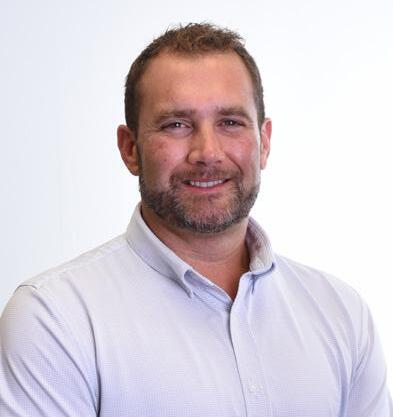









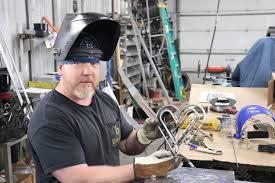

Power Technology
Lasers, Alexander
Precision Print Solutions
Printing and Promotional Items, Little Rock
Conveniently located in central Arkansas, Precision Print Solutions is a leading force in graphic communications and one of the region’s largest privately owned commercial printing companies. With roots stretching back over a century, the company’s legacy is built on innovation, craftsmanship and a deep understanding of how print drives business success.
Precision Print offers a full spectrum of services, from eye-catching point-of-purchase displays and impactful direct-mail marketing to high-quality label printing and custom promotional items that elevate clients’ brands. The company’s nationwide reach ensures businesses across North America benefit from tailored solutions that make lasting impressions.
Precision is more than a print provider — it is a dedicated partner focused on delivering exceptional customer service, fast turnaround times and results that exceed expectations.
R&E Supply
HVACR Supply, Little Rock
Ranalli Farms
Grocery/Farm Equipment/Feed, Springdale
Red River Auto Group
Auto Dealership, Jacksonville
Rich Ferguson & Sons
Construction
Home Builder, Little Rock
Richards Honda-Yamaha
Automotive, Little Rock
Riggs Cat
Heavy Equipment, Little Rock
Ritter Communications
Telecommunications, Jonesboro
Roller Funeral Homes
Funeral Home, Little Rock
Russell Chevrolet Co.
Automotive, North Little Rock
Sanders Supply
Plumbing/HVAC, Hot Springs
S-C Seasoning Co.
Culinary, Harrison Simmons Foods
Manufacturing, Siloam Springs
Family owned and operated since its founding in 1949, Simmons Foods, a processor of poultry, pet and animal food, has grown to become one of the top 15 poultry producers in the nation. Simmons and its affiliates have more than 8,000 employees and serve customers in all 50 states and more than 40 countries.
Founded by M.H. “Bill” Simmons, the company is now led by third-generation CEO Todd Simmons.
Sissy’s Log Cabin
Jewelry, Pine Bluff
Smith Family Funeral Homes
Funeral Home, North Little Rock
Smith Ford Automotive, Conway
Sol Alman Co.
Recycling, Little Rock
Southern Interiors
Flooring/Kitchen & Bath, Sherwood
Sportstop
Sporting Goods/Apparel, Little Rock
Stallion Transportation Group
Transportation, Beebe
Star Bolt
Fasteners, North Little Rock
Stephen Browning Outdoors
Outdoor Media, Hot Springs

Stephens Finance, Little Rock
In January 2025, brothers Miles Stephens and John Stephens were appointed co-chief executive officers, and their sister, Laura Brookshire, was named chair of the executive committee, marking the third generation of family leader-
ship at Stephens. They succeeded their father, Warren A. Stephens, chairman, president and CEO, who led the business for almost 40 years. His father, Jackson T. “Jack” Stephens, served as president from 1956 to 1986. W.R. “Witt” Stephens founded the company in 1933.
T&S Sawmill
Sawmill, Clarendon
Tipton & Hurst Floral, Little Rock
Triple-S Alarm Co. Security, Little Rock
Tyson Foods Food, Springdale
Underwoods Fine Jewelers Jewelry, Fayetteville
Venesian Inn
Restaurant, Springdale
W&W | AFCO Steel
Construction/Steel Fabrication, Little Rock
Walmart Retail, Bentonville
War Eagle Boats
Aluminum Boat Manufacturing, Monticello
Wardlaw Orthodontics
Orthodontics, Little Rock
Warren’s Shoes
Women’s Shoes, Paris
Welsco
Welding, Little Rock
Whisinvest Realty
Commercial Real Estate, Little Rock
Wiederkehr Wine Cellars & Weinkeller Restaurant Winery, Altus
Wilson Auctioneers Auctioneer, Hot Springs
The Wilson Law Group Legal, Little Rock
Wooley Auctioneers Auctioneer, Little Rock
WT Equipment
Tractor Dealership, Fayetteville
Xpress Boats
Boat Manufacturing, Hot Springs
Dynamic duos are not exclusive to the comic books — think Batman and Robin — to the sports arena — MJ and Scottie — or even to a stage — Kenny and Dolly, anyone?
One really does not have to look far for a dynamic duo. They can be found wherever one finds a successful marriage, a responsive government agency or a thriving business. Regarding the latter, Arkansas is blessed with powerful partnerships that have impacted the entire state.
Arkansas is indeed filled with dynamic duos, those couples and partners in business who have made lasting impressions on their communities.
These individuals come in many different forms and from many different backgrounds, excelling in business and philanthropy at home and even on a global stage. Arkansas Money & Politics recognizes these outstanding, dare we say — dynamic — duos, spotlighting their work and achievements.
The extraordinary individuals who make up these duos don’t have to be a star to be in our book, but we think they are, nonetheless.

Tell us more about the work you do.
At ARORP, we oversee the disbursement of opioid settlement funds for Arkansas cities and counties. Our mission is to reduce overdose deaths by supporting local prevention, treatment and recovery from a grassroots, supportive perspective. We provide technical assistance, funding and resources to help communities build sustainable solutions to address the opioid epidemic and its root causes.
How do your working styles complement each other?
Kirk brings strategic vision, law enforcement experience, and a calm, steady leadership style. Tenesha brings deep community connections, programmatic expertise and an energetic, solutionsfocused approach. Together, we balance each other’s vision, which allows us to achieve and expand the mission. Strategy meets culture, and experience meets innovation.
Do you think it is important to keep your business and personal relationships separate?
Ours is a professional partnership. We are both passionate about our work, and that passion fuels our leadership at ARORP. Our culture values worklife balance, and we inevitably will share highlights
DIRECTOR AND DEPUTY DIRECTOR, ARKANSAS OPIOID RECOVERY PARTNERSHIP
Kirk Lane and Tenesha Barnes were brought together in 2017 thanks to a shared commitment to public health and community safety. Lane’s experience as the former Benton chief of police and Arkansas state drug director have given him firsthand experience of the state’s opioid crisis and the community-based solutions to it. Barnes’ background in public health and education, meanwhile, includes more than two decades in the field in both prevention and treatment and recovery settings. As leaders, listeners, collaborators and advocates, Lane and Barnes work with the support of the Arkansas Municipal League and Association of Arkansas Counties to build hope, not just programs. Their mission-driven partnership is embodied by the motto “One team, one fight.”
of milestones happening in our lives outside of work. But at the end of the day, we are colleagues, and our duty is to Arkansans struggling with opioid and substance use disorders.
What lessons have you learned from working alongside one another?
We’ve learned the power of mutual trust, open communication and staying aligned to the mission. We also understand that leadership is most effective when rooted in humility and service. You don’t always have to agree — but you do always have to listen.
What is the best thing about working as part of a team instead of alone?
The best solutions come from collaboration. Working together multiplies creativity, builds accountability and fosters innovation. It also reminds us we’re never in this fight alone, and that’s powerful in the work we do.
What is the secret to collaboration and compromise, in business or everyday life?
Respect and shared purpose. We both lead with the understanding that the mission is bigger than us individually. When decisions are rooted in what’s best for the people we serve, compromise becomes a strength, not a struggle.
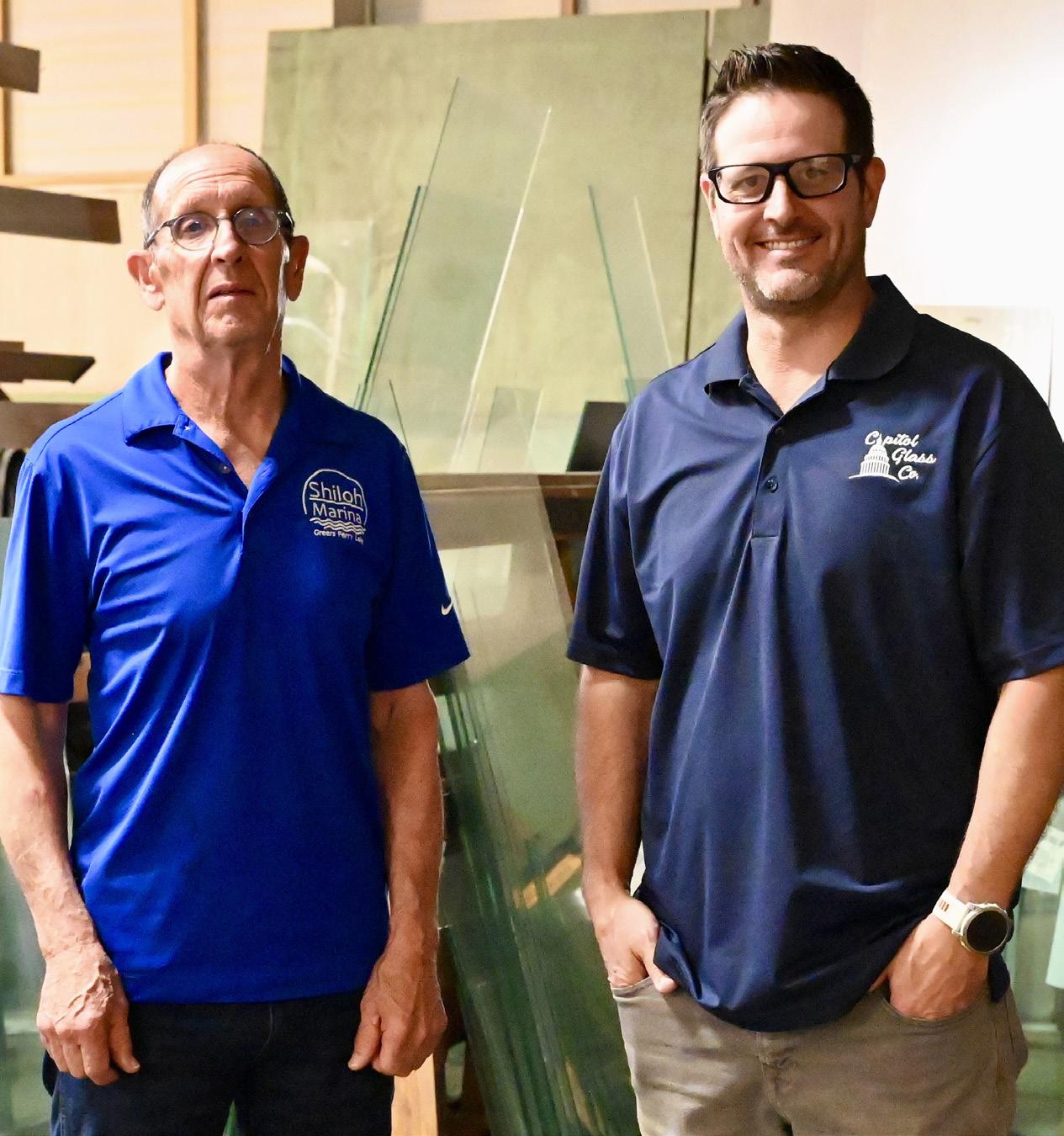
How do your working styles complement each other?
Aaron: Glenn is much more hands-on. He’s the hardest working, most detail-oriented person. I’m more on the big picture, long-term ideas side. When I started running Capitol Glass day to day, he started focusing most of his time up at Greers Ferry. We’re not in the same office as much, but we talk daily.
In what ways are you involved in the community outside of work?
Glenn has been heavily involved with Shriners organization. In the 1980s, he was part of the Flying Fez, which was a group of pilots that used their own planes to fly injured children down to the Shriners Hospital in Galveston, Texas. He was the recorder for the Shriners for the state of Arkansas from 2010 to 2016, and then he’s still involved with different aspects of it.
What is the secret to collaboration and compromise in business and in life?
Listen, be open-minded, and don’t totally dismiss the other person’s ideas just because you’ve never done it that way.
Glenn and Aaron Grimes are not only father and son but also business partners. Glenn’s father, Jack, co-founded Capitol Glass Co. in 1950, and Glenn took over upon his retirement in 1990. Aaron is now the third generation of the Grimes family to own the Little Rock institution. More than seven decades in, Capitol Glass is the oldest locally owned and operated glass company in the area, and both Glenn and Aaron are committed to continuing its legacy. The Grimes also own and operate Shiloh Marina and Lacey’s Boating Center, both of which are located on Greers Ferry Lake.
What is the best thing about working as part of a “Dynamic Duo”?
Getting to pass the legacy on to the next generation. Glenn started working full-time at Capitol Glass the Monday morning after he graduated high school and worked here full time for 50 years. He’s the one who built this place into what it is now. I’ve got a 4-year-old son, so, hopefully, we can keep it going long enough, and if he’s interested, he can carry on to the fourth generation.
What is your strategy for keeping business and personal relationships separate?
Having a lot of recreation in common and some of our businesses being in the recreation industry helps. Glenn is almost 70, and he still water skis and snow skis. He still rides dirt bikes, mountain bikes and road bikes. With me being an only child, too, it’s always been a close friend type of relationship. We’re trying to get my son into all that, and we have a lot of fun.
Is there anything else readers should know?
Glenn’s father, my grandfather, will be 100 in September, which is also when Capitol Glass officially turns 75. We’re excited to celebrate both, and it’s nice being able to go all the way back to the founder of the place. He’s still around to see all the growth that’s happened, so that’s awesome.

Tell us more about the work you do.
We provide managed IT services to businesses ranging from medical and dental offices to trucking companies and restaurants. Although Beau’s title is CEO, he is still very much a technician. He handles the more complex IT-related issues that our clients encounter and spends a lot of his time providing solutions to improve our client’s technology. Hollie is the chief operating officer and handles all things related to the running of the business, supports our staff, and oversees our website design and hosting department.
In what ways are you involved in the community outside of work?

We are involved in our local community by supporting Rise, a domestic violence shelter based in Conway, and the Sons of the Flag, an organization dedicated to assisting burn victims who are first responders and military personnel, as well as their families. We have witnessed the impact of Sons of the
Beau Odom discovered an interest in information technology in high school and worked his way up at a tech company before teaming up with his older brother to establish Professional Computer Services Inc. in Conway in 2006. Hollie Odom, meanwhile, honed her skills in the dental field as a receptionist, office manager and then chief operating officer. She and Beau married in 2018, and she joined him in running the business after Beau became the sole owner of PCSI in 2021. Their combination of skills has given the company a leg up with the dental clients it serves, though the PCSI team is also adept across a wide range of industries.
Flag firsthand, particularly with a young man we know who has received invaluable support from the charity.
What is the secret to collaboration and compromise in business and in life?
Open communication. We really make it a priority to listen to each other’s ideas and concerns. This definitely applies to us in our personal and professional lives.
Do you think it’s important to keep your business and personal relationships separate? Why or why not?
For us, blending our business and personal relationships has resulted in a stronger marriage and a thriving business. We have worked really hard to create balance to allow each other to shine in our respective strengths. It has led to a powerful partnership.
What is the best thing about working as part of a team instead of alone?
Celebrating our daily successes together, whether big or small, is something that wouldn’t be possible if we were working alone. It truly feels like we’re building our dreams together side by side.
Hailing from Virginia and the Netherlands respectively, Shannon Hudson and Johan den Toom crossed paths in 2013 on their first day at the University of Arkansas in Fayetteville. Both student athletes on the Razorback tennis team, the pair have been inseparable since. The couple has channeled their athletic prowess and entrepreneurial spirits into the Matrix Club in Lowell, a stateof-the-art campus dedicated to tennis, pickleball, padel and fitness.
What’s the best thing about working as part of a team instead of alone?
You always have someone to think out loud with, which is only kind of a joke. We get to problem-solve together and enjoy the

journey, celebrate the highs and navigate the lows together. Each of us gets to work alongside our best friend and raise our son in the environment we’ve built. He’s growing up on the courts, surrounded by a healthy lifestyle, community and positive role models.
Is there anything else readers should know about you?
Everyone who knows us on a personal level knows we work hard and play hard. Our energy is intense, but so is our joy. Johan’s dry, witty humor of the Netherlands has a way of filling any room with laughter, something people instantly gravitate toward. Shannon is the most
hardworking, determined five feet of sass you’ll probably ever meet, and she brings that same fire to everything she does. Right now, Shannon is gearing up to launch a new brand, GOLD CLUB by Shannon Hudson — a line of durable gold-filled and gemstone jewelry designed for women who live boldly and play hard. It’s jewelry you can actually play in, built on grit, laughter and a shared love for the hustle.


By AMP Staff
A new health care company in Little Rock is seeking to tackle one of the most common yet most often-overlooked conditions Americans face — hearing loss. Matthew Douglas, who opened Arkansas’s first Hear Again America location in Little Rock last December, said addressing hearing loss is one of the easiest things people can do to improve their quality of life.
“The reason why I got into this business is because I wanted to help people,” he said. “I wanted to provide the most professional, high-quality care for patients and help them hear all of the things in life that they had been missing.”
Douglas, who launched the business with his wife, Ashleigh, is on a mission to
bring the latest in medical care and the highest in customer service to central Arkansas through the Hear Again America system. At 36 locations nationwide and growing, the company has quickly established itself as one of the most trusted names in audiology services, which led to the couple’s decision to bring its cutting-edge hearing technology to Arkansas.
~15% of American adults report some trouble hearing
— National Institute on Deafness and Other Communication Disorders
“Hear Again America is known for its growing brand presence, reputation for quality, and a shared vision for patient care and community outreach,” he said. “Everything the company does is first class, and that’s exactly the experience that we seek to deliver to our growing list of satisfied patients.”

“Hearing
aid technology and design
is far more
advanced these days, starting with their range of capabilities, including speech translation, transcription and health-tracking technologies.”
— Matthew Douglas, Hear Again America, Little Rock
The venture has entered the market at a time when hearing loss has reached epidemic proportions in the United States. According to the National Institute on Deafness and Other Communication Disorders, about 15 percent of American adults — 37.5 million people ages 18 and older — report some trouble hearing, and 1 in 8 people in the United States, about 30 million individuals ages 12 or older, has hearing loss in both ears, based on standard hearing examinations.
Besides the obvious communicative difficulty that it brings, hearing loss can affect people in ways beyond missed conversations or difficulty enjoying a movie or performance. NIDCD notes nearly 20 percent of hearing-impaired adults ages 20 to 69 report dealing with depression. That worsens as hearing loss takes people out of daily activities, a reality experienced by nearly 30 percent of people older than 52 with moderate to severe hearing loss.
ate of Audiology from Gallaudet University in Washington, D.C., and has a Certificate of Clinical Competence in Audiology from the American Speech-Language-Hearing Association. A pediatrics specialist, she has a strong background in ear, nose and throat and neurotology settings, as well as extensive experience diagnosing and treating complex hearing, balance and auditory processing.
More than her rigorous training and extensive experience, Adams also has a profound personal understanding of the effects hearing loss can have on a person. Having experienced hearing loss herself since birth, she brings a unique perspective to her work that creates a true connection with her patients.
“One of the things that attracted me to partner with Hear Again America is how they treat every single patient with compassion and respect,” she said. “Anyone who knows me and is familiar with my own story knows how passionate I am about using a patientcentered approach in my work, explaining complex information clearly, and collaborating with patients and families on the best solutions for their lifestyle.”
Despite the many ways it disrupts health and happiness in people, a relative fraction of people actually take steps to address the situation.
Hearing loss becomes more problematic with age. Where about 5 percent of adults ages 45 to 54 have disabling hearing loss, the rate doubles for adults ages 55 to 64 and then more than doubles again for individuals ages 65 to 74. By age 75 or older, more than half the demographic has disabling hearing loss, the NIDCD reports. Add in the fact that the baby boomer generation continues to reach age 65 in record numbers, and the scope of need becomes very clear.
“Hearing loss is one of the primary factors of getting older, but it doesn’t have to be a limiting factor in the golden years,” said Dr. Ariel Adams, the practice’s resident audiologist. “The tools and technology that are at our disposal today in the audiology field are so much more advanced than they once were. This not only gives us a lot more tools in our toolbox, so to speak, but it helps us customize solutions according to individual patient needs. The days of one size fits all are definitely a thing of the past.”
A native of Conway and a graduate of the University of Central Arkansas there, Adams earned her Doctor-
One of the more puzzling elements of hearing loss today is the fact that despite the many ways it disrupts health and happiness in people, a relative fraction of people actually take steps to address the situation. NIDCD estimates about 28.8 million U.S. adults could benefit from using hearing aids, but that fewer than 1 in 4 individuals ages 20 and older have ever used one, especially in younger demographics, where only 17 percent of people ages 20 to 69 take corrective steps, choosing instead to literally suffer in some degree of silence.
Douglas said the reasons for that are not hard to decipher, from outdated notions of hearing aids as clunky, obvious contraptions solely for seniors to being turned off by the impersonal manner in which many people are treated when seeking help.
“Hearing aid technology and design are far more advanced these days, starting with their range of capabilities, including speech translation, transcription and health-tracking technolo-
“One of the things that attracted me to partner with Hear Again America is how they treat every single patient with compassion and respect.”
— Dr. Ariel Adams, Hear Again America resident audiologist

“The idea is if you have an issue with your hearing device and you’re a patient of Hear Again America, you can walk into any clinic, and we’ll already have your patient data ready for you.”
— Matthew Douglas, Hear Again America, Little Rock
gies,” he said. “As far as their appearance, they come in all different colors. They come behind the ear or in the canal so you can’t see them. A lot of famous people actually wear hearing aids, but you would never know it because you can’t see the device.
“Unfortunately, this is an industry that has turned very transactional, and in many places, it has lost its care for the patient side. That’s where we’re very different, I think. Hear Again America believes it is more about personal experiences and patient experiences than simply making a sale. Having someone like Dr. Adams who has experienced what patients are going through is something our patients really appreciate. We strive to build a connection with the community to help them have a better quality of life.”
The Hear Again America hearing center in Little Rock’s Pleasant Ridge Town Center provides an array of hearing-related services such as tinnitus testing, hearing exams and wax removal, as well as five major brands of hearing aids. The practice accepts most major insurance, third-party insurance and private pay, further reducing the stress and hassle of getting help for audiology issues, before, during and after the sale.
“The idea is if you have an issue with your hearing device and you’re a patient of Hear Again America, you can walk into any clinic, and we’ll already have your patient data ready for you,” Douglas said. “We are a bundled solution, which means we’re not going to charge you for a patient visit. We’re not going to charge you to clean your hearing devices. We’re here to help, and that’s all included in our price list.
“It’s all part of our philosophy about the essential nature of what we do and the benefit that it brings our patients. This is not a fashion accessory that you just take off and on when you want; this is a medical device that addresses a true need for people and that can substantially improve their quality of life.”

11525 Cantrell Road, Suite 407, Little Rock Pleasant Ridge Town Center 501-251-9375 | hearagainamerica.com Hear Again America | Little Rock AR

Hearing difficulties go beyond the movie theater or concert hall as far as impacts on health. According to the Centers for Disease Control and Prevention, hearing loss also affects an individual in the following ways:
• Hearing loss can interfere with one’s ability to communicate with family and friends, which may lead to increased isolation and depression.
• Childhood hearing loss can impact language development, literacy, selfesteem and social skills.
• According to the Hearing Health Foundation, for every 10 decibel decrease in hearing, there is a significant decrease in cognitive ability.
• Research indicates seniors with hearing loss are significantly more likely to develop dementia.
• People with low-frequency hearing loss are considered at risk for cardiovascular events.
• Hearing loss can be an early sign of diabetes or cardiovascular issues.
• Hearing loss is twice as likely for those with diabetes, and high blood pressure can be an accelerating factor of hearing loss in adults.
• People with mild hearing loss are three times more likely to have a history with falling. Frequent falls can cause serious complications, especially in older adults.
At Olympus Wealth Strategies, financial planning goes far beyond the balance sheets. It is about empowering individuals and families to achieve their unique financial goals. With a holistic, relationship-centered approach, Olympus seeks to help clients navigate through the complex world of wealth management with clarity, confidence and care.
Founded by John Sidery, a seasoned advisor with over a decade of experience spanning both a major global financial institution and an independent firm, Olympus was created from a belief that financial services should feel personal, no matter how big or small one’s assets are.
“When we say Olympus Wealth Strategies is holistic and personalized, it’s more than just a tagline,” he said. “It’s how we operate every day. We take time to understand each client’s full financial picture.”
A native of Westfield, Indiana, Sidery credits his small-town upbringing with instilling in him core values, including integrity, hard work and genuine human connection.
That commitment to service is captured in Sidery’s philosophy, “After the sale, it’s the service that counts.” It is a lesson he learned while watching his family run a business.
“I grew up understanding that how you take care of people says everything about who you are — and that trust is earned through actions, not just words,” he said.
At Olympus, that “family-level service” means no one is just a number. Olympus

tailors each strategy to meet each individual to each individual’s needs.
“Most of the people who come to us are looking for a real relationship, not just someone to manage their money,” he said. “A lot of our clients are families, business owners or individuals going through big life changes who want guidance they can trust.”
Olympus offers a wide range of services including estate planning, insurance and risk management, retirement planning, banking/lending solutions, and more. Also, through its affiliation with Uptick Partners, Olympus offers tax advice with in-house certified public accountants.
The mobile app allows clients to see their information at the touch of a button, which Sidery said helps increase transparency and create a client friendly experience.
Connect with Olympus Wealth Strategies online at investolympus.com, or call

When he is not helping clients, Sidery prioritizes what he calls “memory dividends” which are investing in experiences that create lifelong memories.
“Outside the office, I believe it’s important to live a well-rounded life,” he said. “My faith guides me, my family keeps me grounded, and being outdoors recharges me.”
For anyone seeking a financial partner that listens, leads and cares, Olympus Wealth Strategies may be the right


By AMP Staff
In the heart of northwest Arkansas, a powerful economic development strategy has quietly been gaining national attention. It is not an incentive tax break or a flashy recruiting campaign. It is a homegrown, sector-specific accelerator that proves what is possible when startups, enterprise leaders, public partners and ecosystem builders align with purpose.
That strategy is Fuel Accelerator.
Fuel was launched in 2018 by Startup Junkie Foundation and RevUnit. Fuel was built not as a vanity project or an import from the coasts but as a deliberate economic tool to support the state’s evolving innovation economy. Since its inception, the program has grown into one of the region’s most consistent and influential vehicles for venture engagement, capital formation and high-value job creation.
The Startup Junkie Foundation, a nonprofit entrepreneurial support organization based in Fayetteville, laid the foundation for Fuel with the support of RevUnit, then a Bentonville-based, nationally recognized tech firm known for transforming enterprise operations. It was not about chasing trends or mimicking coastal incubators. The team instead looked inward, zeroed in on what made the northwest

10 cohorts completed
84 companies accelerated
11 countries represented
20-plus U.S. states represented
$250 million-plus in capital raised by alumni
$97.5 million raised by companies operating in Arkansas
10 companies relocated HQs to Arkansas
31 Arkansas-based offices opened
180-plus Arkansas jobs created
Arkansas business ecosystem unique and dreamt of what could be accomplished by a coalition of the willing. Then they got to work designing a program to connect early-stage, high-growth ventures to some of the key industrial strengths of Arkansas — supply chain and logistics — and the enterprise partners embedded there.
It was not a cakewalk. No public-facing success story is ever the overnight success that headlines often portray.
“It was really an endeavor pulling the first cohort together,” said Michael Iseman, a member of the Startup Junkie Foundation from 2015 to 2019 who served as the founding director of the Fuel Accelerator. “Working with the state for that first program to be approved, coordinating with volunteers, partners, funders, mentors and other entrepreneurial support groups in the region and then recruiting companies to a pilot program … took a lot of coordinated effort.”
That effort paid off. With critical early funding from the Arkansas Economic Development Commission via its business and technology accelerator grant program, Fuel launched its first program in 2019. That grant program, made possible by legislation passed in 2017, was structured to incentivize the development of high-skill, high-wage jobs through technology-based innovation.
The inaugural cohort focused on scalable supply chain technology. It was a natural fit for the region, home to corporate titans such as Walmart, Tyson Foods, J.B. Hunt and ArcBest. Early results were promising, founders citing direct access to decision-makers and clear pathways to enterprise pilots.
Following the success of its supply chain-focused pilot program, Fuel made a bold and forward-looking move. Ahead of a 2020 launch, it shifted its entire programming to focus on artificial intelligence and machine learning. This pivot was not so much reactive as it was predictive.
Even before AI captured global headlines, Fuel’s leadership saw that AI/ML would become foundational across nearly every industry. Partnering again with RevUnit to develop a refined curriculum and hands-on engagement model, the new direction positioned Arkansas as a regional leader in applied enterprise AI.
To help launch this second program, then-Gov. Asa Hutchinson joined Startup Junkie to publicly announce the shift at a press event in 2019.
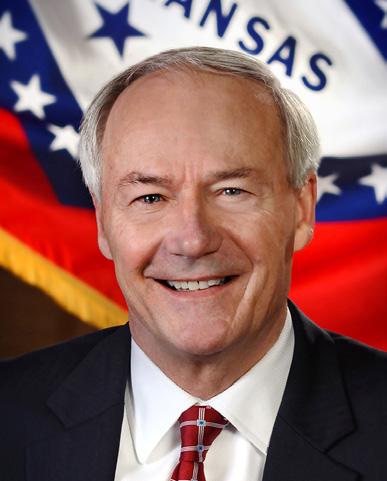
“[The Fuel Accelerator] is exciting for the entire state of Arkansas because it illustrates that we are accomplishing a strategic plan, that we’re carrying out our desire to increase not only businesses that can excel in technology but also supply the existing industries here with the talent and technology that’s needed,” Hutchinson said.
He added, “The Fuel Accelerator has had success. The second cohort will be from across the country, top-level companies. We’re going to be able to land some great companies that will stay right here when they see what all Arkansas has to offer. These programs have resulted in Arkansas becoming a micro hub of technology and startup companies. We’re looked at, nationally, as a leader because of these accelerator programs.”
It was a vote of confidence — not just in Fuel, but in Arkansas’ potential to lead in innovation.

What makes Fuel stand apart is not just its positioning. It is the team behind it. The Startup Junkie Foundation has served as the operating engine from day one. From recruiting founders across the globe to cultivating relationships with enterprise partners and industry mentors, managing government contracts, working with critical program partners to develop curriculum, and executing programming — Startup Junkie continues to carry the torch.
Over time, Fuel has earned the trust and backing of multiple partners. In addition to AEDC, the program has received federal funding from the U.S. Small Business Administration and impactful regional support from the Walton Family Foundation, but these investments did not seed the work — they followed results.
The Fuel effect shows up in alumni stories across each cohort, including the first one, which included Charu Thomas and her company Ox.
Thomas, a Georgia Tech graduate with a background in industrial engineering, joined the inaugural Fuel program in 2019 with her startup, then called Oculogx. The venture was focused on applying augmented reality to improve warehouse order picking — an ideal fit for Arkansas’s logistics and retail sectors. Thomas was recruited to the program by Iseman despite not knowing anything about the region.
“I had never heard of Startup Junkie before or northwest Arkansas,” Thomas said at the time.
After completing the program, she did not return to Atlanta. She stayed, and her company grew. Ox now employs more than 70 people. The startup has raised more than $16 million in capital, including a $12.6 million Series A in 2023 — the largest enterprise software Series A in Arkansas history. Thomas was later named to Forbes’ “30 Under 30” list, and the company has been profiled by the Wall Street Journal, Business Insider, and even the U.S. Patent and Trademark Office.


For many startup founders, Arkansas is not the first place that comes to mind when plotting a growth strategy but that perception is changing — and fast.
Fuel’s second cohort also saw immediate impact from ventures at the intersection of AI/ML and supply chain innovation. Fr8Relay, then known as Truckish, joined the 2020 cohort and traveled in from Memphis. The company, founded by husband-and-wife team Aayush Thakur and Deme Yuan, uses AI-enhanced relay models to transform long-haul trucking by enabling drivers to exchange trailers at designated hubs. The model reduces empty miles, improves sustainability and allows drivers to return home daily, addressing key challenges in the freight industry.
“Fuel’s focus on AI/ML tech startups, combined with the program’s proximity to major supply chain players, was a major draw to our decision to join their 2020 cohort,” said Yuan. “As
Fuel participants, we got a preview of the invaluable resources and opportunities the ecosystem could offer for high growth tech startups. It just made sense for us to move our headquarters to northwest Arkansas after the program, where for the last five years, Startup Junkie has continued to be a vital resource, providing mentorship, industry connections and supporting us in securing five SBIR grants.”
Since completing Fuel, Fr8Relay has secured more than $2 million in Small Business Innovation Research funding from the National Science Foundation, the U.S. Department of Agriculture and the Department of Energy. Fr8Relay’s grant work includes rural pilot projects, clean energy logistics and predictive scheduling innovations. The company also gives back to the local business community through support of organizations such as the Arkansas Association of Asian Businesses and by co-hosting events and pitch competitions that support minority entrepreneurs and promote diverse economic development.
Another standout story is that of Deeping Source, a privacyfocused AI video analytics company based in Seoul, South Korea. The company joined Fuel’s 2022 AI/ML program.
Hyun-Kyu “Logan” Lee, vice president of business development, flew from Seoul to Bentonville to represent the company during that program’s 12-week run.
“Deeping Source was deeply impressed by the tangible support provided through the Fuel program, which served as a catalyst for initiating collaboration with North America’s largest retailers,” Lee said. “In particular, the northwest Arkansas mentoring program offered by Fuel allowed us to engage directly with industry leaders, which greatly helped us validate the local market fit of our solution.”
“Thanks to the startup-friendly business environment in northwest Arkansas and the attentive support from the Startup Junkie team, we were able to directly experience the growth potential in the North American market,” Lee added.
Then there is the story of Smart Eye Technology. Founder and CEO Dexter Caffey came through the 2023 Fuel AI/ML co-

hort. His cybersecurity company specializes in continuous biometric authentication and secure document sharing.
Caffey was so impacted by the program that he chose to relocate his company and family from Atlanta to Bentonville.
“Fuel gave us direct access to enterprise partners we could actually build with, something rare in most accelerators,” Caffey said. “Startup Junkie made us feel like part of the community from day one, and moving to Arkansas felt less like a relocation and more like plugging into an ecosystem that genuinely wants startups to win.”
In late 2022, the Startup Junkie Foundation made another strategic move. With new resources made possible by congressional funding, the organization decided to scale Fuel again — this time into health care innovation.
In the spring of 2023, the first HealthTech cohort launched.
“As the Fuel Accelerator continues to grow in both impact and scope, we see the opportunity to better serve our region by adding a focus on health-related innovations and technologies,” Caleb Talley, executive director at Startup Junkie Foundation, said at the time. “Before long, people will think about northwest Arkansas as a health care hub just as they currently do with retail or supply chain.”
That prediction is already proving true. In the two years since that first HealthTech program launched, the region has experienced an unprecedented health care infrastructure surge:
• Arkansas Children’s unveiled a $318 million campus expansion.
• Highlands Oncology acquired land for a massive 150,000-square-foot facility.
• The University of Arkansas for Medical Sciences broke ground on a 185,000-square-foot orthopedic and sports medicine center.
• Mercy Hospital and the Alice L. Walton Foundation, in partnership with the Cleveland Clinic, announced a $700 million health care investment.
This spring, Fuel’s third HealthTech cohort will host its Demo Day at the newly opened Heartland Whole Health Institute. Later this summer, the Alice L. Walton School of Medicine is expected to open its doors.
Fuel is not simply leaning into that heat and energy of the regional health momentum; it is helping to provide the spark. Its 10th cohort is more than a milestone. It is a marker of momentum.
With AI/ML and HealthTech firmly established as core pillars, Fuel is positioned to explore additional verticals, keeping an eye on sectors that align with regional priorities and emerging global needs.
As Startup Junkie and its partners look to the future, the focus remains steady: identify areas of strategic strength, build connective infrastructure, and attract founders who want to scale.
The Fuel Accelerator proves that Arkansas does not have to chase someone else’s version of innovation. It can define its own.
By bridging world-class enterprise partners with emerging ventures and then giving those ventures the tools to compete on a global stage, Fuel has shown that startup acceleration can be more than pitch nights and platitudes. It can be a tool of strategy, resilience and long-term economic growth.
Fuel does not just make email introductions or help startups raise capital. It is changing the narrative.
That story is still being written.
In particular, northwest Arkansas is quietly emerging as one of the country’s most tactical locations for innovation-driven companies ready to scale. For those willing to look beyond the traditional coastal hubs, the region offers something rare: direct access, meaningful opportunity and the chance to grow alongside some of the world’s largest enterprises — without the barriers of larger, saturated markets.

At the heart of that advantage is proximity. Northwest Arkansas is not just home to Fortune 500 brands; it is home to their leadership, their innovation teams and their strategic partners. In a region where corporate campuses, startup hubs and research centers are separated by minutes — not hours — the collision potential between innovators and decision-makers is immediate and organic. Opportunities to launch pilot programs, forge partnerships and tap into enterprise-level contracts are not theoretical. They are daily realities.
That access is paired with an operational advantage that cannot be ignored. Founders relocating from high-cost urban centers quickly realize that every dollar stretches further there. Talent is plentiful, overhead is lower, and growth capital buys more — more time, more talent, more traction. In a landscape where extending runway often means the difference between scaling or shuttering, northwest Arkansas offers a powerful financial edge.
Yet it is not just the business fundamentals that set the region apart. Increasingly, quality of life has become a competitive edge

for recruitment and retention. In northwest Arkansas, founders and their teams can build world-class companies without sacrificing access to world-class culture, education, recreation or health care. It is a place where mountain biking trails are minutes from downtown, where fine art and live music thrive, and where ambitious ideas do not require abandoning balance.
Fuel Accelerator alumni — many of whom have stayed to build and scale their companies here — consistently point to the region’s unique ecosystem: collaborative, supportive and deeply invested in seeing innovation succeed. Here, startups are not treated as expendable — they are treated as essential. They are not one small fish in an ocean of noise; they are partners in a regional strategy to grow, diversify and future-proof the economy.
None of that is by accident. The rise of northwest Arkansas as a magnet for startups is the result of intentional investment from state leaders, economic development organizations, private foundations and corporate innovators alike. Programs like Fuel Accelerator were launched not just to attract startups but to integrate them into the DNA of the region’s future.
Today, that future looks brighter than ever.
For founders willing to think differently about where they build, Arkansas is not just an option — it is a strategic advantage.


People all over Arkansas trust Dr. Jahon Zehtaban with their smile. With years of experience in providing clinical excellence you know your smile is in good hands. Dr. Zehtaban is a proud member of both the American Academy of Cosmetic Dentistry and the American Academy of Dental Sleep Medicine. Credentials, experience, and caring concern for each individual patient ensure that you’ll receive exceptional esthetic results regardless of the challenges presented. Learn more how Dr. Zehtaban can help you have an incredible smile by calling today for your complimentary smile consultation.
501.819.3608
COSMETIC SERVICES
Porcelain Veneers & Crowns
Dental Bonding
Zoom® Whitening
Dysport Injections
Invisalign • Dental Implants



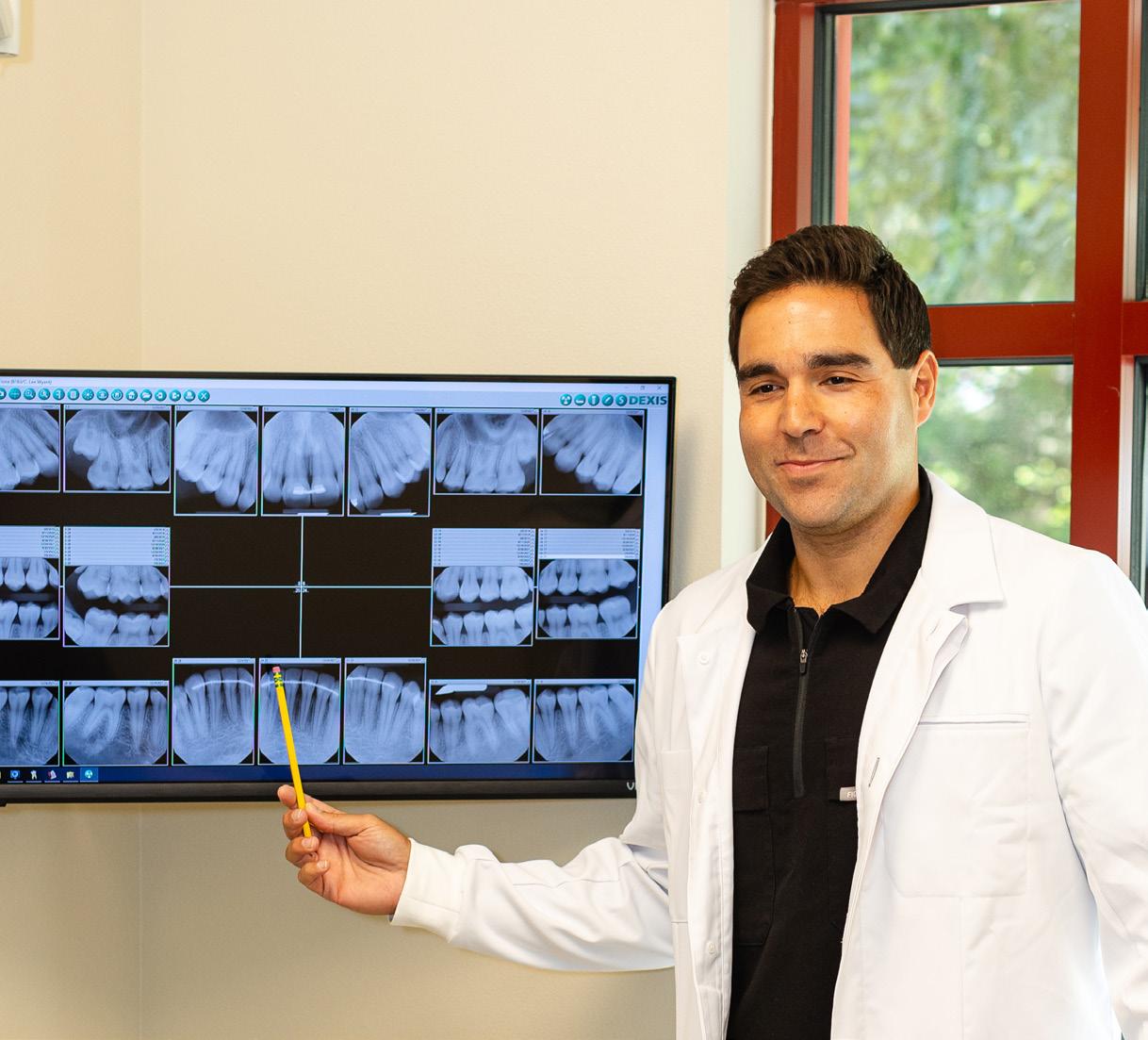


As the old saying goes, “If you don’t like the weather in Arkansas, just wait 30 minutes, and it will change.” As the past four weeks since Part 1 of Arkansas Farm Bureau President Dan Wright’s interview appeared in last month’s Arkansas Money & Politics has shown, the political climate can also shift mighty fast.
Since then, the Trump administration has found itself embroiled in political skirmishes on multiple fronts, all of which have consequences
for the nation’s economy. Critics point to freezing of agricultural grants, mass deportations and the threat of global tariffs as existential issues for farmers, while proponents argue that longterm benefits outweigh the shock of the short term.
The president has shown himself sympathetic to the plight of farmers during his first term and has been rewarded by the support of the country’s rural stretches as a result of it. An article penned by Iowa State University, reprinted Nov. 5, 2019 by Successful Farming magazine, stated that while farmers bore the brunt of the White House’s tariff tete-a-tete with China, they
By Dwain Hebda
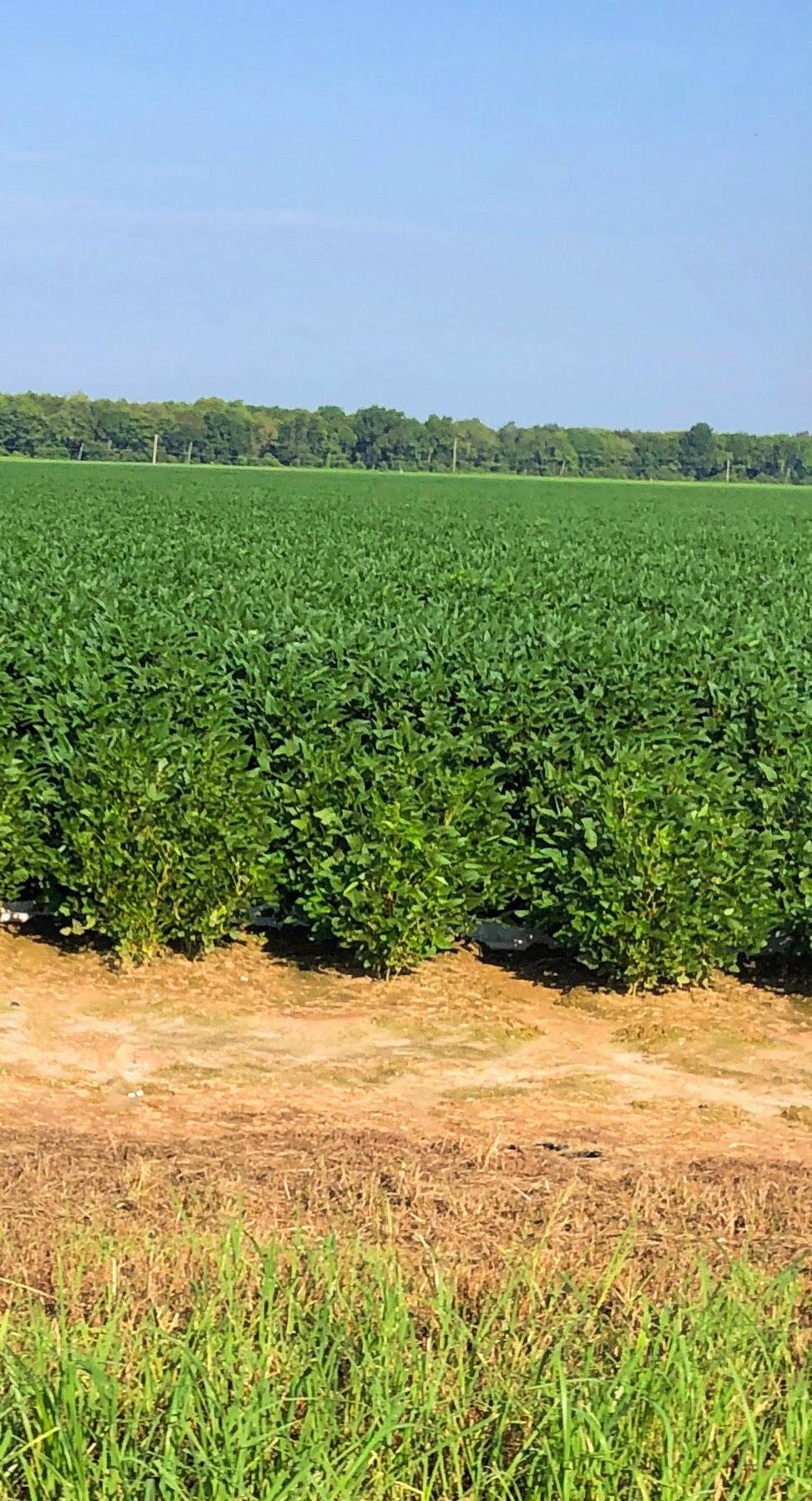
were also beneficiaries of generous subsidies to compensate for the hit. In Iowa alone, farmers raising soybeans, sorghum and other crops received $12 billion in assistance in 2018 plus another $16 billion later to offset trade losses and crops damaged by heavy rains.
In an editorial last month, the Chicago Tribune made the counter-intuitive projection that ag producers were likely to benefit from tariffs and other challenges today, especially corn and soybean growers, thanks to a steady diet of government subsidies. Billions have flowed into the heartland in response to the
Biden administration’s bloated inflation and Congress’ failure to pass a new Farm Bill in 2023. Billions more were paid out due to natural disasters affecting yields.
The U.S. Department of Agriculture reported in early April that direct government payments to farmers in 2025 would reach $42.4 billion, and that is before anything Congress might yet approve in the face of retaliatory trade practices by international customers of U.S. farm goods. In fact, the USDA forecast net farm income is expected to jump 30 percent nationally, pushing the average farm over the $100,000 mark. That is not to mention what windfall could occur if the tariff gambit actually works, leveling the playing field in markets all over the world.
Of course, such largesse is merely speculative at this point, and real concerns are emerging about how long many farmers can hang on until things start to turn around. Bloomberg Law did a piece in April showing the ground-level impacts of the administration’s policies and reported a growing number of cases where any market improvement is too little and any bailout check too late.
The article reported family farm bankruptcies increased by 55 percent in 2024 compared to the prior year and are trending even higher thus far in 2025 as producers, still reeling from the disastrous inflation of the previous administration, are caving under the trade broadsides launched by the current one.
The magazine noted bankruptcy filings last increased at this pace in 2019, the first time Washington lobbed tariffs in China’s direction. Following the aforementioned federal bailouts, Chapter 12 bankruptcies declined until 2024, when they nosed back up again. Thus far this year, 82 cases have been filed in the first quarter, double that of the same time period one year prior.
In Part 2 of a wide-ranging interview conducted before the trade war heated to its current temperature, Wright details what work remains locally to buoy Arkansas’ ag sector, which generates more than $24.3 billion in total value added to the state economy per a 2024 report of the University of Arkansas Division of Agriculture’s Arkansas Agricultural Experiment Station.
We have folks that raise cattle, and they either go and find a federally inspected slaughterhouse in order to sell that meat directly to the customers, or we have some that are growing the animals on the farm and selling that animal to a customer to have them custom slaughtered. We’re seeing quite a bit of that.
AMP: In agriculture’s traditional model, you grow a crop, you take it to the elevator, and it passes through different middlemen and eventuallywinds up in markets foreign and domestic. Now, however, it seems farmers and ranchers have the ability, in some instances, to more directly market, do contract growing or raise specialized beef herds, for instance. Is this a meaningful alternative to the traditional agricultural model?
Wright: We’re seeing some families in Arkansas that are doing just what you’re talking about. They’re doing a direct-to-consumer model. We have folks that raise cattle, and they either go and find a federally inspected slaughterhouse in order to sell that meat directly to the customers, or we have some that are growing the animals on the farm and selling that animal to a customer to have them custom slaughtered. We’re seeing quite a bit of that.
We’re also seeing different things not nearly as traditional as cattle. We’re seeing the goat market really pick up. We’re seeing sheep. You drive around the countryside, you see more goats and sheep than you’ve seen in the last 50 years. That’s a market for folks who can’t really afford to get into the big cattle market, or they’ve only got 30 acres. They’re now able to make some money off those 30 acres because they can do this direct-toconsumer sales model.
Right now, everybody’s trying to find whatever market they can find, whatever niche market. A few years ago, we had grass-fed cattle, which
was a big thing. A lot of cattlemen fought it because it wasn’t traditionally what we did, but those who did grass-fed cattle said that they did better because they didn’t have to feed them any grain.
Folks in agriculture have always been really good at that, you know, for trying to find a way to squeeze that dollar and finding a way to make a little extra on the side from what is thought to be “traditional” farming or ranching. What we’re seeing right now is a lot of different changes in that and a lot of different variations, and we’re excited to see what comes on in the future.
AMP: Many people of a certain age remember the 1980s farm crisis, the tractors descending on Washington, the farms that were in family hands for generations that ultimately went up for auction because they just couldn’t make it go. Comparing that era to now, which is worse?
Wright: When I lived through the ’80s, I was living in west Texas at that time, and those were tough times. I saw neighbors lose their entire farms. I saw neighbors that had a century’s worth of life on that farm, and they lost it. We are getting very close to that now.
If we have to go through this another year, you may see those farms come up for sale again. Folks who have been there for over a century might have to decide, ‘Do we keep doing this? Do we get out of it now, sell out, or do we try another year?’ I think we’re very comparable to the ’80s right now.
Just as an anecdotal story to share, to put this all into context, [Arkansas Farm Bureau] did a video interview with a farm family in northeast Arkansas, a 10th generation farmer who was headed to auction. He had just determined that he could not continue in the current environment, didn’t see a way past the short term to get to the long term. That’s an example of where we’re at.
AMP: If we put the issue of the Farm Bill to the side, which is difficult to do because it touches so many elements of this problem, but if we put that to the side and get down to the state level, what are some of the other issues?
Wright: As far as kids staying on the farm, that’s become more difficult. What people don’t understand is how much it costs for a young person to get started in farming. When they’re first getting into it, they’re having to buy equipment, they’re having to either buy the land or rent the land, and they don’t have any equity in that farm yet. One of the old sayings is that the best way to make a profit on the farm is to have your wife have a job in town. It shouldn’t be that way. They should be able to sustain themselves.
At Farm Bureau, we understand that we’ve got to figure out a way to make farming profitable. This is probably the most honorable job one will ever have, feeding the world, but if it’s not profitable and they can’t make a living at it, then it’s going to be tough to do.
Even in my own family, my kids didn’t want to stay on the farm. They said, “Dad, there’s just not enough profit in it for us.” I’m in my mid-60s, and I’m getting to the point that I’ll be ready to retire before too awful long. I’ll probably be the last, unless my grandson hurries up and grows up and wants to take over.
AMP: What primary areas of cost could be addressed first that would make the biggest difference?
Wright: One thing we’re seeing is the affordability of health care. You know, folks on the farm, they don’t have the luxury of a company health care program. We’ve put together here at Farm Bureau a health care program that we believe fits these folks. It’s not like the traditional programs that are out there now. It’s fit more for entrepreneurs, self-employed people, and for not near the price of what they’re paying now. That’s one of the things we’re helping to address to make it a little bit easier to make a living.
We feel this is going to be revolutionary for us. We heard from our members a couple of years ago in our convention that we needed something in the health care system to lower these premiums, so in conjunction with Blue Cross and Blue Shield, we’re able to offer this new insurance program that is going to be probably half of what they’re having to pay now. This is going to help them a lot and help them grow their family.
We’ve also got the Arkansas Farm Trail program where we’re working with folks and we’re helping to promote their specialty crops like watermelons, tomatoes, peaches and different things like that. You don’t have to have a lot of land for that, and so we believe that takes young folks coming in or people moving from out of town coming in and helps them get into agriculture at a lower cost than it would be normally.

Dan Wright
We also have programs specifically for young farmers or ranchers and for women. We’ve just come off a conference for them where we had a great number of people there, great conversation. We talked about different commodities. We had workshops on finances, on how to keep the books.
AMP: What has you optimistic about the future?
Wright: In my two years as president, I’ve met several young people who’ve chosen to stay on the farm. Man, it’s in their blood. Once you farm a little, it’s hard to let go, and if you can’t do it, you’re miserable. We have an ag leaders program where we take high school students and we help them in their leadership skills. You would be amazed at the leadership we actually have out there at the high school level and at the college level. I mean, somebody who’s going to sit in my seat in a few years is going through one of these workshops right now.
Our biggest challenge is to figure out a way to make farming profitable so that more young people can do it. At Farm Bureau, our heart goes out to these young folks who have everything leveraged on that farm because they want to farm more than anything in the world. We are working day and night to try to keep them in business.
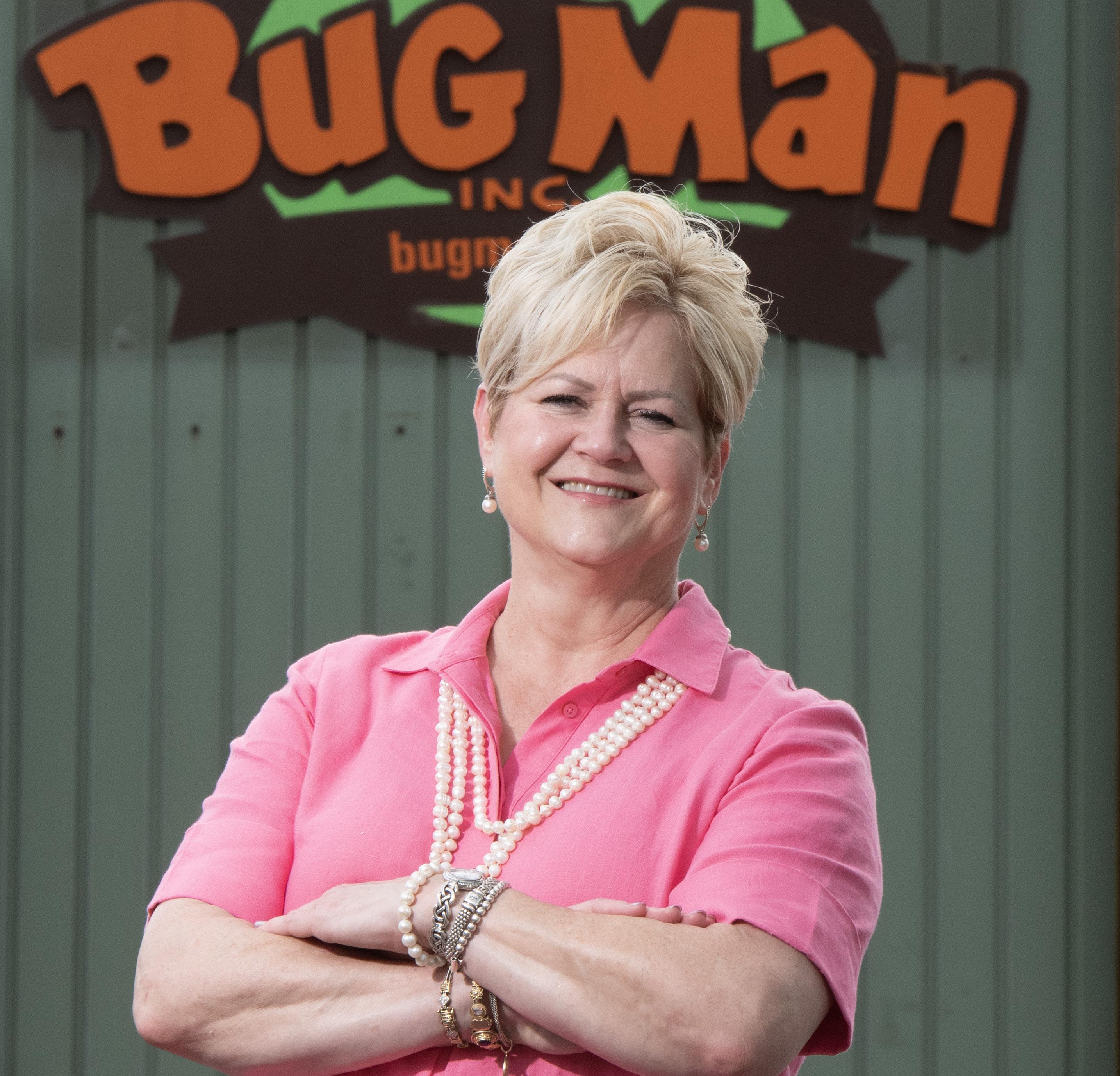
Becky Cranford has built The Bug Man on honesty, transparency and faith after the example of her father
Becky Cranford is a creature of habit in all the best ways. Her company, The Bug Man, has been a fixture both in the local business community and its south Little Rock neighborhood for decades. Employee milestones are still celebrated as they used to be, with spreads of food prepared by Cranford herself.
Many of the employees have been around for years, as have clients within a service area that has remained stubbornly consistent — anything inside a 50-mile radius not counting an independent franchise in Searcy owned by Cranford’s sister and brother-in-law. She waves off the mere suggestion of broadening the footprint further, either organically or via more franchising.
“It costs money to branch out,” she said. “My dad always said, ‘I just want to make a good living for my family and grow this area.’ He said, ‘I don’t want to be greedy. I want to do what I can take care of.’ That’s what we’ve always done, and it’s been a nice business.”
The topic is just one of the echoes of Bill McCauley, Cranford’s late father, company founder and enduring muse, that still rings throughout the 49-year-old pest control company. McCauley had made a name for himself as an innovator with local competitors before founding his own firm to reflect his personal values. That he did, and when he died in 2022, he left behind enough wisdom by which Cranford has ably steered The Bug Man ever since officially taking it over in 1991.
BECKY CRANFORD ON PERSEVERENCE
“One piece of advice from my Dad was in the form of a poem. He always tried to do the right thing, but he was human, and when you mess up just one time, people just see that one thing. They don’t see all your goodness. This poem said to try to do good anyway, even when people are against you. He shared it so many times with people, and tried his best to follow it.”
People are unreasonable, illogical, and selfcentered. Love them anyway.
If you do good, people will accuse you of selfish, ulterior motives. Do good anyway.
If you are successful, you will win false friends and true enemies. Succeed anyway.
Honesty and frankness make you vulnerable. Be honest and frank anyway.
The good you do today will be forgotten tomorrow. Do good anyway.
The biggest people with the biggest ideas can be shot down by the smallest people with the smallest minds. Think big anyway.
People favor underdogs but only follow top dogs. Fight for some underdogs anyway.
What you spend years building can be destroyed overnight. Build anyway.
Cranford herself pitched in with the company in high school typing up the paper forms that preceded the computerization that would not become common for another decade or so. Her first “real job” was in banking, and she had spent 12 years in the industry when her father came to her with an offer to rejoin the family company.
Give the world the best you have and you’ll get kicked in the teeth. Give the world the best you’ve got anyway.
“My dad came to my bank one day, and he goes, ‘You need to come work with our company,’ and I was like, ‘Why?’ He said, ‘It’s family business, I think you’ll like it,’” she said. “There was nothing said about turning it over to me, and at the time, my older brother was working here, so I told him I wanted to talk it over with David, my husband, I had to have to think about this. He came back the next day, and he said, ‘Did you turn in your notice?’”
After some back and forth, Cranford did put in her notice, and in November 1991, she began her second career, this time in the pest control business. She buckled down to learn the business from the inside out, and while women in back-office roles were fairly common in the industry, in the field and in the corner office, they were exceptionally rare — not that she ever let that bother her much.
“It’s becoming more common for women to be in this industry, even as technicians,” she said. “My sister and her husband in Searcy have a woman tech, and she’s one of their best techs ever. As far as my taking over, it wasn’t a big deal [internally] because it was so gradual. I was already here, it was nothing. It just kind of happened.”
We’d never laid anybody off, and that was the one time where we did. We’d just hired somebody, and when we had to lay them off, my dad found them a job, and then we brought them back once things picked up. I don’t want to ever go through that again.”
“My dad died three years ago. Seven years ago, our longtime office manager, my mother and my husband all died within nine months of each other. After I lost my husband, who was the third one within nine months, I gave a shower at my house, and a friend of mine from church came up to me, and she goes, ‘Becky, you need some therapy. That’s just too much loss.’ I said, ‘You know what? As sad as all that loss is, they made their goal, which is our goal. Why should I be sad about that? How can I be sad about that?’ I live like that. I’m not afraid to die. I’m ready to go. I’m okay when it’s time.”
Even so, Cranford worked like a person with something to prove. Not wanting to let anyone down, she took personally the futures and fortunes of the people who reported to work every day — now numbering 23 — and the health and well-being of the clients the company served.
“It’s definitely a get-down-and-dirty business, I mean, we’re literally under people’s houses and in their attics, but it’s honorable work,” she said. “I love working with customers and watching the business grow. We’re providing a need for our customers. Most of them have an urgency when they initiate with us, and it feels good to be taking care of a problem that they have. I mean, that’s cool.”
The company’s clientele has remained more or less constant at 60 percent residential and 40 percent commercial jobs, but the technology and product used is a far cry from what it was. That has made staff education and a comfort level with change mandatory.
“Like our termite application, that’s changed,” Cranford said. “New stuff is coming out all the time.”
As with most everything else, Cranford learned to take such change in stride from McCauley, who always welcomed new things, such as computers, when it was shown it would help the business. In 2008, however, the company came up against something for which there was little precedent and which tested leadership’s ability to adjust and adapt.
“In 2008, the recession hit, and it really slowed down the business,” she said. “For us, it was worse than COVID-19 because while there was uncertainty with COVID, our business was deemed as an essential service provider, so that helped.
“The recession was different; everything was just stagnant.
More recently, Cranford has led the company into a new service, that of crawl space encapsulation, a process that helps the air quality within the house by keeping down dust and controlling moisture under it. The service also helps modulate sales peaks and valleys during the year, resulting in steadier workflow no matter the season.
“The crawl space encapsulation we do is very nice. I have it in my house,” she said. “We offer several different thicknesses of plastic, which can save people a lot of money to fit their budget. The heaviest product, you can walk on it, crawl on it, and it will not tear. We can even do a drainage mat under it or put in a dehumidifier and a sump pump if needed.”
Asked what she is most proud of in her career with the family company, Cranford took on a slight smile and said, “That it honors God.” The Almighty has had a front-row seat going back to the very beginning of The Bug Man story; McCauley was fond of saying “God owns The Bug Man Inc. I just manage it.”
“One of the first lessons Dad taught me was to put God first,” she said. “Not everybody likes to hear that, but truthfully, everything is God’s, and whether you want to admit it or not, it’s still true. Admitting it is a blessing to you. That’s what matters.”
“I pay attention to what’s opening up, restaurants and stuff, and we try to make a sales call on them, but I will tell you the very best sales strategy for new customers is how well we take care of our current customers. That is a great sell for us. The better we take care of our current customers, the more they recommend us. We get a lot of referrals from our current customers.”
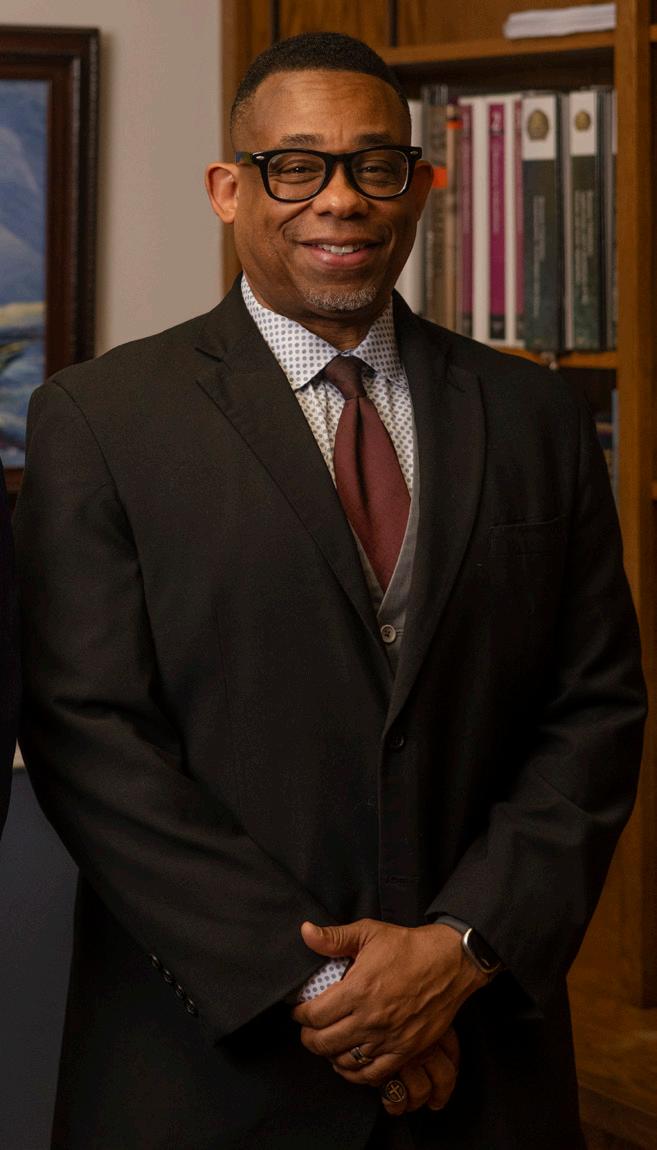


The Arkansas Governor’s Cup collegiate business plan competition was launched in 2000 by Little Rock’s ACC Capital to “inspire students to see entrepreneurship as a real path to building their futures in Arkansas,” according to ACC CEO Sam Walls III.
Mission accomplished. Twenty-five years later, the competition is bigger and stronger than ever. The 2025 event wrapped in April with its annual pitch competition and awards ceremony in Little Rock. For its first 23 years, the competition was open only to student teams from Arkansas colleges and universities competing in undergraduate and graduate divisions. Since being expanded in 2024 to include grad-level teams from bordering states and with the addition of a small business division, the Arkansas Governor’s Cup has seen significant growth.
In fact, the competition has seen an increase of 170 percent in applications since 2023. The goal of engaging more young entrepreneurs and innovators and luring them into the business world is paying off. Over the course of its quarter-century run, the Governor’s Cup has seen more than 1,000 business plans submitted, more than 3,200 students have participated, more than $2.9 million in prize money has been distributed, and 18 percent of all teams that made it to the final round went on to officially start a business.
This year’s event also featured 65 volunteer judges — real-life entrepreneurs, small-business owners, CEOs and other executives — as well as more than 600 attendees at the awards luncheon held in April at the Statehouse Convention Center in downtown Little Rock.
Governor’s Cup celebrates quarter-century of seeding
By AMP Staff/Photos by Jacob Slaton

“Today, the competition’s generational impact is clear — a growing network of innovators, leaders and business builders who are shaping their communities,” Walls told Arkansas Money & Politics. “The surge in applications and the energy at our awards event show that entrepreneurship is no longer a specialty skill — it’s essential for every student and every community. The Governor’s Cup is a cornerstone of ACC Capital’s larger mission to invest in talent development and empower the next generation of changemakers in the South and beyond.”
Competing students are not required to start a business, but as of 2025, roughly 30 Arkansas companies can trace their roots back to the competition. Tiffany Henry, vice president of the Education to Develop and Grow Entrepreneurs, or EDGE, initiative at ACC Capital, which rebranded from Arkansas Capital Corp. in April, said the competition was designed to encourage college students to think like entrepreneurs and experience a true entrepreneurial education.
“They are fully immersed into what it takes to launch a startup from the ground up,” she said. “The rigor of the work leads them to gain a much greater appreciation of the challenges realworld entrepreneurs face in the business model and customer development process. Many competition alumni say they continue to benefit from the networking opportunities and relationships created through their Governor’s Cup experiences.”
$20,000 cash prize), Retra from Arkadelphia’s Ouachita Baptist University in the small business division ($10,000) and Imagine Devices from the University of Texas in Austin ($20,000) in the high growth/graduate division. Elevator pitch winners in the three divisions included two Arkansas schools, as well, each winning a $1,000 prize — TheraLink from Harding in high growth/undergrad, Pet Buddy from University of the Ozarks in Clarksville in small business and Plasticless from Rice University in Houston in high growth/graduate.
Pet Buddy also placed third overall ($5,000) in small business, while SignBridge from John Brown University in Siloam Springs placed third ($7,500) in high growth/undergrad.

UA teams swept second place across all divisions — Humimic Biosystems ($10,000) in high growth/ graduate, Swaply ($10,000) in high growth/undergrad and ABC RoboKits ($7,500) in small business.
The FarmSmart.ai team out of Louisiana State University in Baton Rouge took home third place and $7,500 in the high growth/graduate division.
The competition’s first two decades saw business plan teams from the University of Arkansas Sam M. Walton College of Business dominate. Many UA teams, under the mentorship of longtime Walton College faculty member Carol Reeves, went on to find much success in competitions at the national and global levels.
While teams out of Fayetteville still find much success at the Governor’s Cup and beyond, the competition helped spur more interest at other schools in Arkansas, as evidenced by the 2025 results.
The top winners in the competition’s three categories were the TheraLink team from Harding University in Searcy in the high growth/undergrad division (for which the team won a
The UA’s flagship campus in Fayetteville advanced the most teams to the semifinal round over all divisions, four of which made it to the final round — Huminic Biosystems, Swaply, ABC RoboKits and PulseArk Technologies. Other finalists included Pet Buddy from Ozarks, Retra from OBU, HydroSling from OBU, White River Water Sports from Lyon College in Batesville and Taste of Africa from Arkansas State University in Jonesboro in the small business division. High growth/undergrad finalists included TheraLink, Swaply and SignBridge, as well as Solaris from Little Rock’s Philander Smith University, Shelf from the University of Arkansas at Fort Smith and Trade Connect from Conway’s Central Baptist College. Also reaching the high growth/graduate final round, in addition to winners listed above, was Automatic AI, a joint team from the University of New Orleans and the University of Mississippi in Oxford.
The semifinal round in all divisions was made up of teams from the UA, Ouachita Baptist, Harding, Lyon, UCA, Arkansas State, JBU, Philander Smith, Central Baptist, UAFS, Harding, Texas, LSU, LSU-Shreveport, Rice, UNO and Ole Miss.

Bell to Bell, No Cell Act set to improve student mental health, academic performance
By Sarah DeClerk

Cellphones and other personal electronic devices will soon be out of the hands of Arkansas students thanks to the Bell to Bell, No Cell Act, which requires public school districts and open-enrollment public charter schools to create policies prohibiting the possession of such devices on campus while school is in session.
The issue had been on the minds of Arkansas lawmakers since at least last year, when Gov. Sarah Huckabee Sanders sent a copy of The Anxious Generation by Jonathan Haidt to every member of the Arkansas legislature, along with governors across the U.S. The book details the damaging effects of youth cellphone and social media use.
Sen. Tyler Dees (R-Siloam Springs), lead sponsor, told the 95th General Assembly the purpose of the bill was twofold: to eliminate distractions in the classroom and to improve youth socialization. He cited data from The Anxious Generation and the Manhattan Institute showing teenage social media use causes sleep deprivation, mental health issues and academic problems.
“The stats that we’re starting to see across the country with rise in anxiety and depression and suicidal thoughts are all being stemmed back to upstream issues related to addiction to screens, to cellphone use, to social media exposure, and, unfortunately, that’s happening all the time in our schools, and we can’t stand for that,” he said. “We can’t continue to harbor that and encourage that in our school system.”
Rep. Zack Gramlich (R-Fort Smith), a teacher at Darby Middle School in Fort Smith, spoke in favor of the bill, telling the House it is difficult for educators to compete with smart devices for students’ attention.
“The amount of behavior issues we have because of cellphones in our school is untold, and I can’t put a number to how much many, many teachers in this state are excited for a bill like this,” he said. “We want the phones out of our classrooms. We want to be able to teach again.”
He detailed some of the effects of cellphone use among his students to Arkansas Money & Politics.
“I see, in my class daily, cellphones,” he said. “We have tried to do a pretty good job in my school of say-
ing no phones in class, but what ends up happening is because phones are allowed in the hallways, allowed at lunch, kids will sneak them, and they will hide them in their pockets and stuff like that. What ends up happening is they just stay distracted on them most of the day, and that’s really at the best level.”
At the worst level, he said, students text each other to organize fights in the bathrooms, which they film to post on social media, or use the photo and video capabilities of the devices to bully other students.
Gramlich has also noticed cellphone usage taking the place of face-to-face interactions among teens. He estimated about 75 percent of students at his school spend lunchtime on their phones.



“They are playing games, watching videos. They are not socializing or communicating with the other people around them,” he said. “That sense of isolation that comes with that will not support them in their growth and development in the future.”
Even his students seem to understand the benefits of having their phones out of reach at school, he added.
“I’ve got a lot of kids who have voluntarily been like, ‘Hey, Mr. Gramlich, I’m going to leave my cellphone with you for the day. I just, like, it’s a lot right now,’” he said. “I’m like, ‘Yeah, sure. OK, let’s put it in a desk and then come back after school.’ [Then] I’m like, ‘Hey, I’ve got to ask — was your day better because of it?’ They’re like, ‘Yeah, no, it was a lot better. I got a lot of stuff done. You know, I felt like I wasn’t distracted all day.’
“Kids know. It’s just these little things are little dopamine pumps, and it’s really, really hard to set something down that makes you feel good.”
While two middle schools in the Fort Smith Public School District participated in a statewide pilot program for cellphonefree schools launched last summer, his was not one of them, he said, adding that the disparity caused confusion among students, some of whom brought the Yondr pouches used to stow phones for the pilot program to Darby Middle School when they transferred schools.
“When we have inconsistent rules on our cellphones, weird things happen,” he said. “If districts are consistent on, ‘This is the cellphone rule wherever you go,’ whether it’s a pack or whether it’s in your bag, then kids will know how to react.”
The Bell to Bell, No Cell Act ensures consistency, he said, and it keeps 13-year-old students from worrying
that at any point, someone could take a picture or video of them doing something embarrassing at school.
“When we look at schools that have voluntarily gone bell-to-bell, no cellphones, we see lower risks, lower instances of behavior [problems]. We see higher test scores,” he said. “I would hope that we begin to see those trends continuing into the
“They are playing games, watching videos. They are not socializing or communicating with the other people around them.”
— Rep. Zack Gramlich
future for all districts across our state.”
While the law only applies to public schools and open-enrollment public charter schools, Dees pointed out during his remarks to the Senate that many private schools in Arkansas already had such rules in place. Catholic High School for Boys in Little Rock was one such school.
“Catholic High has always had a bell-to-bell policy, and the results of that have been rewarding to say the least,” said Steve Straessle, head of school. “In the past, boys have reported that they feel like our policy gives them a break from their phones and that it is worthwhile to not have that distraction in the classroom.”
Since about 2004, when cellphones started becoming a ubiquitous part of teenage day gear, the school has required students to have their phones turned off and stored in their lockers during the school day. However, the school has considered changing the policy in the past.
“About 2014, 10 years later, there was a real push in education to allow students to have cellphones in the classroom, and the logic was that they are supercomputers in their pockets, and they use them out of school for everything else,” Straessle said. “I can remember being at a conference and having the presenters say, ‘You know, when you
are discussing Napoleon, your students can have their phones out and be looking up who Napoleon was and the battles he fought and so forth,’ and I remember walking away from there thinking, ‘Do we really think they’ll be looking up Napoleon instead of other things?’”
Now, he said, Haidt’s book, coupled with other data about youth cellphone use and its impact, has validated the school’s decision.
“In a nutshell, Jonathan Haidt pointed out that kids today are sleep deprived, that they’re staying up late on their phones,” Straessle said. “They are socially deprived. That means that they may have a number of quote-unquote ‘friends’ in social media, but the quality of their friendships is lacking. They suffer from addiction, and that’s to pornography and games and the like button in terms of phones, and then they suffer from attention fragmentation in that such easy access to social media has forced their attention span to last mere seconds as opposed to training long attention spans necessary for being successful in adult lives.
“Those four takeaways, you pull those together, and that is the youth mental health crisis.”
Catholic High recently challenged its students to delete two social media apps for Lent, a 40-day period of penance leading up to Easter. Straessle said he was surprised by how many students participated in the voluntary challenge.
“The very next day, the number of kids who were saying without prompt, ‘I feel better,’ or ‘I slept better,’ was impressive,” he said. “The other side of that was the number that reported that they would reflexively go to their phones and hit the spot on their screen where the now-deleted social media icon was, was disturbing.”
He worked with Haidt on Chapter 10 of The Anxious Generation, which provides recommendations for governments, including policies such as the Bell to Bell, No Cell Act that prohibit cellphone possession during the schoolday.
With social media impacting students’ sleep, reducing their attention spans and causing safety concerns at schools, in addition to causing morale and retention problems among teachers when cellphones make their way into the classroom, it is important to pass strong legislation now, while lawmakers are paying attention, he said.
“There’s nothing more important than our kids’ mental health, our kids’ ability to pay attention, our kids’ ability to form social relationships,” he said, “and so this is 100 percent a critical issue.”
Such laws are gaining traction not just in Arkansas but across the United States and around the world. Iyer said it is difficult to find a state where cellphone-free schools are not being considered.
“Every state is wrestling with these issues. Every state is seeing teachers complain about the distractions. Every state where they are actually going phone free earnestly is reporting positive effects.”
— Ravi Iver Neely Center
It is no accident that kids tap the apps without even realizing it. Ravi Iyer, managing director at the Neely Center for Ethical Leadership and Decision Making at the University of Southern California Marshall School of Business, who worked at Facebook as product manager, data scientist and research manager from 2018 to 2022, said social media companies use powerful artificial intelligence systems and harness the “fast” system of the brain, also known as System 1, to ensure users engage with their products as much as possible.
“There’s, a lot of times, a complex relationship with our devices where we actually would like to put them down, but they’re full of apps that are trying to get us to use them more,” he said. “Especially for kids, who are still developing their inhibition systems, the brains are not fully developed in terms of stopping themselves from doing things, you know. We need to give them some help.”
“It is not a red state issue or a blue state issue or a purple state issue,” he said. “Every state is wrestling with these issues. Every state is seeing teachers complain about the distractions. Every state where they are actually going phone free earnestly is reporting positive effects.”
He added that he would also like to see enforced age restrictions for social media and the minimum age to open a social media account set higher than 13, the age at which websites can currently collect information from children without parental permission.
Australia recently passed a law preventing people younger than 16 from using social media apps, which Iyer said he hopes could be a model for the U.S. and other parts of the world.
Other potential legislation includes data interoperability requirements such as those recently passed in Utah that allow users to switch platforms while retaining profile content and digital taxes such as those proposed in Maryland that could help fund youth mental health care.
If bell-to-bell policies and other measures are not passed to curb youth social media use, Iyer said, the consequences could be dire.
“We’d have a generation of kids who have difficulty relating to people in everyday life and who have mental health issues and attention issues, and I think just spiritually, we’ll lose something when everyone is interacting in electronic mediums and not face to face,” he said. “We evolved for millions of years as a species that interacted in face-to-face interactions, so there’s a one-dimensionality of online life where it’s easier to fight with people or it’s easier to be seduced by people.”
By Mark Carter / Photos by DeWaine Duncan
Underneath the tall pines and gently rolling hills that make up the Grant County landscape runs a vein of quartz unique to Arkansas.
From the deposit located on the outskirts of Sheridan, Premier Sand & Stone mines, washes and crushes the white rock into bunker sand for golf courses and aggregate materials for swimming pools, ball fields and much more. Its sister company, Turf Materials, distributes bunker sand to 15 states across the country — and there are more on the way — and its pool pebbles are shipped out from coast to coast and beyond.
Clients run the gamut from small businesses and resorts, which use the white sand for facilities ranging from artificial beaches to PGA-level golf courses. Premier bunker sand has been laid at Colonial Country Club in Fort Worth, home
Sheridan operation’s crushed quartz coming to a golf course, pool or ball field near you
of the PGA Tour’s Colonial National; TPC Four Seasons and TPC Craig Ranch in the Dallas-Fort Worth metroplex, the latter of which hosts the Byron Nelson Invitational; Memorial Park in Houston, home of the tour’s Texas Children’s Houston Open; and courses designed by Tiger Woods.
In Arkansas, Little Rock’s Chenal Valley and Pleasant Valley country clubs, the latter of which hosted its first PGA Champions Tour playoff stop in April, feature bunker sand mined from the quarries on Premier’s 800 acres. So does the Blessings in Fayetteville, home to the Arkansas Razorback golf teams.
Michael Collins, director of business development and marketing at Turf Materials, said the company ships out more pounds of bunker sand every year. Based in Sheridan, Collins
stayed on when the local, family-owned Hayden Group sold its sand and stone business to Coyote Rock based in Texas just north of Dallas but owned by Fordyce native and Ouachita Baptist University alumnus Doug Meador and his wife, Mandy, a Prescott native and former OBU student herself.
The Meador-owned Turf Materials was already established as the Hayden distributor when the company was sold in 2023, and Coyote Rock changed the company name to Premier Sand & Stone.


Premier is officially headquartered at the quarry just outside Sheridan. Collins said the new owner has invested several millions of dollars in new infrastructure since acquiring the Sheridan operation. The investments include a third blending machine on the way and more crush plants, excavators and loaders, plus the company’s bagging operation is upgrading to robots to ensure a high-quality product in higher quantities, he added.
“Our goal is to make sure our materials are always available,” he said. “By investing several millions of dollars into our plants, this makes us more viable to the market and able to bid jobs farther and farther away while being efficient. We have invested a couple of million dollars in upgrading our bagging line in recent months, and we are waiting for it to come online. This will free us up to do more bagged products and expand our horizon. Robots also give us the versatility to produce and commit to producing more materials.”
Hayden Group founder Darrell Hayden, Collins’ father-in-law, knew he had something special brewing in the sand market before the company was sold, Collins said, and working with Turf Materials helped expand the
We have worked with every top contractor in the country and have worked with every top golf course architect in the world.
— Michael Collins director of business development, Turf Materials

with every top golf course architect in the world,” he said. “In Arkansas, we provide sand to all the top golf courses. Our first customers included Chenal Valley and the Blessings — talking about starting out at the top. As soon as we introduced this sand to the Arkansas market, we knew we had a winner. We were doing the top golf courses that were being built, and then one day, we shipped a load to a club in Dallas, and that changed the direction of the whole company.
Once we started hitting the Dallas market, we were grabbing top golf cours-
es. Turf Materials became the first distributor of our sands. We worked directly with Turf Materials to develop more bunker sands, and we continued to grow. We would have never thought all those years ago that Turf Materials’ parent company would ever buy us out.”
Hayden wanted to find a buyer who could invest what was necessary to grow the operation to its full potential, he added. Two years after the sale and with millions of dollars in new investments, Collins said the company still has plenty of room to grow.



Premier White also withstands washout, has a high penetrometer, can withstand steep faces, and the playability is why the PGA Tour agronomist likes it. It makes for a more consistent shot.
— Michael Collins
“The writing is on the wall. As we continue to grow, we realize that we need to invest in more equipment and more employees,” he said. “While our headquarters now is in Anna, Texas, I would like to think the heart of the company is based in Sheridan. Our bunker sands differentiate us from our competitors by a long shot. We pride ourselves in making some of the best sands on the market today.”
Together, Premier Sand and Turf Materials employ 45 full-time employees in Sheridan and about 75 overall, Collins said. Each of the operation’s trademarked bunker sands — Arkansas Premier
White, Arkansas Premier Play, Arkansas Pro Choice — are produced in Sheridan. Other Turf Materials products include the Premier Select brand top dressing, made in Texas, and a new distributorship of COMAND greens-grade organics made with proprietary blends of enzyme-producing microbes at six different sites across the country.
Other turf aggregate products include tee and fairway sand; drainage gravel; decomposed granite; top dressings specifically designed for football, baseball, softball and soccer fields; and clay and soil mixes for use in baseball and softball infields and warning tracks, track, equestrian events, and even for sandboxes and playgrounds.
Turf Materials also makes sand used at beach volleyball venues and manmade beaches and lagoons. Though the operation’s products have grown diverse, Collins said Premier’s pool pebbles account for roughly 70 percent of the Sheridan output.
“Since the recession of 2008, not as many new pools are being built, but a lot of folks have 30-year-old pools they need to remodel,” he said.
Originally, the Hayden company was started to supply aggregate liners for swimming pools.
“It just happened to get into the golf business by chance,” Collins said. “Our main product is the 8/16 white rock used
in about 75 percent of the aggregate pool liner market. We private label for the largest swimming pool supply business in the world, and we also provide materials to two of the other largest swimming pool aggregate brands.”
The sand produced for golf course bunkers, however, likely has the highest ceiling of the Premier offerings. Meador, who spends much of his time in Sheridan, said Arkansas Premier White, for example, is an angular white bunker sand. Many companies can produce white bunker sand but not an angular sand.
“Premier White is made from a quartz deposit that is only found in this Arkansas formation,” he said. “The aggregate that we crush runs in veins, similar to the gold rush. Once we mine the white rock, it is washed and then crushed. We then use our internal lab to test the sizing to make sure we meet our specifications. Once a quarter, we send it off to independent labs to be tested to make sure we are maintaining quality. Most jobs require independent testing to start the job out, and then they know we keep an eye on things to make sure they are getting the sand they were promised.
“Premier White also withstands washout, has a high penetrometer, can withstand steep faces, and the playability is why the PGA Tour agronomist likes it. It makes for a more consistent shot. It also has a consistent color — we have an
agreed-upon color in our lab — and we test that weekly to make sure it meets our high standards.”
He added that different customers like the sand for different reasons, but ultimately, it is a product they all can agree on using. Its popularity has outgrown his company’s ability to produce the sand. That is a good problem to have, of course, and why Coyote Rock invested millions of dollars in Sheridan.
“It has a good name on the golf side of the business,” Meador said. “A lot of times, new customers call with the name of our sand and ask when and how can they get on our list to get it to them. We have been running on a waiting list since we purchased the business. We can’t make the sand fast enough. Some jobs are even planning out years in advance to know they can get this sand. It truly is one of the best sands in the country.”
The company is also involved in the building and renovation of golf courses. It is a member of the Golf Course Builders Association of America (Collins sits
ing, COMAND, is a soil amendment that provides micro and macro nutrients that reduce the need for irrigation, can be used year-round, and has built-in nematode suppressant for roundworms and eelworms. COMAND can be used in anything from greens-mix to aerification sand, Collins said. The company recently closed a 15-state deal with LifeSoils to become the product’s main distributor in the central U.S.
“It is like nothing we have seen in the golf course market before,” Meador said. “It has been in use in Florida for several years, and now that [LifeSoils] built us a plant in Austin, we have really started to use that as a springboard into other states. Products like Premier sands and COMAND differentiate us in the golf course market. We are doing what people are used to doing but we are also providing materials no one has used before. We’ve used products like COMAND to continue our growth.”
Under the new ownership, Premier began producing topdressing and
It is like nothing we have seen in the golf course market before.
— Doug Meador owner of Turf Materials/ Premier Sand and Stone
“So far, so good,” he said. “It is 99 percent pure silica, which is important because that means the sand does not break down. Most courses around here use a calcareous sand that breaks down over time, only causing them more headaches. Our sand is nematode free and will not break down. That means a course might be able to go several more years without having to redo their greens, which can be a costly endeavor. It is also a subangular particle, which means the greens will set up firmly. You want a green to drain, grow, set up firmly and play true to grade. Our sand offers those options. Our Premier


Arkansas premier select sand

the particle size distribution. It is semicoarse, and that opens up space near the root zones so that you can get oxygen and water to the rootzone, making for faster, firmer, healthier greens.”
Greens-mix is new to the Sheridan plant, as well, Collins added, though not to Turf Materials, which had already been blending rootzone mixes for some of the top golf courses in Texas, Oklahoma and Louisiana.
“The first course that was done by using our sands out of Sheridan was complicated to say the least,” Collins said. “The client wanted something no one had done before in the region, so they used our Premier White bunker sand and blended it with a local sand. Their design format was to have an angular greensmix. We achieved the desired goal. When you see the Colonial on the PGA Tour this year, know that its greens is something no one else has.”
Collins said Premier now specializes in hard-to-manufacture greens-mix designs.
“We purchased a blender that is very, very accurate, and we can duplicate a lab-designed blend in the field. We also now have a third blender on the way to give us more capacity. We can not only produce good greens-mix, but we can also produce it fast. It will easily blend a thousand or more tons a day. It is an area of the company in which we have seen great growth and we are really excited about. It gives us the flexibility to take on larger projects and to do them more efficiently.”
The PGA, of course, has exacting standards for its tour courses. Collins said it takes great quality control to develop a sand suitable for the PGA Tour. The sand has to remain consistent — “from the first grain to the last.”
“Our sand meets or exceeds all [United States Golf Association] recommended standards,” he said. “The PGA’s desire for a good sand is that it be angular, play well, not blow away and not wash away during a flood event. We have been blessed to produce a good product and the ability to work with people that recognize a good product when they see one. We have worked with several top golf course architects and superintendents to come up with the winning and very proprietary recipe. It has almost become a status symbol. If Tiger Woods uses it in the golf courses he designs, it must be
• Hayden Gravel and Construction in Sheridan established
• First on-site mining launched
good sand, right? So we are slowly but surely building a following. Designing a golf course is a sense of artistry.”
One of Premier’s top calling cards is the longevity of its bunker sand, Collins said.
“Our bunker sands don’t have to be replaced as often as some other brands,” he said. “Since the sand is silica, it is hard, and since it is sized out correctly, you are only limited by your budget. Once we get finished with a course, sometimes it will be a couple of years before they order a maintenance load. Since it is angular sand, it does not blow out of place, and you can get by with less maintenance. We have seen guys that go from raking their bunkers every day of the week to two or three times a week, so that saves them a ton of money in labor.”
Collins likened that vein of quartz running under the Grant County terrain to the gold rush of 1849. He said a local man named R.D. Brown found the mineral deposit by accident in the late 1950s or early 1960s and then built a company that mined the quartz to make silica chips and decorative rocks. In the early 1990s,
Collins likened that vein of quartz running under the Grant County terrain to the gold rush of 1849.
• Pool pebble introduced 1989 2001
• Arkansas Premier White and other bunker sands introduced
Hayden bought an existing plant on Premier’s current site to make the minerals used for swimming pool liners.
“One of the products you get when producing specialty aggregates for swimming pools is sand,” Collins said, “so they sold some sand but nothing to shake a stick at, but in the early 2000s, they put up a crush plant, which produced more sand, and that is when the bunker sand business took off. By 2007, they had a strong presence in Texas thanks to working with Turf Materials, and it really took off down there.”
The company has reached even greater heights behind Coyote Rock’s investments. Premier now operates three crushers and one wash plant that produce materials six days a week, and there are robots on their way to the bagging plant to help keep up with demand. Meador said he and his wife are proud that Premier is thriving close to their roots in south Arkansas. Seeing so many Premier bags marked with “Arkansas Natural Quartz Pebble” shipped out across the country is a specific point of pride.
“The next chapter of this book has yet to be written as our outlook is very long term,” he said. “We have years of minerals left in the ground, one of the largest deposits of milky white quartz in the country. Mining this material is not easy and requires significant ongoing investment. We need to sell everything we produce in order to keep the operation viable over the life of the mine.”
Mining at the Sheridan quarry may be easy, but it is reaping dividends.
“Our swimming pool aggregates and golf-sand business is strong and growing,” Meador said. “We sell to many of the largest and best customers in the world. We’ve made a distinct effort to market these materials as natural, Arkansassourced. We love Arkansas and are proud to be from Arkansas. To us, Arkansas will always be the Land of Opportunity and the Natural State. Our Premier products give us a chance to show the golf and pool markets a little of what we already know. Sheridan is such a great community to be a part of — we have a great workforce and the ability to grow, grow, grow.”
Seeing so many Premier bags marked with “Arkansas Natural Quartz Pebble” shipped out across the country is a specific point of pride.

• Coyote Rock acquires Hayden Group and launches Premier Sand & Stone
• Hayden’s first packing plant operates
• Packing plant reopened and company rebranded to the Hayden Group
• Turf Materials becomes exclusive distributor of Premier Sand line
• High-capacity crusher added, bulk pebble sales for pools reintroduced
• Premier Select golf sand and other specialty soil amendment products introduced

By Sarah DeClerk Photos courtesy of the Encyclopedia of Arkansas
Just beneath the surface of Beaver Lake near Rogers are the ruins of Monte Ne. A popular resort town during the early 1900s, Monte Ne’s story is deeply entwined with the hubris of its founder, William Hope “Coin” Harvey, an entrepreneur and failed politician who, convinced the world was nearing an end, sought to build a monument that would serve as a time capsule for those who came after.
“It’s just a fascinating story,” said local historian Allyn Lord. “The remnants just fascinate people. They hear the story, sometimes, of a crazy man, and they want to know more, but the years the resort was open, it was highly successful.”
Lord wrote the book Historic Monte Ne and is currently working on a biography of Harvey. Born in 1851, Harvey entered national politics in the 1890s, primarily concerned with the “silver issue” of whether to back currency with both gold and silver. He traveled across the United States, promoting free silver and Democratic presidential candidate William Jennings Bryan, who championed the movement.
from their platform, and a scorned Harvey moved to Arkansas in 1900 to build a resort on about 320 acres he had bought in Silver Springs.
“When someone asked him why he was moving here, he said that there was plenty of land and no rich people, which today, of course, would be quite a different story,” Lord said.
Originally an Osage hunting ground, Silver Springs was settled in the mid-1880s, named for the cool springs in the area. Its most famous daughter was Betty Blake Rogers, wife of entertainer Will Rogers.
Ironically, one of Harvey’s first moves was to change the town’s name from Silver Springs to Monte Ne, a combination of the French word “monte,” meaning mountain, and the Osage word “ne,” meaning water.
The first building built was Hotel Monte Ne. Harvey completed the building’s foundation and then, after getting in a fight with some locals, had to hire new workers and build the hotel in a different location near a creek that fed the White River.
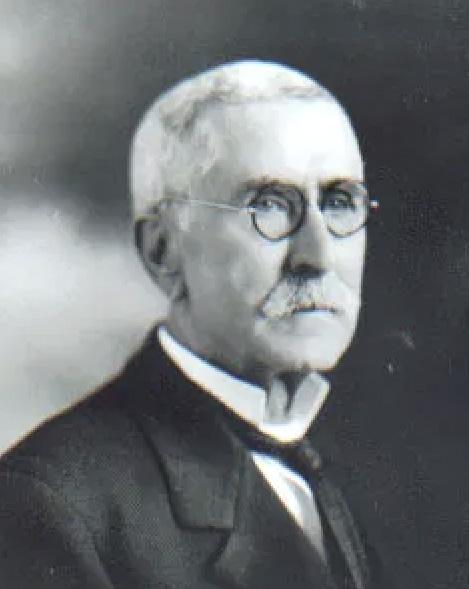
“These large porches were facing the water, and it was quite delicious,” Lord said. “It was also a time when people would go for vacations in the summer because before electricity, it was too hot, and so people would come to cool areas to cool off in the summer. Because of those springs, which are so cold, and it was down in the valley, Monte Ne was a perfect place.”
After Bryan lost the 1896 presidential election, the Democrats dropped the silver issue
Harvey’s plan was to build a cluster of hotels, or “rows,” named for Arkansas and the surrounding states with Arkansas at the William Hope Harvey
center and Oklahoma, Missouri, Texas and Tennessee around it. Only Hotel Monte Ne, Oklahoma Row and Missouri Row were ever completed.
At the time they were built, Lord said, Oklahoma Row and Missouri Row were the largest log structures in existence.
Harvey built a dedicated railroad to Monte Ne from the train station at Lowell. He also purchased gondolas from Italy and hired gondoliers to teach the locals how to pole passengers from the depot to the hotel.
“He billed Monte Ne as the only place in America where the gondolas meet the train,” Lord said. “People would come from all over America down into this cool valley. They could feel the changing temperature. The gondolas would meet them. They’d put their things in. They’d pole them down the little creek to the hotels, so that was the experience.”
Harvey also built the first golf course in Arkansas at Monte Ne, along with one of the state’s first indoor swimming pools. He bought a gas-powered boat to provide tours of the White River, organized hunts for foxes and other game, and hosted dances and a variety of other amusements.
Then, in the 1910s, the way Americans vacationed began to change. The popularity of the automobile brought about the great American roadtrip, and people began traveling to multiple destinations, camping along the way, rather than spending weeks or months at a resort.
“Coin was, you’ll hear him called eccentric or crazy. I’m telling you, I don’t believe he was,” Lord said. “He was conniving, he was a misogynist, but he was an entrepreneur, he was incredibly smart, and he knew
Harvey built the first golf course in Arkansas at Monte Ne, along with one of the state’s first indoor swimming pools.
how to make a buck, and so by the 19-teens, he started forseeing what was going to happen.”
Harvey improved the roads to Monte Ne and formed the Ozark Trails Association to improve travel throughout the Ozarks. However, it became clear to Harvey that the end was near for the resort and, with the horrors wrought by World War I and the Great Flu of 1918, perhaps all of civilization.
“I think he really believed it,” Lord said. “Some people don’t think that, but I think he did. He wanted people in the future, after the fall of civilization, to know that he knew it was coming.”
He planned to build a “pyramid,” although it was closer in shape to the Washington Monument, at Monte Ne. At the tip of the monument would be a sign that said “If you can read this, dig below to find out what happened.” At the base would be two chambers. The top chamber would be filled with political books authored by Harvey, and the bottom chamber would be filled with items such as encyclopedias, a sewing machine and even a car.
He built a retaining wall on one side of the site, and on the other, he built an amphitheater where people could buy tickets to hear Harvey talk about what he was building and why. Harvey never

Harvey constructed an amphitheater where people could gather to hear his plans for the monument, but the monument was never completed.
completed the pyramid, however. The Great Stock Market Crash of 1929 made it impossible to raise the money.
Harvey returned to his political aspirations, running for president in 1932 as the candidate for the Liberty Party, which he founded and which hosted its national convention in Monte Ne in 1931.
In 1936, Harvey died of pneumonia and was buried in a tomb with one of his sons, who died in a railroad accident in 1908. The tomb was later moved and can still be seen today in modern-day Monte Ne.
Prior to constructing the amphitheater, Harvey sold the resort, which went on to serve as a girls summer camp called Camp Joyzelle and the Ozark Industrial College and School of Theology.
In 1965, the construction of Beaver Lake flooded the resort except for Missouri Row and Oklahoma Row. Remnants of the hotels can still be seen, and when the water is low, parts of the amphitheater and the first foundation for the Hotel Monte Ne are visible, as well.
Lord said it is ironic that the most visible and well-preserved remnant of Monte Ne is Harvey’s tomb. He was an egotist, she said, but he was a savvy businessman, and she said she plans to set the record straight in the biography she is writing that he was not insane.
“Most people see him not only as, possibly — this is debatable — being on the right side of that silver issue in the 1880s and ʼ90s,” she said, “but being a great businessman, a great promoter, understanding a lot of things in the world and adapting to them, being the person who really started to promote, got others to promote tourism and road development in the Midwest and Southwest and, you know, a visionary in some ways.”
By Mark Carter
An old sports-writing buddy of mine, with whom I sewed my newspaper oats in Fort Smith some 35 years ago, had tickets to the first- and second-round sessions of this year’s March Madness at Ball Arena in Denver.
About 10 years ago, we had embarked on a tradition of meeting up once a year to relive our early-20s glory days and catch a game, either here or in his native Colorado. We’ve been to Razorback games in Fayetteville and Little Rock (the year they ran out of bottled water in early September) and to CU games in Boulder. I’d recommend Folsom Field as a bucket-list destination for any football fan.
We had been scheduled to meet up this past October in Denver and then drive up to Laramie for a Wyoming Cowboys game. Mike had promised a gridiron setting equally as impressive as that found in Boulder. Unfortunately, a death in the family forced a change in plans.
Denver, BYU brought the most fans — relative proximity and all — with the cheeseheads coming a close second.)
March Madness has earned its status as one of the country’s most prominent sporting events, and it obviously represents the NCAA’s primary, if not lone, reason for still existing. The cheapest items to be had at the concession stands were March Madness key chains and decals for $10 each. Generic March Madness T-shirts were $50 to $70 for long sleeve — and prices didn’t drop at the beer or food stands. I can only imagine how much money was made off concessions over the four sessions and two days.

Watching on my phone at the arena as the Hogs finished off Kansas and then Saint John’s across the country in Providence, many random fans approached to share a “Go Hogs” or even a thanks. There are benefits to being an underdog, after all.
Mike suggested March Madness as an alternate plan. (Now that’s what I call a Plan B.) He had gotten tickets to the first- and second-round games held this year in Denver, and my arm didn’t require twisting.
The Hogs’ late season run had me holding out hope for a chance to call ‘em in the Mile High City, but alas, the selection committee seems to relish sending Arkansas as far from home as possible.
Nevertheless, this was to be my first NCAA tournament experience in person, and Hogs or no, I was ready. Decked out in Razorback gear for each session, I didn’t stand out quite as much as I anticipated — I saw at least a dozen fellow Hog fans. It was fascinating to move about the arena, the former Pepsi Center now named for a Denver aluminum company and, of course, home of the NBA’s Nuggets, and see the hodgepodge of fandom representing teams from every corner of the country. Not only were there fans of the tournament teams assigned to Denver — Michigan, BYU, Texas A&M, Wisconsin, Montana, VCU, Yale and UC-San Diego — but we saw fans representing schools from Rhode Island to Eastern Washington. (Interestly, of all the fans whose teams were not playing in Denver or at all, I’d say Hog fans were the most numerous. Of the schools playing in
As expected, this spring’s trip represented a pretty cool chapter to our annual pilgrimage. Mike and I had worked together as sportswriters for the old Southwest Times Record in the late 1980s and early ʼ90s. Until about 10 years ago, we had kept in touch but hadn’t seen each other in a long while.
During our Fort Smith days, he had the Northside beat, and I had Southside. We were lucky enough to cover the Grizzlies and (pre-Maverick) Rebels in the Joe Fred Young and Barry Lunney Sr./Jr. eras, when both schools were state title contenders on the state’s highest level (then AAAA) each year.
Back then, as early to mid-20-somethings with no money but also no debt (yet) and no worries, ours was indeed the life: work till midnight, fall into bed at 3 a.m. (after doing community service work, of course), sleep until noon, eat lunch, go to work at 2 p.m. and repeat.
Mike eventually answered the call home — he got a job as sports editor of a paper in suburban Denver — but our memories never faded. We’ve lost touch with most of our running buddies from those old Donrey days, but I’m grateful that Mike and I kept in touch.
The next chapter of our annual adventure has yet to be planned, but I’m thinking … neither one of us has been to an Army-Navy game.




























































































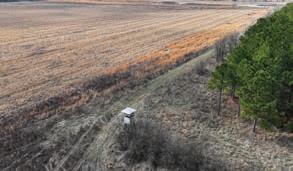




























Conway Regional has a vision. For more than a century, our team has brought together key service lines, providers, and technologies to create patient experiences that are highly intentional and refreshingly personal. It’s about blending access and excellence. Familiarity – and erce commitment. Advocating for patients while providing the services our communities deserve. See what curated care looks like for you.

